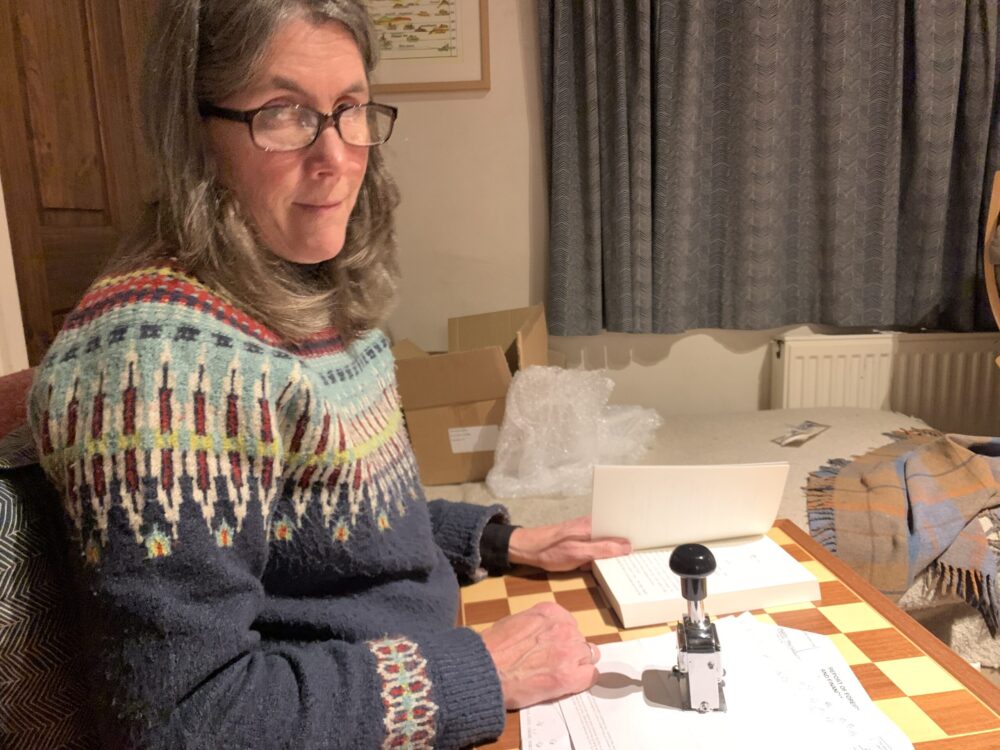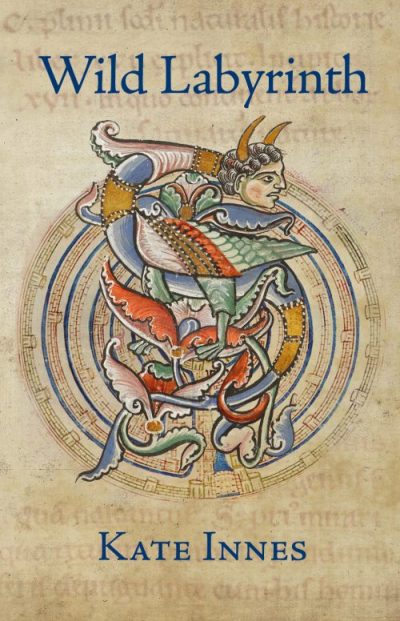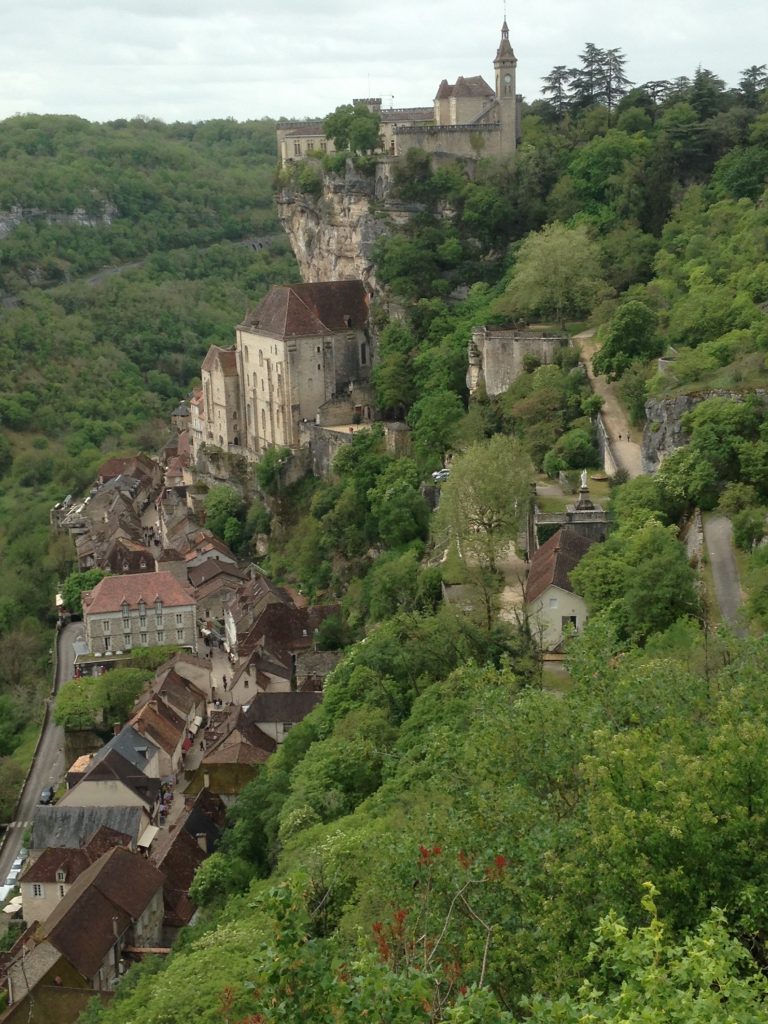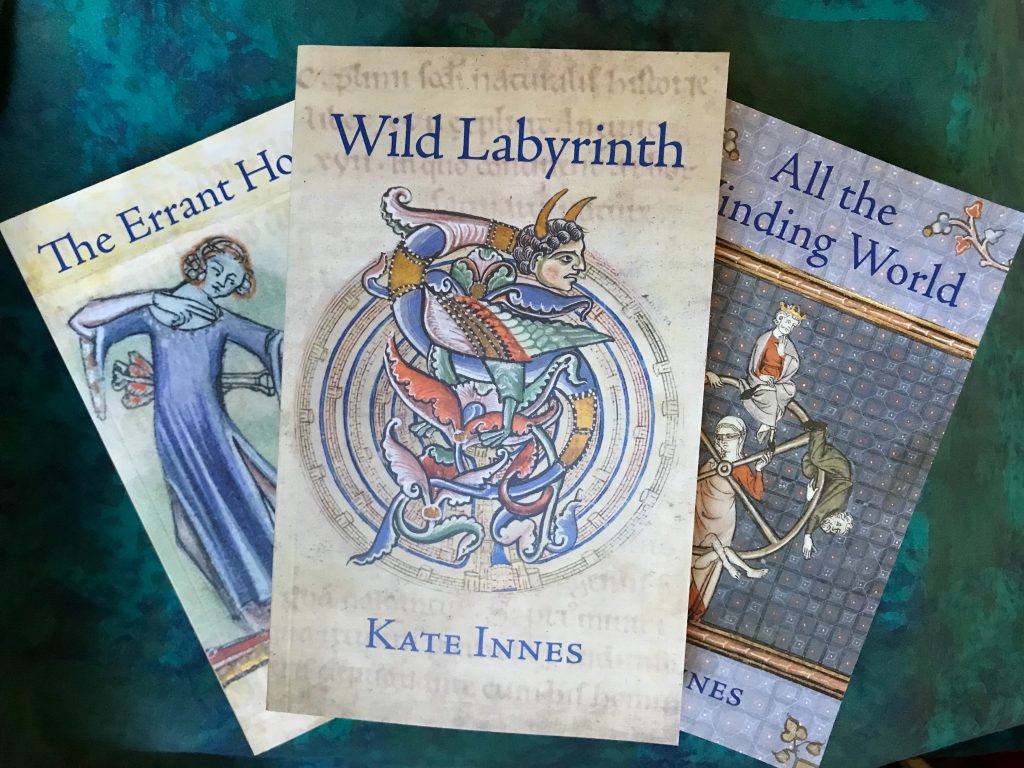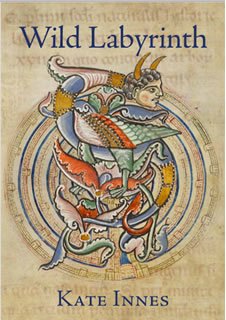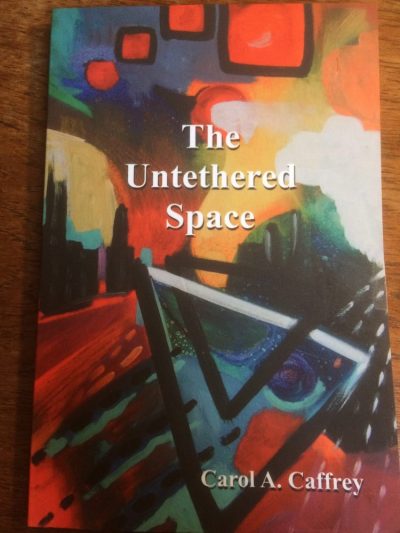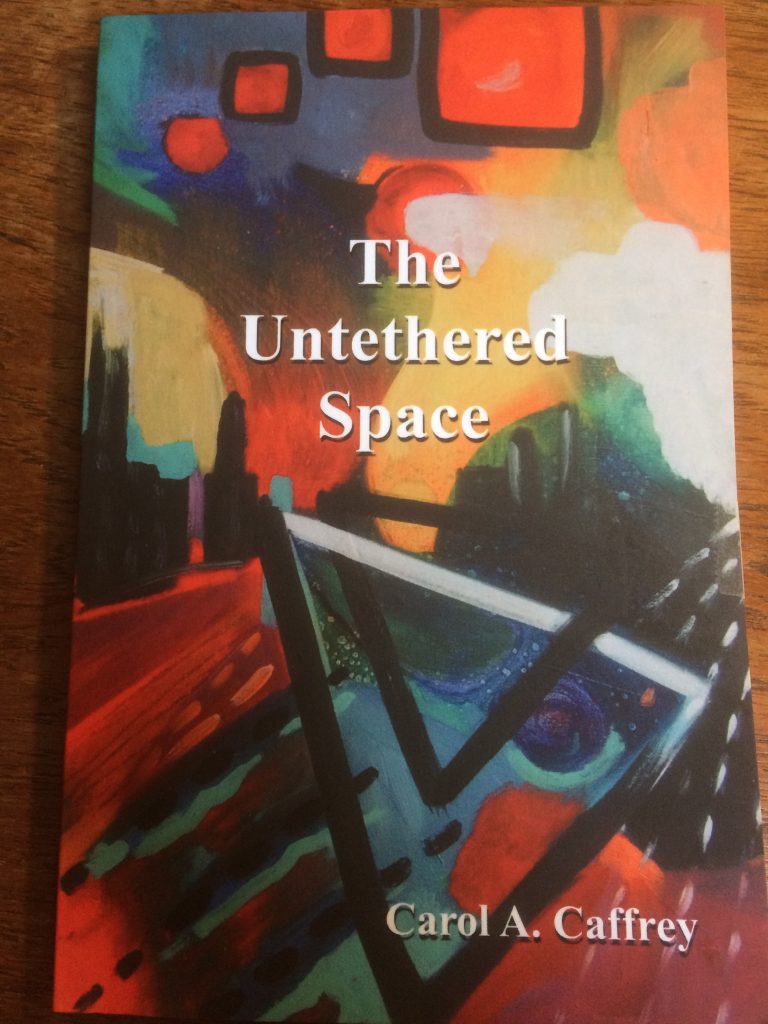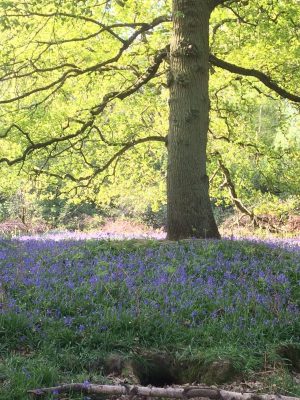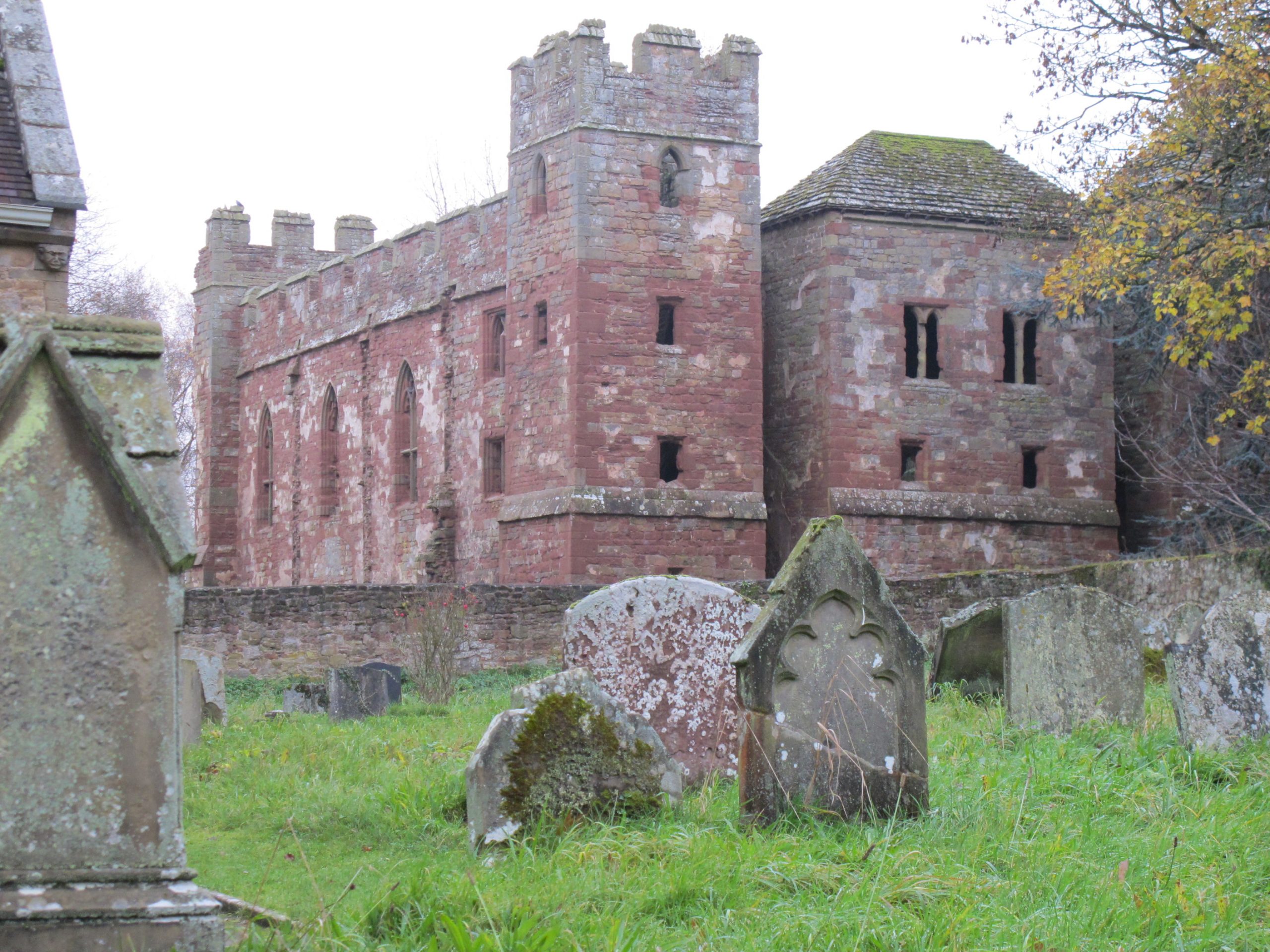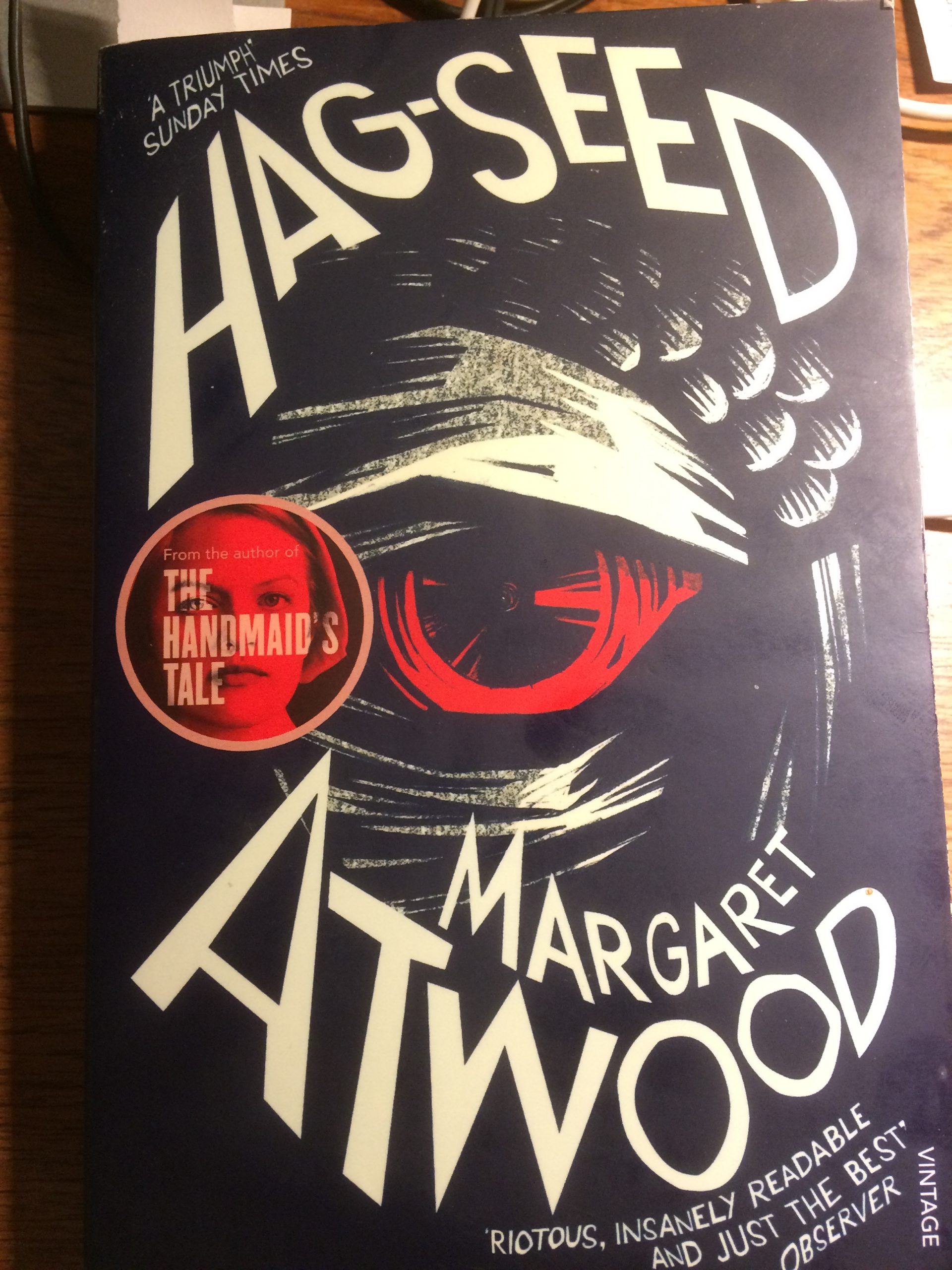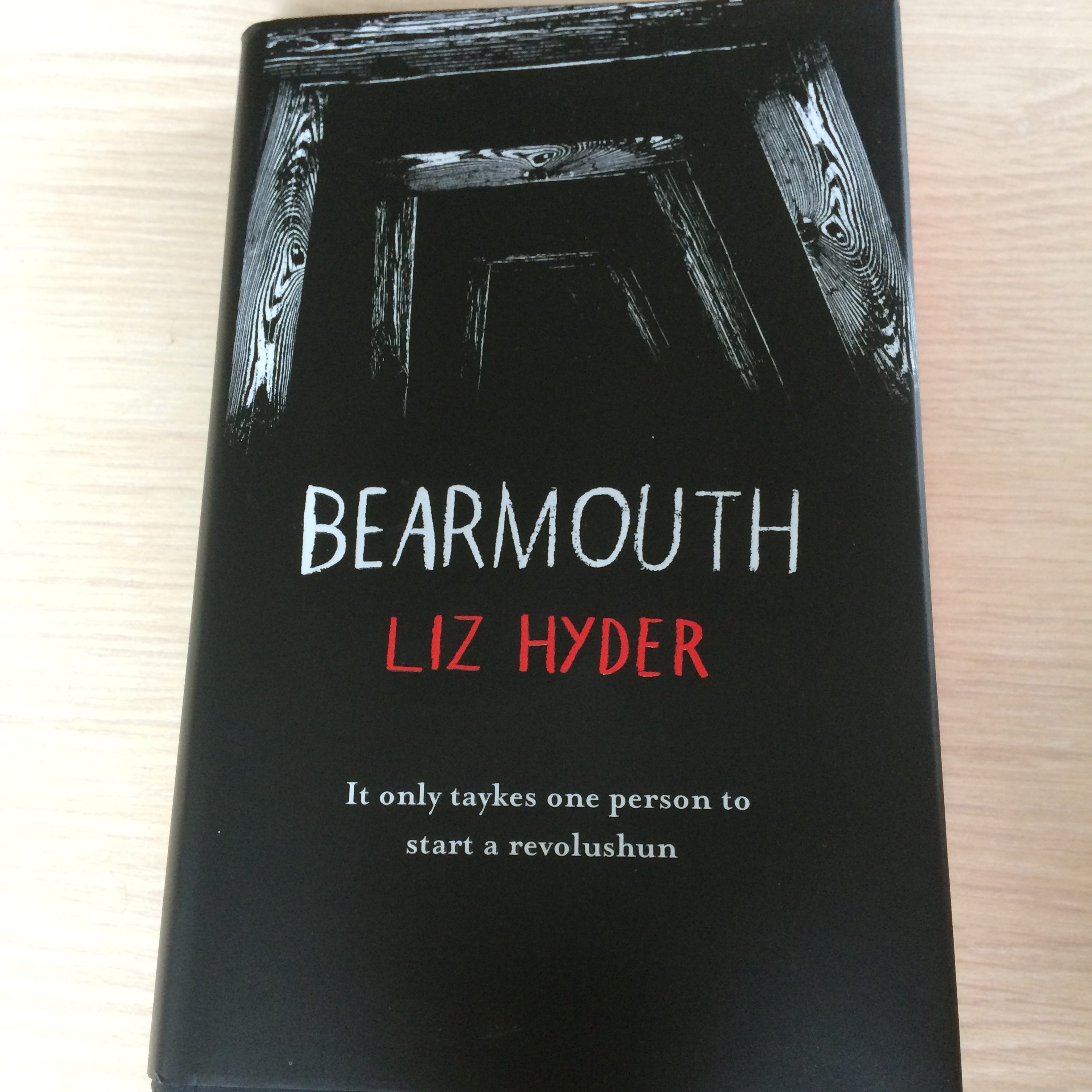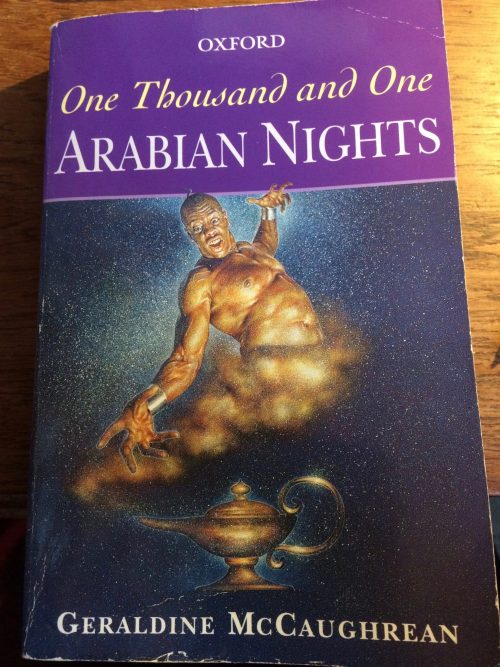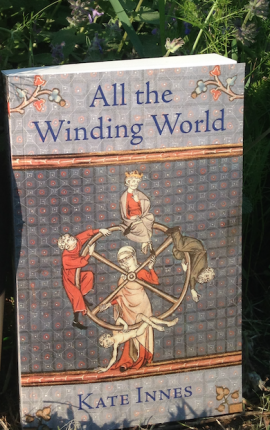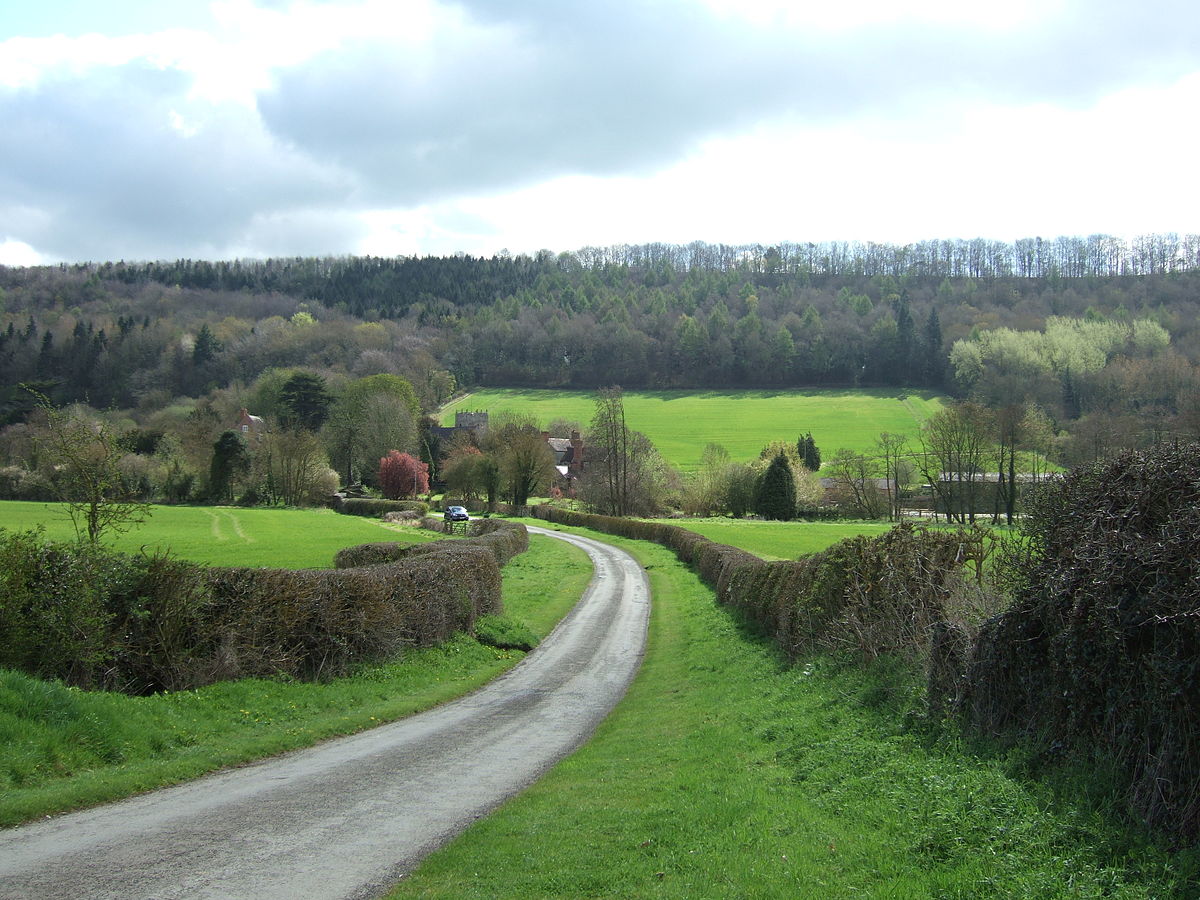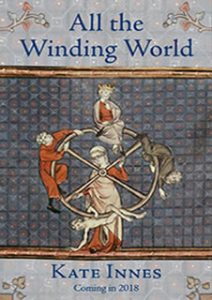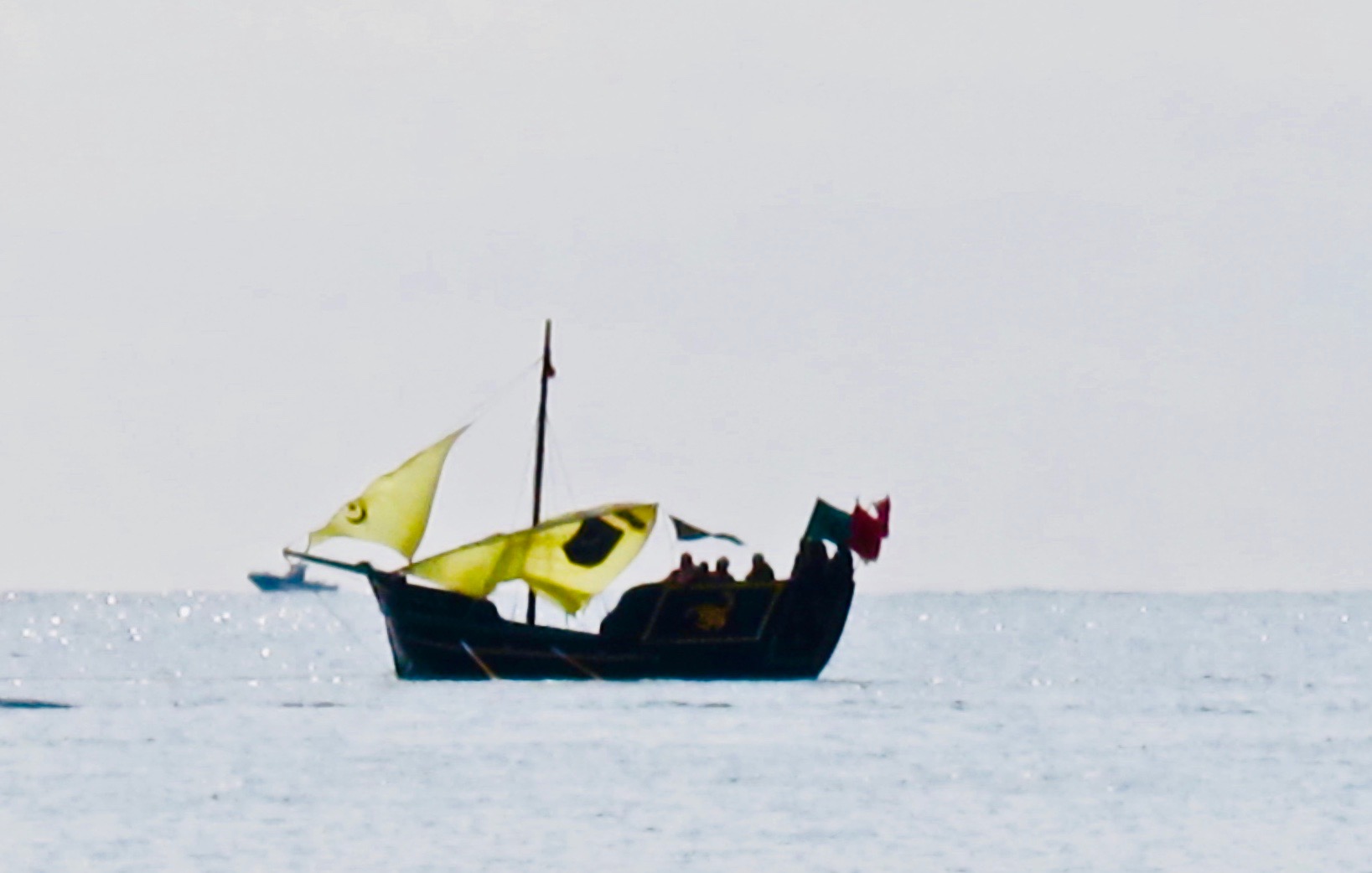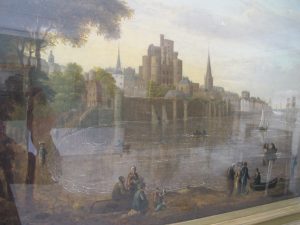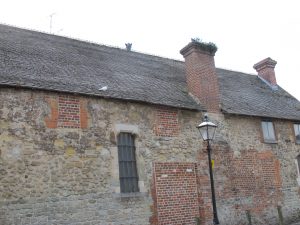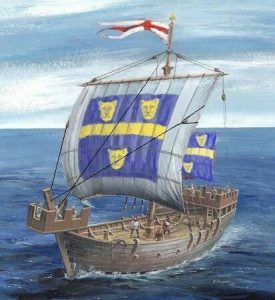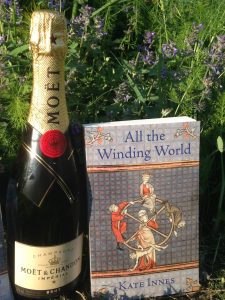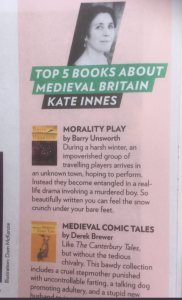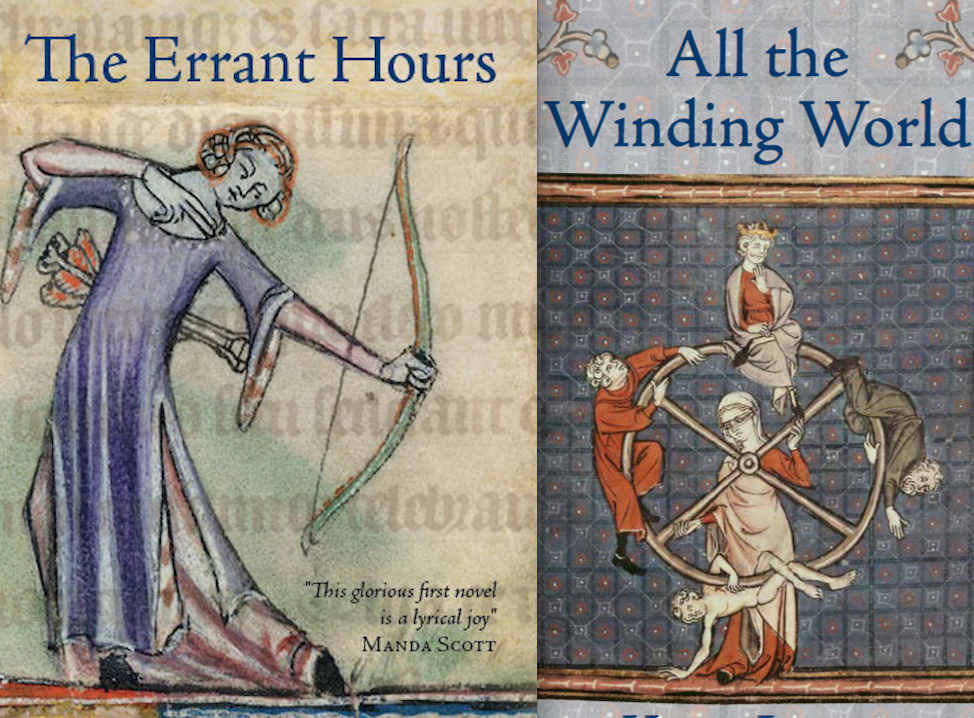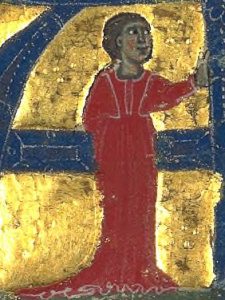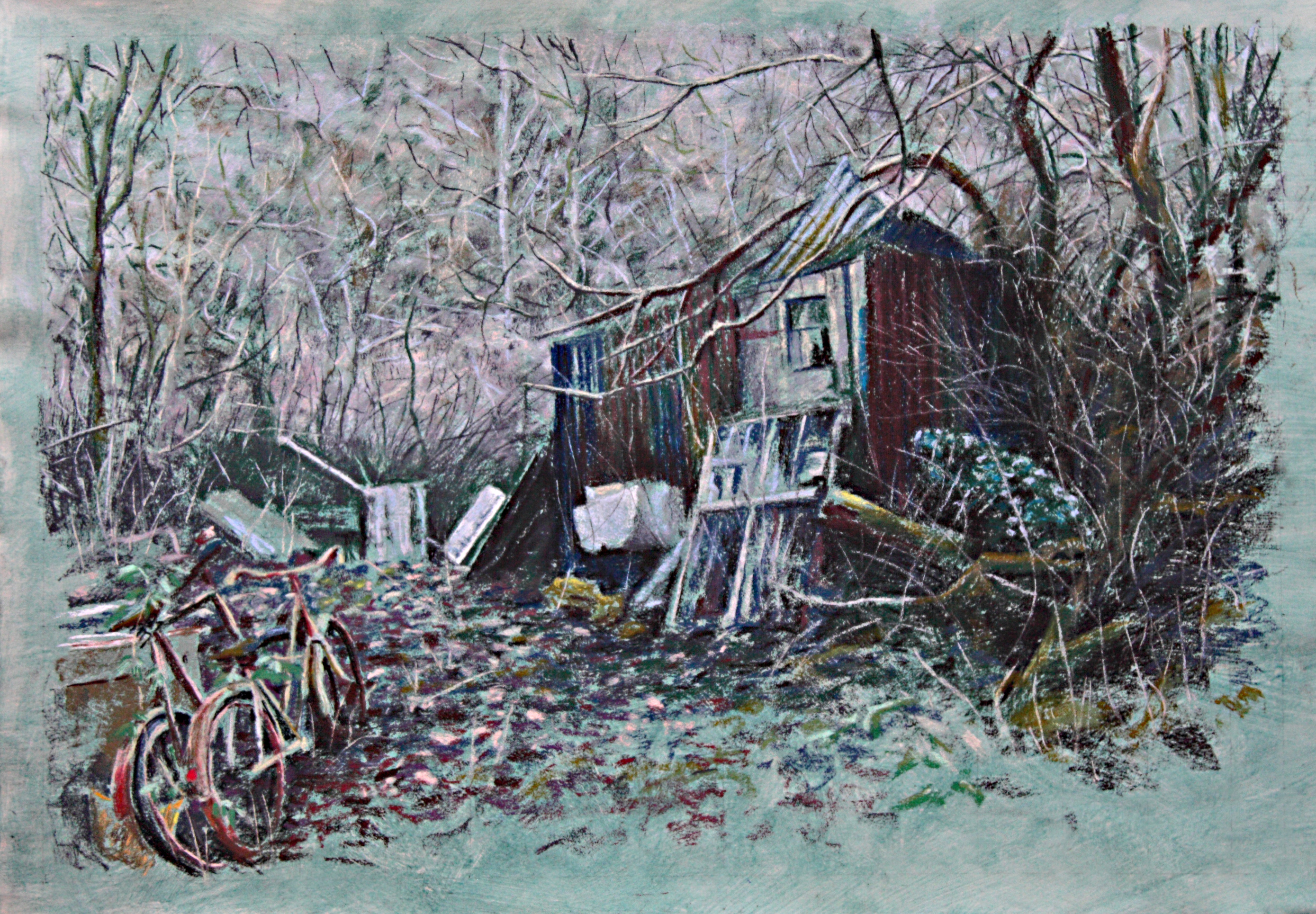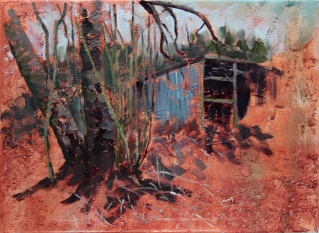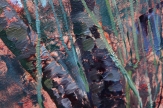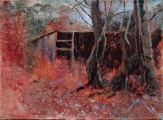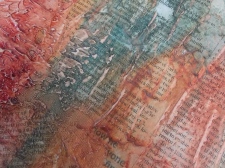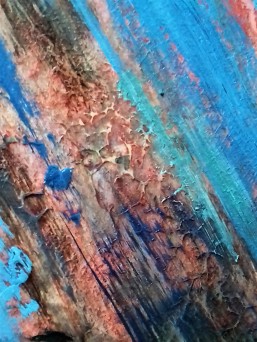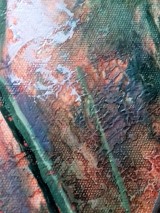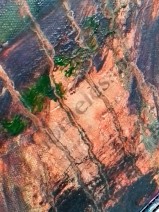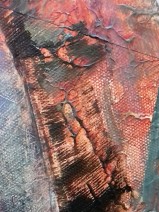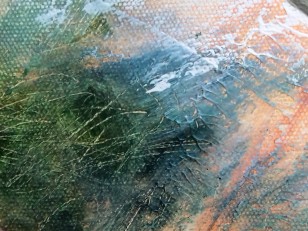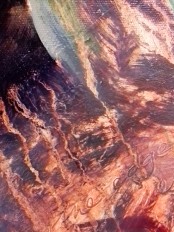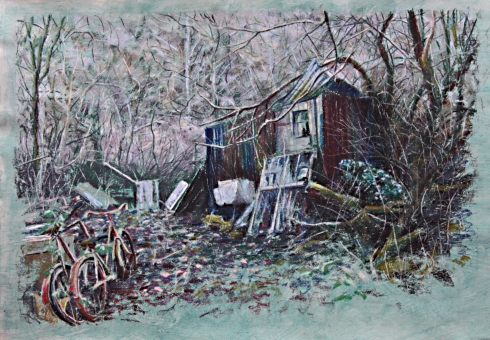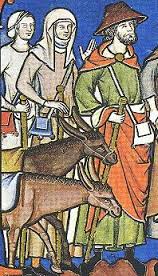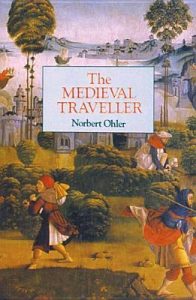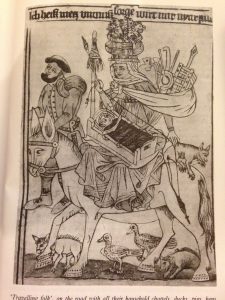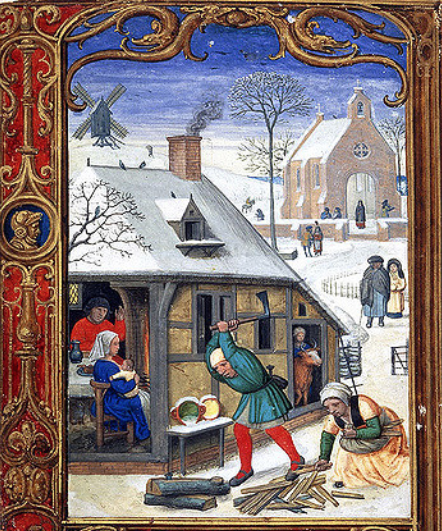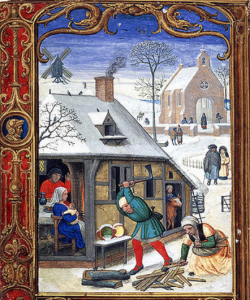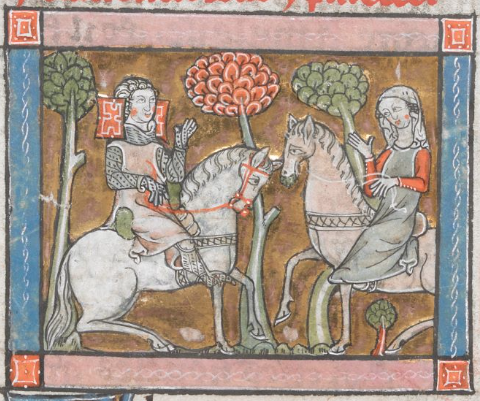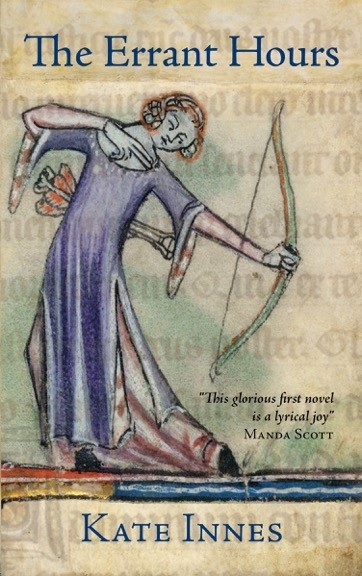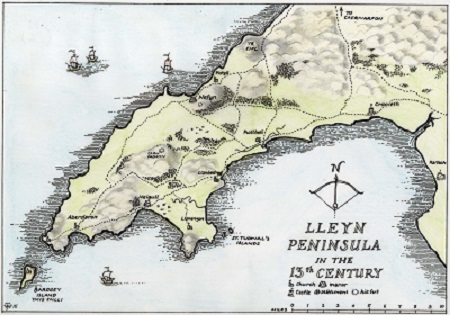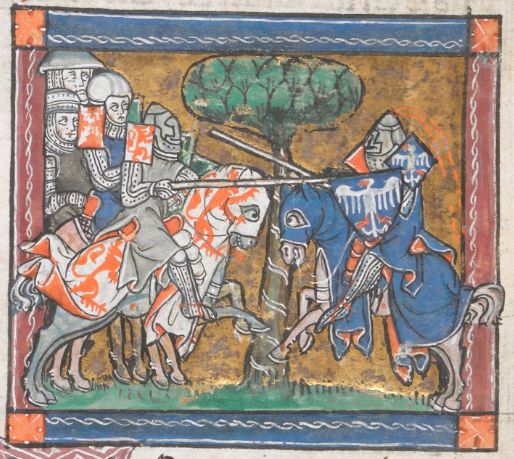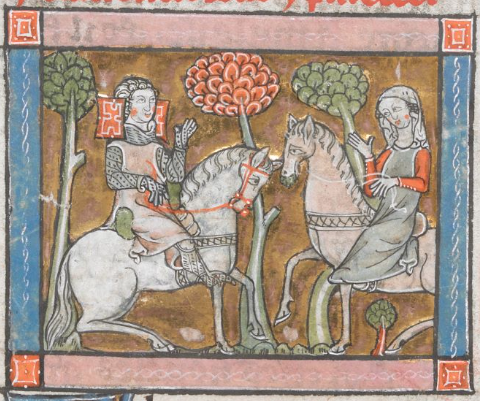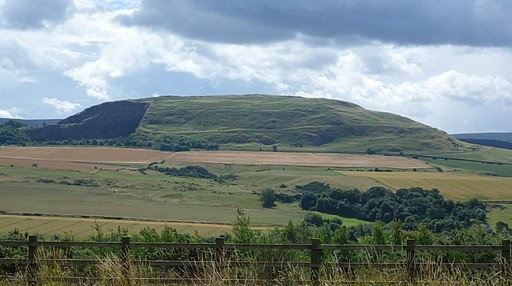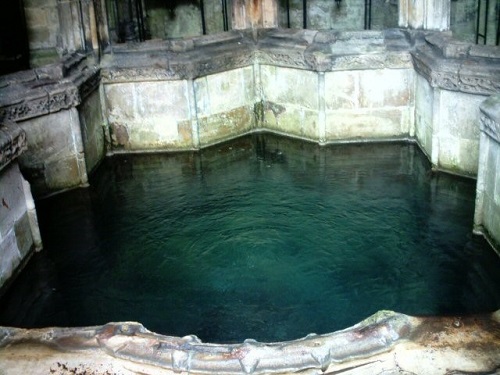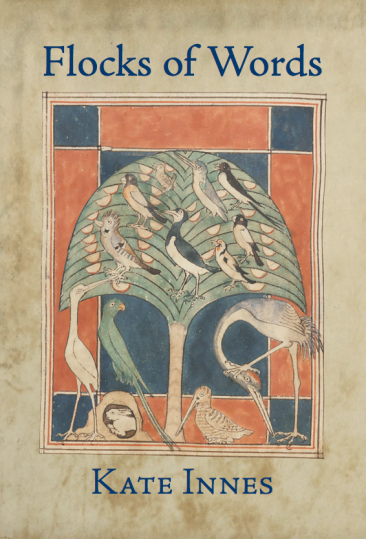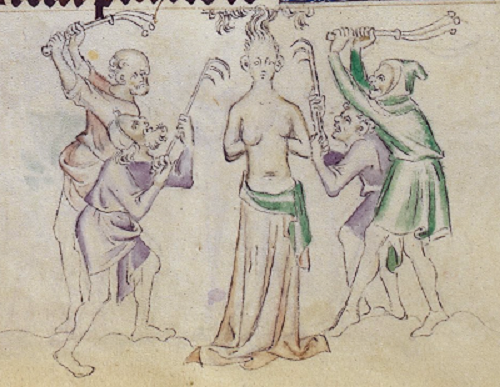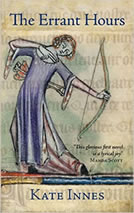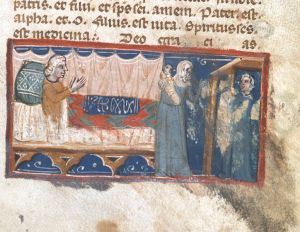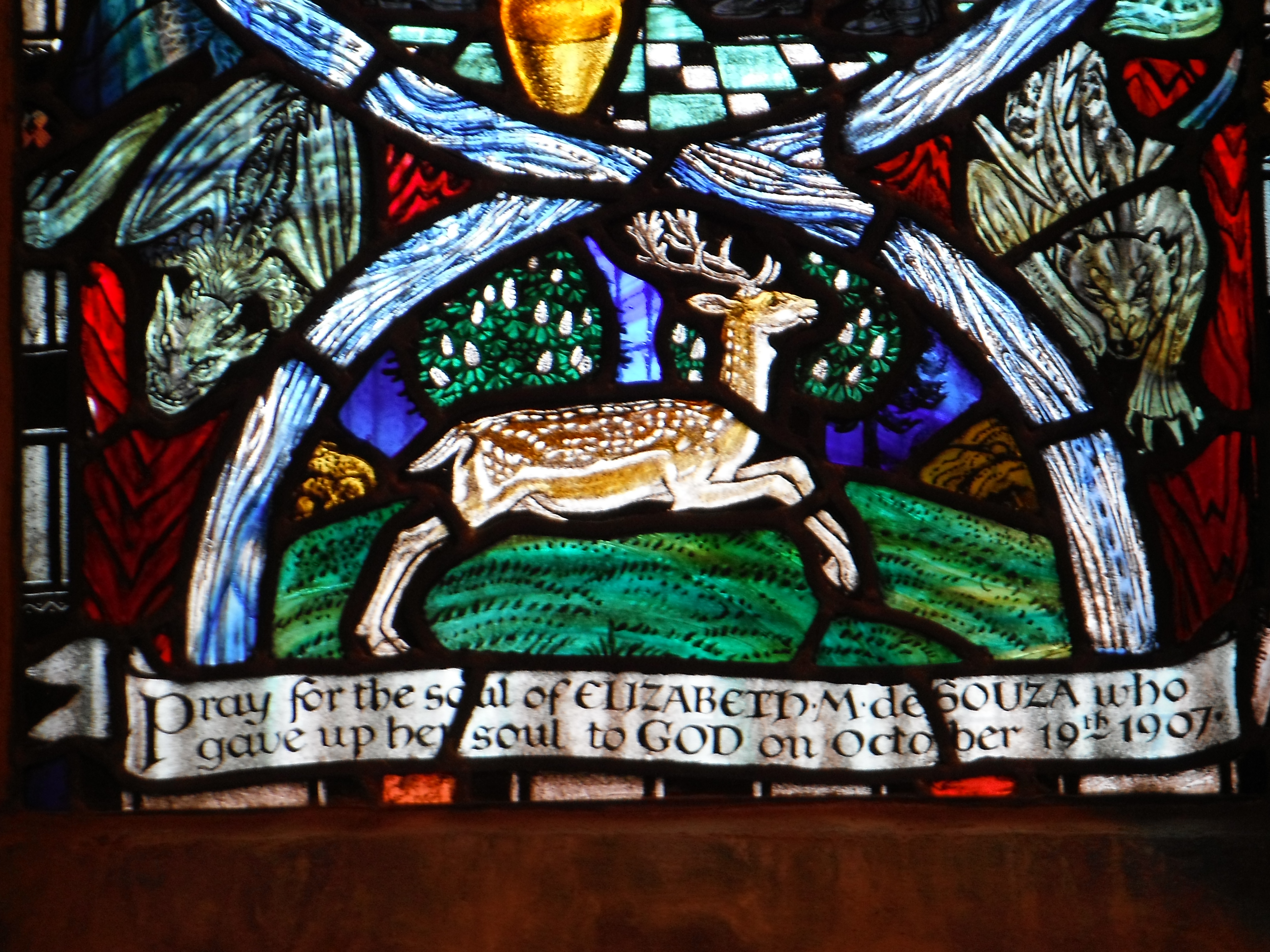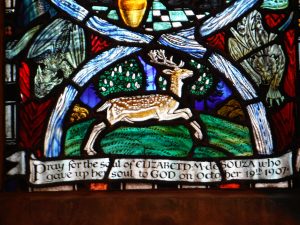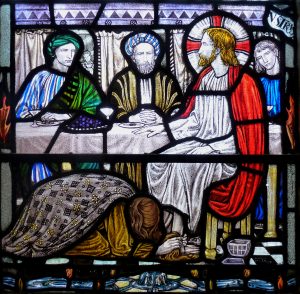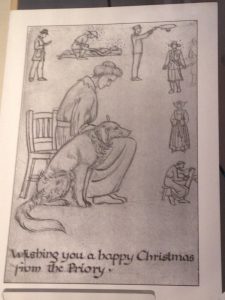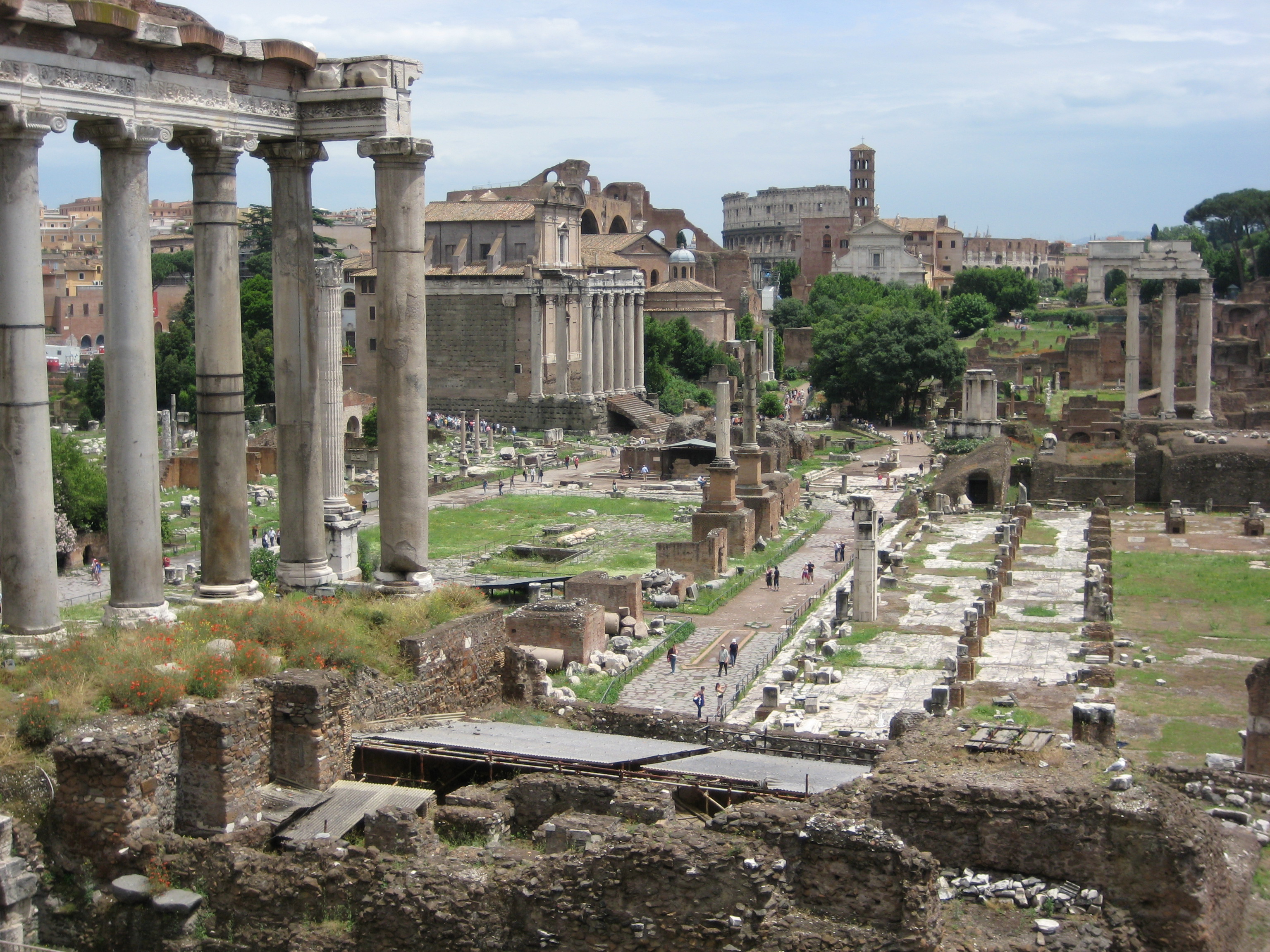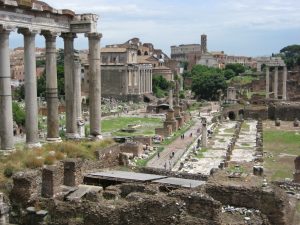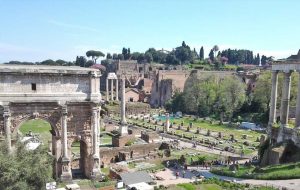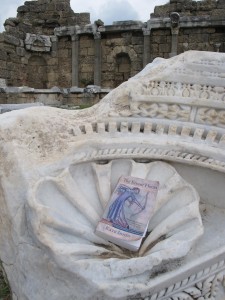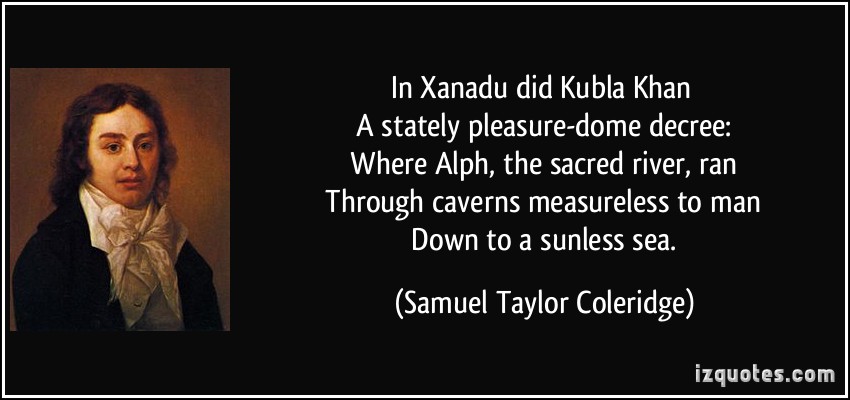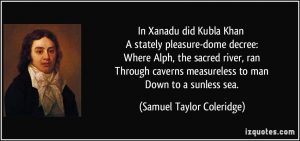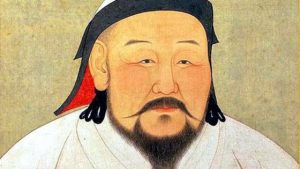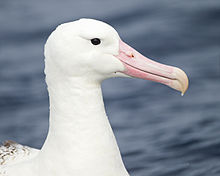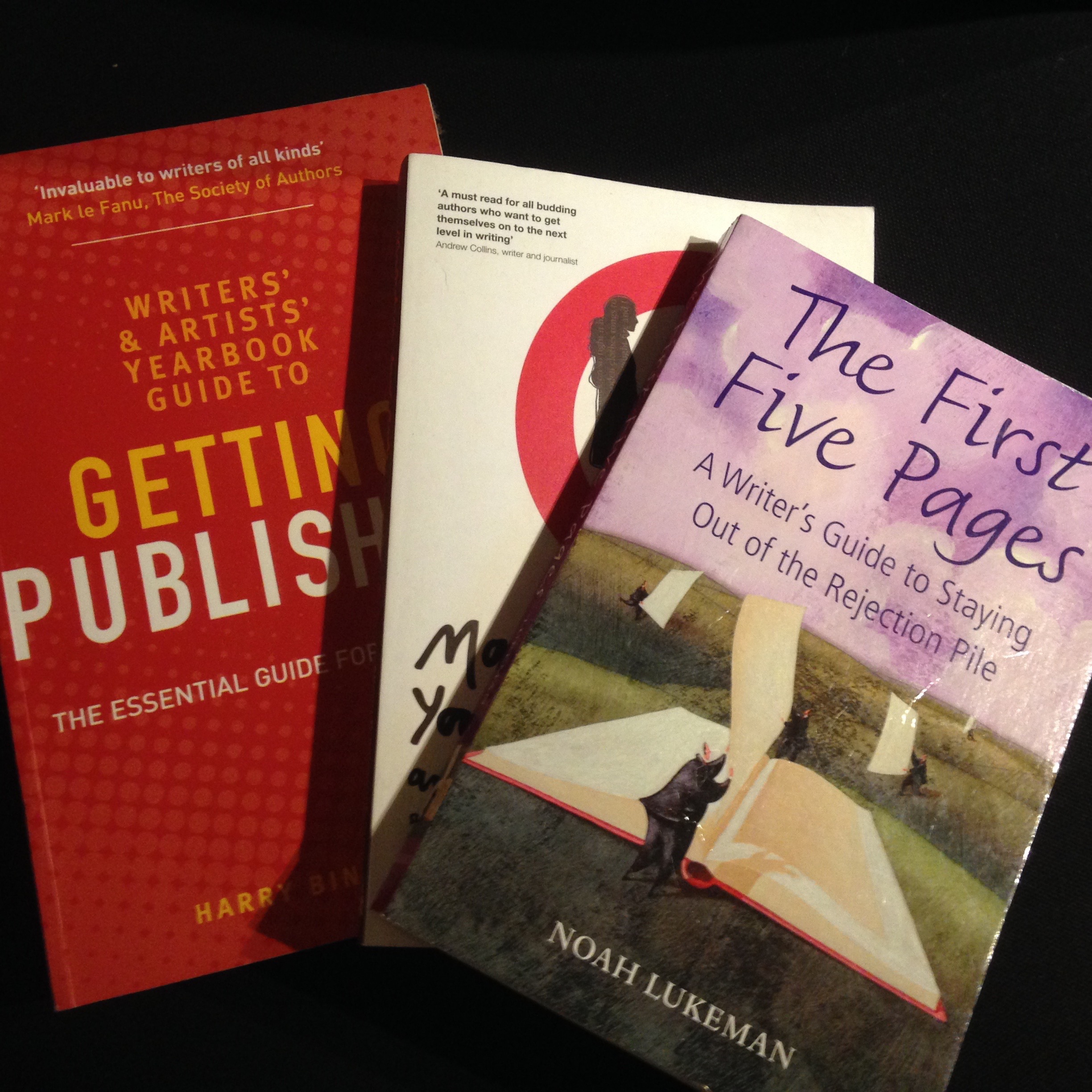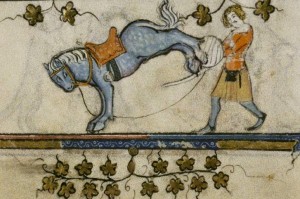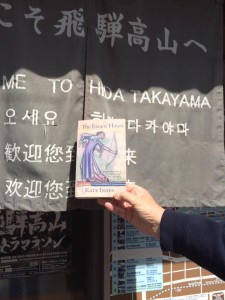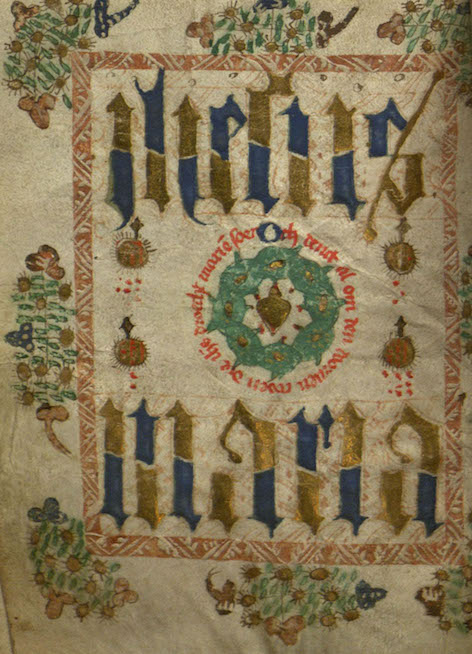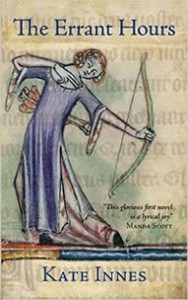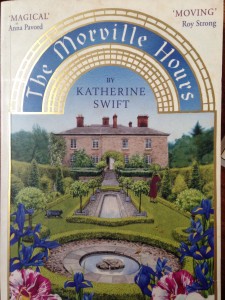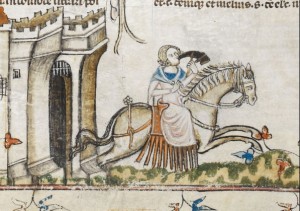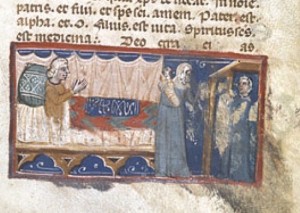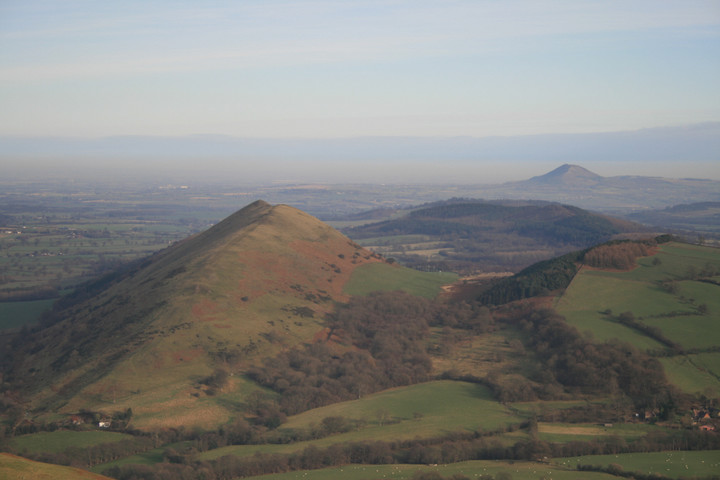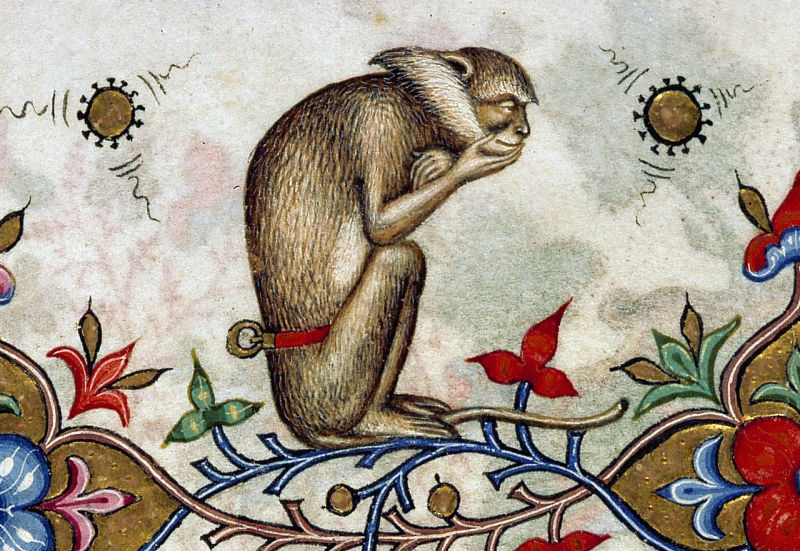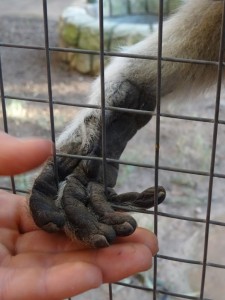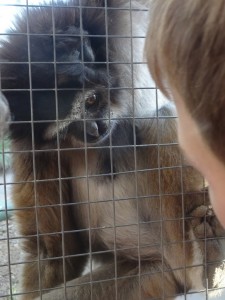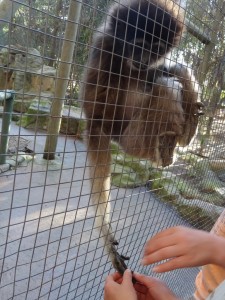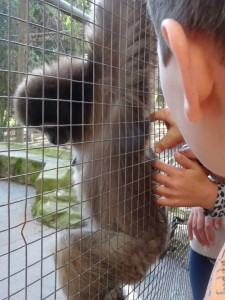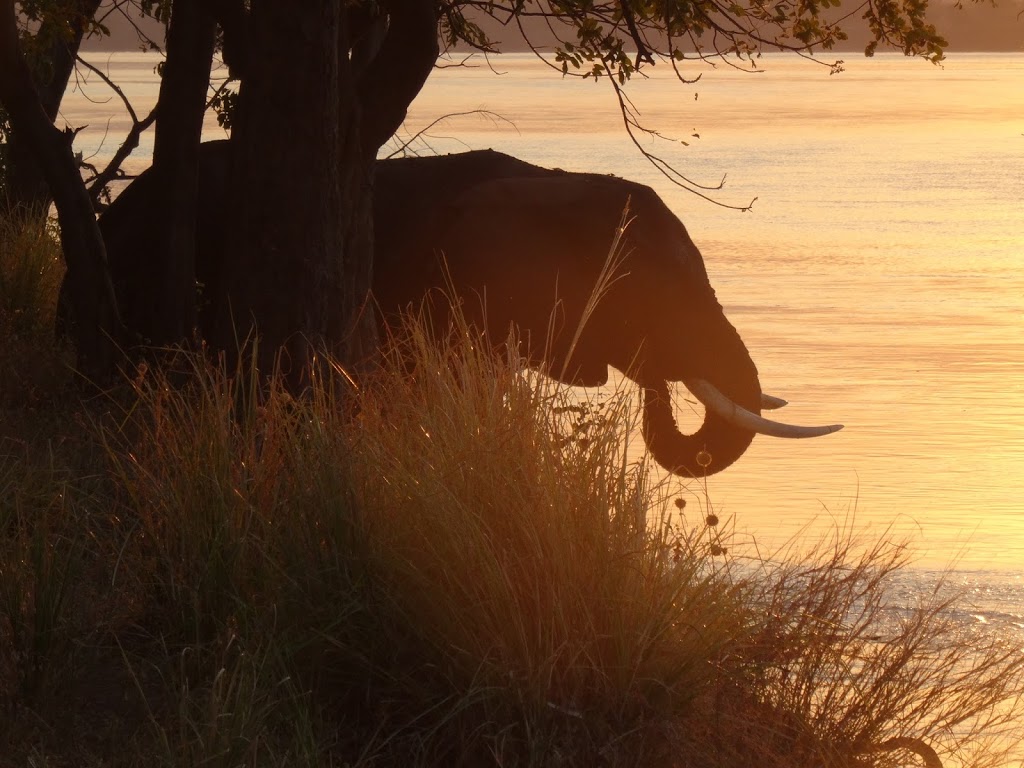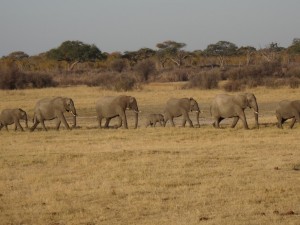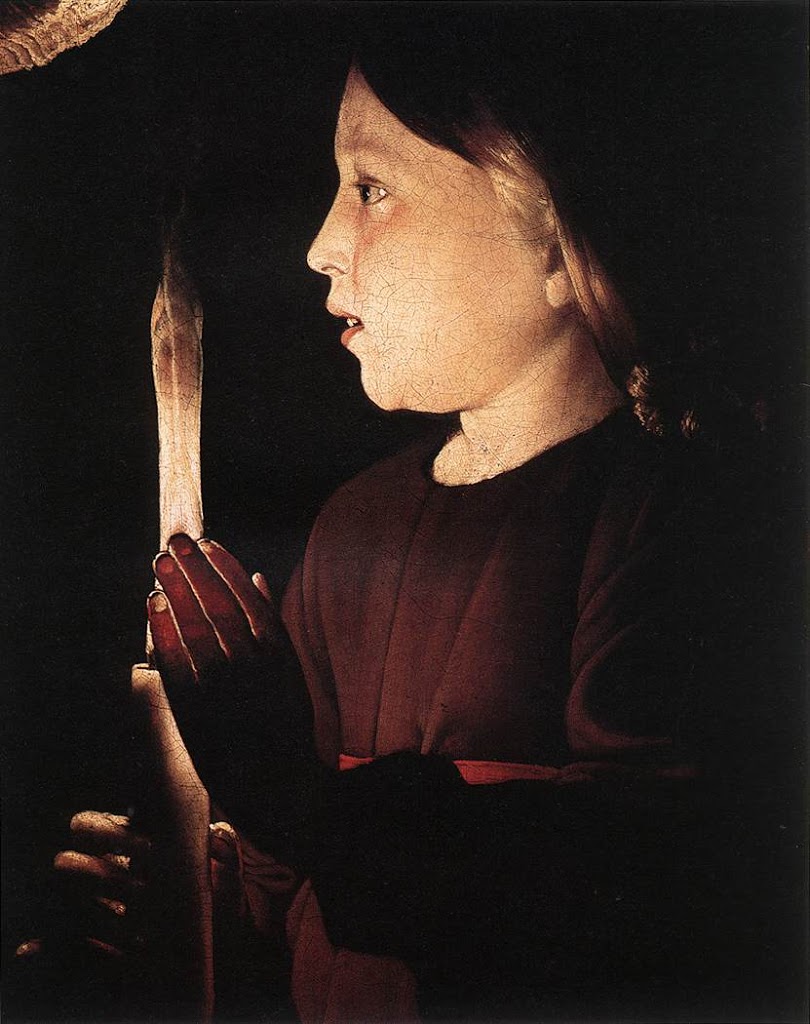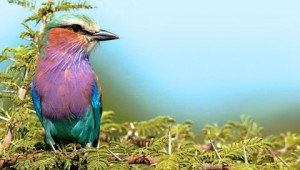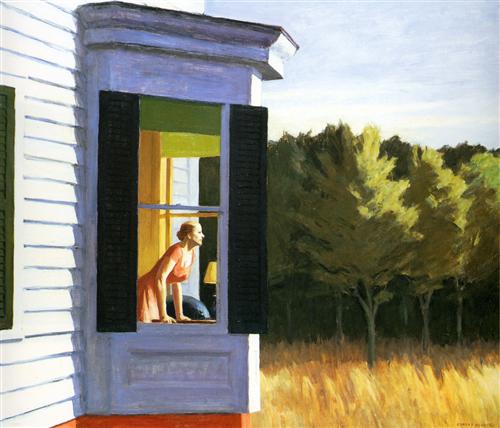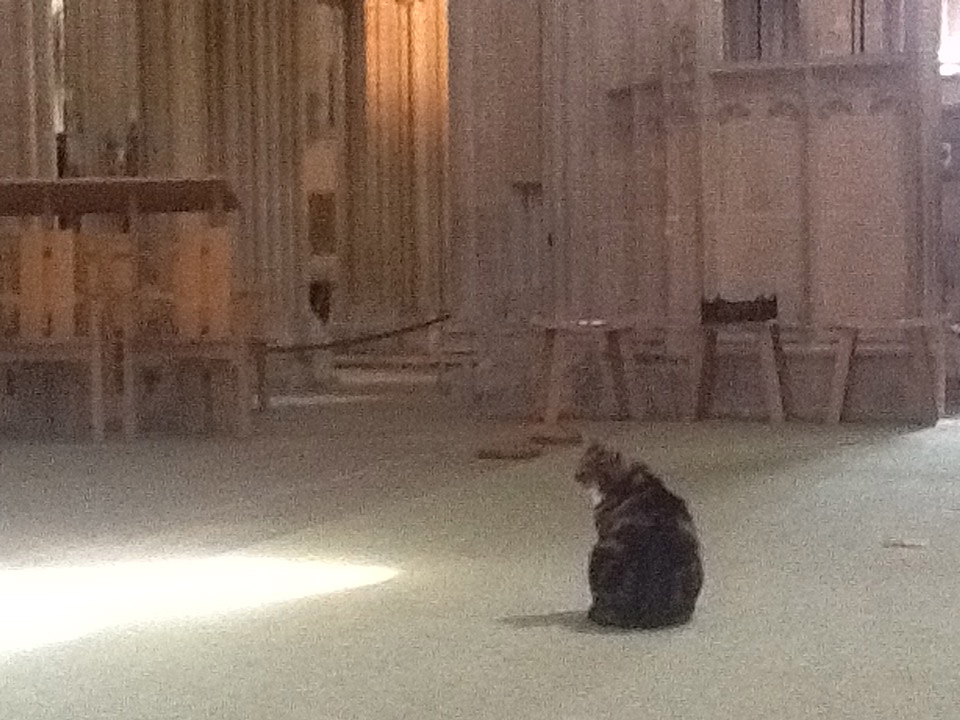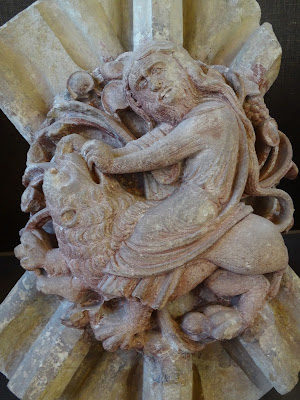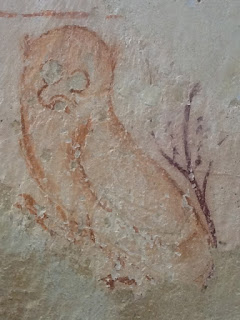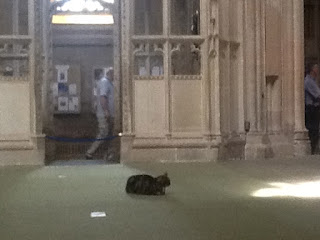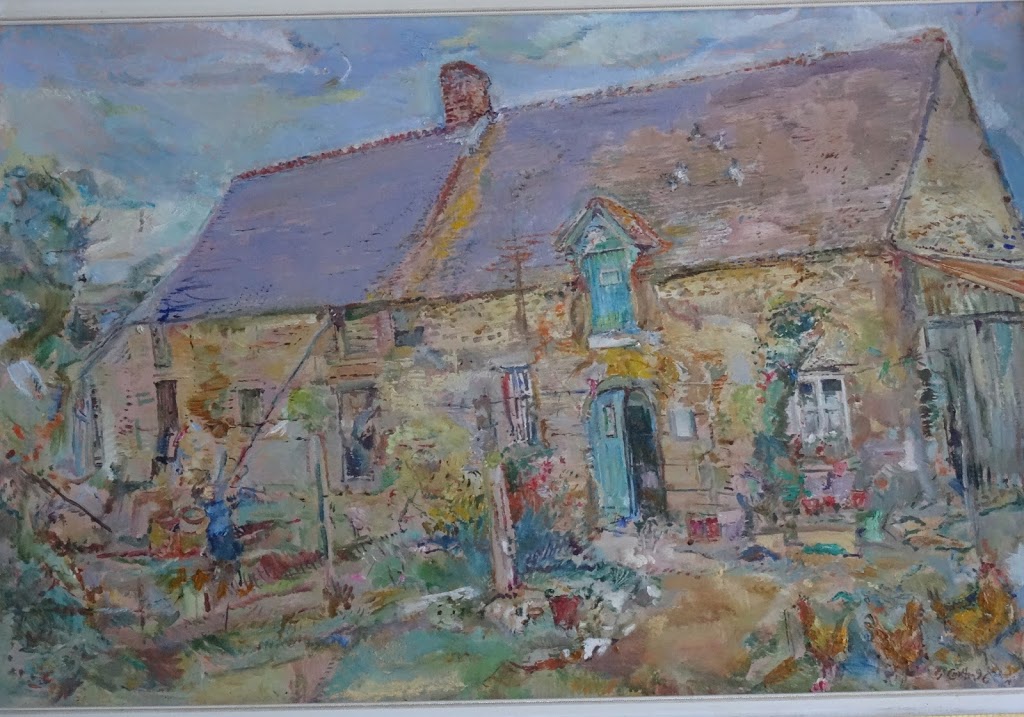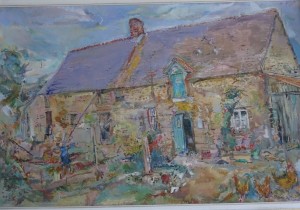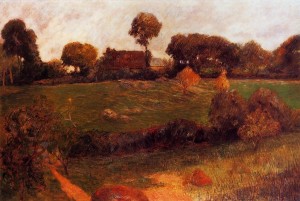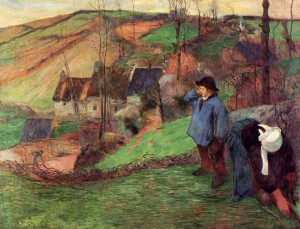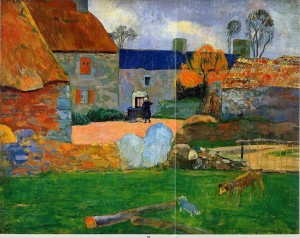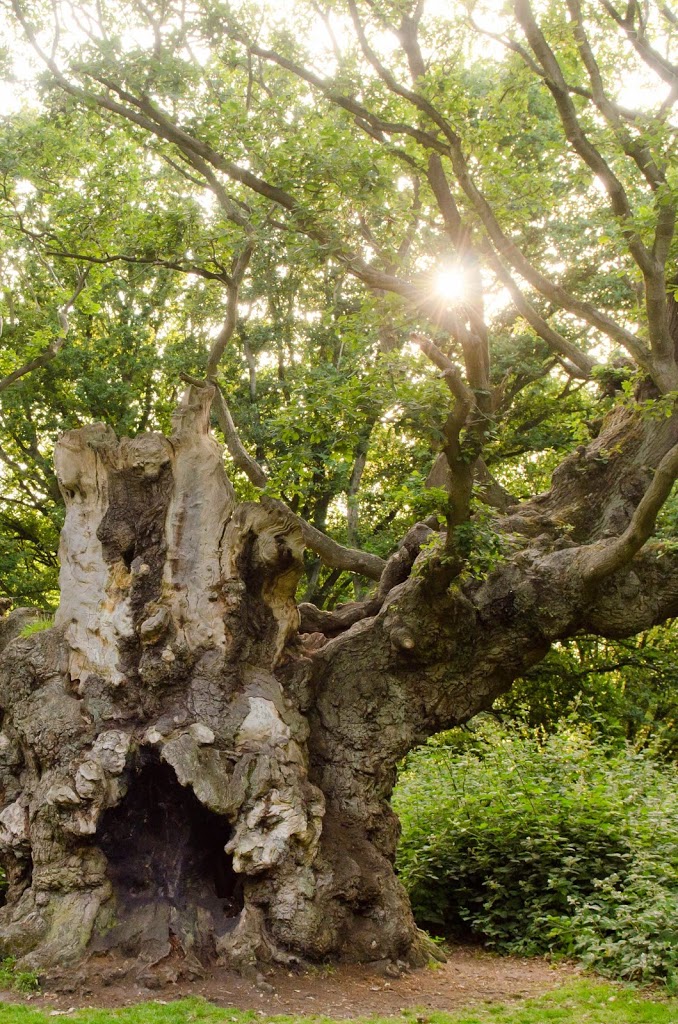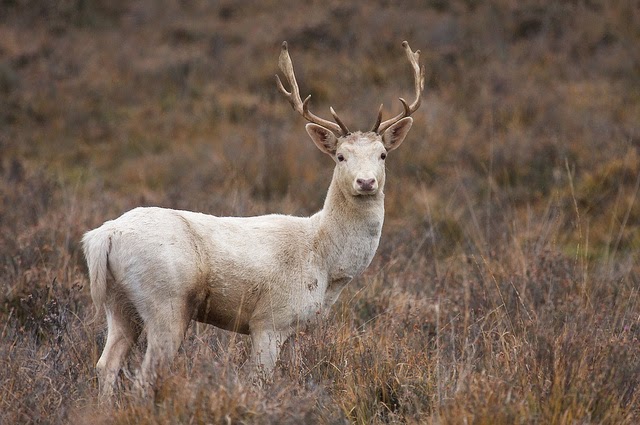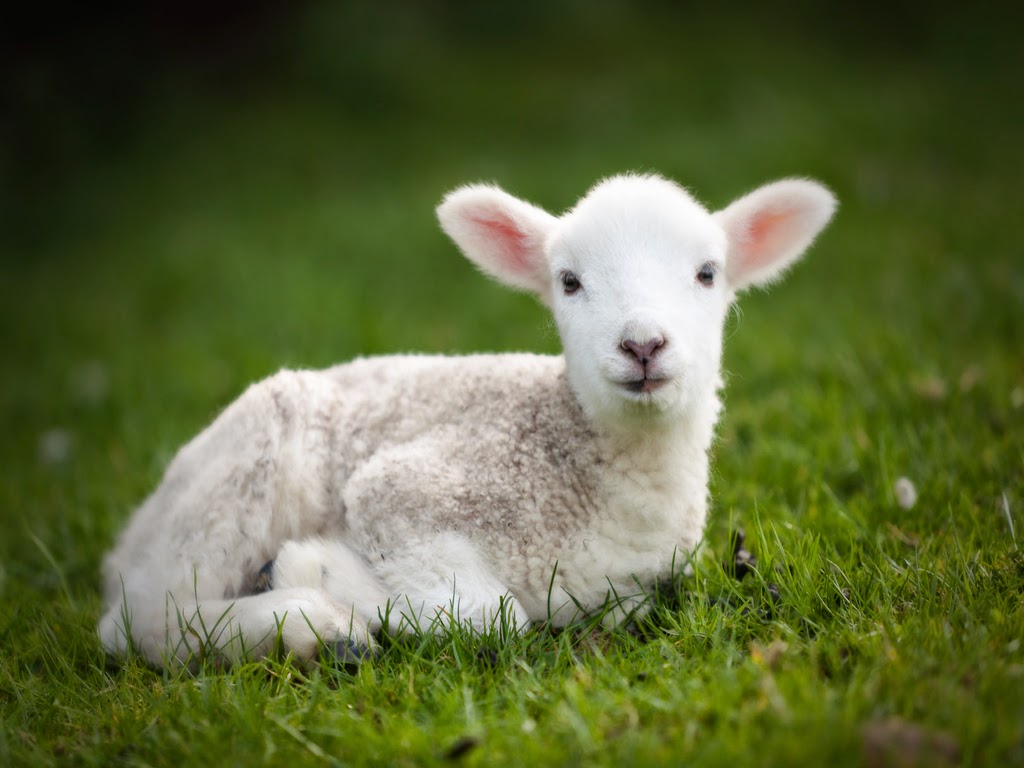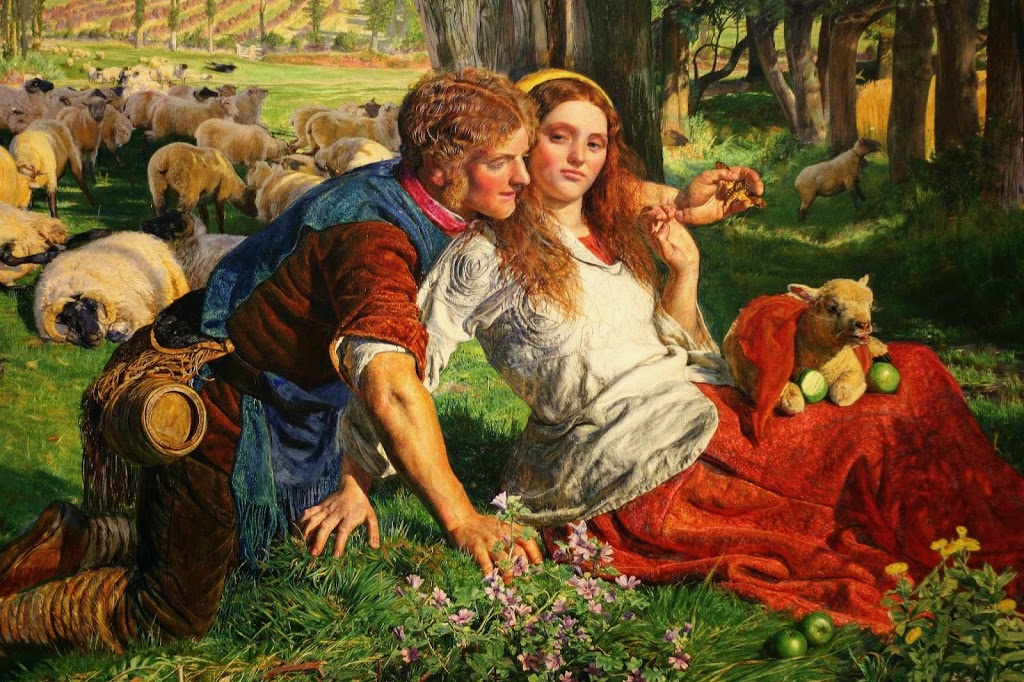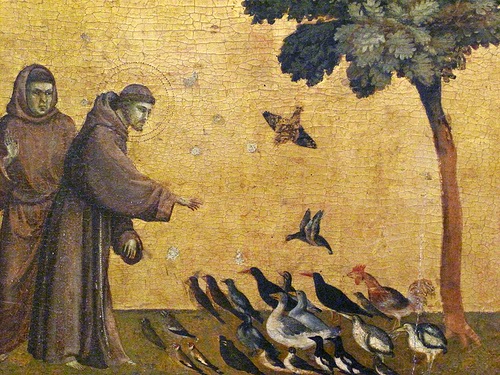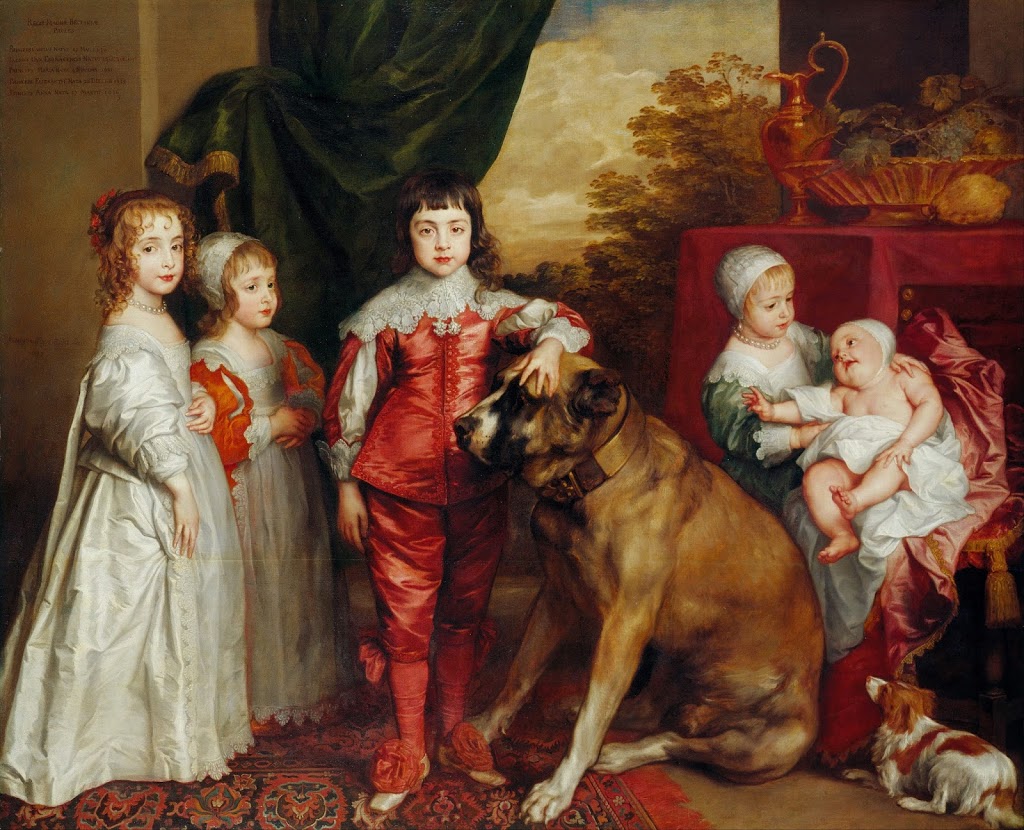Creative Writing for the New Year
Are you thinking about spilling some ink this year? Or maybe you prefer the keyboard?
Either way - writing can be a great way to get things off your chest. Expression is very important for mental health. For some people that happens through music making, acting, sport, home decoration, conversation, DIY, craft or art - but for some of us - writing is the best way to get those thoughts and feelings out.
As a follow up to my conversation with Clare Ashford on Radio Shropshire on 3/1/24 at approx 11:20 get (link) I have compiled this list of creative writing courses and opportunities in Shropshire or Online over the next few months. There's lots to choose from and all the instructors are writers I know and trust. They will be reliable guides into the surprising and exciting realm of your creative subconscious.
I'm also thinking of offering a writing course later in the year - once I've finished editing my next book. If you'd like to hear about that and other opportunities/events - do sign up to my email newsletter. I only send out emails about 6 times per year, and promise not to clog your inbox with junk!
So scan the opportunities below and see which appeals. I began my journey into professional writing with a course at the Gateway Arts Centre in Shrewsbury. Maybe one of these opportunities will turn into a lifelong joy for you, as it did for me!
Online 10 week Creative Writing class taught by the excellent Janie Mitchell through Adult Learning Wales on Wednesday mornings. Free if you live in Wales - £162.50 fee if not. https://www.adultlearning.wales/en/course/51957?fbclid=IwAR2hdW_zs4d51DhsycZWKkEBGiy5lKVF-bGaBTh905N7lJTFFmr_9cw4j5g
Jean Atkin runs two creative writing courses per year, called 'The Poetry Wire'. The first one is fully booked but get in there early for the second one of 2024. She's brill! https://jeanatkin.com/book-onto-a-workshop/?fbclid=IwAR0ffTHjMXTCdJeKCJwczhvSjUngeNvSQssGYdL9OmBwAKBH_USyl3ZchJk
The lovely and insightful Pat Edwards runs 'Touch Paper' writing workshops every month at the Poetry Pharmacy in Bishops Castle (see below) Sun 28th Jan 12.30-2.30 at the Poetry Pharmacy £10 inc coffee and cake plus a resource pack to take away.
As many will know, The Poetry Pharmacy in Bishop's Castle is a creative writing hub for Shropshire and the Borders, as well as being a beautiful shop and delicious literary café. Founder Deb Alma says: we hosted 34 writing and/ or arts for health workshops here in 2023, including 'Touch Paper' plus 15 online sessions, and in the next couple of weeks we'll be starting to put together a programme for next year. They tend to get going from February. Best thing is to sign up to our newsletter from our website http://www.poetrypharmacy.co.uk
Speaking of hubs - Shrewsbury Library is a great one! There you will find Bethany Rivers, who specialises in writing for mental and spiritual wellbeing through Mindful Words. She says: I'm running a creative writing course on Thursday mornings, starting 4th Jan, 10am - 12.30 for 12 weeks, online, £215. And I'm doing a 6 week writing for wellbeing course at Shrewsbury Library, Friday afternoons, 2-4pm, starting 26th Jan. £95. Contact Bethany at https://www.bethanyrivers.com to sign up for either the in person or online courses.
Hope you enjoy surprising yourself with what you create. I certainly did!
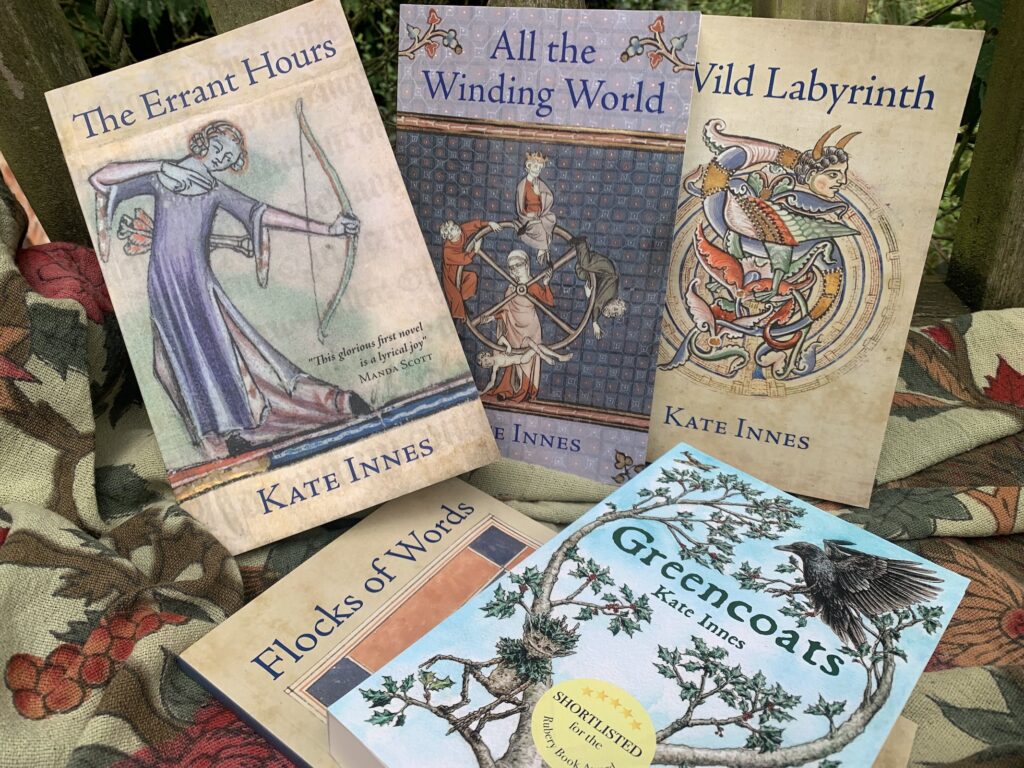
Confessions of a Micro Publisher: My most costly mistake
Confessions of a Micro Publisher: My most costly mistake
There are some mistakes in life that cause brief embarrassment. Some cause us momentary inconvenience. My biggest professional mistake (so far) was longer-lasting than that.
It’s only now that I feel able to admit to this mistake, now that the hours and hours and hours it took to rectify have come to an end. More than two years later.
I’m an Indie writer, and therefore also a publisher. Sometimes this secondary aspect of my job trips me up. I hope that writing about my mistake might save myself and others from the same pitfall. Maybe we’ll fall into a different pit – after all there are so many – but not this one!
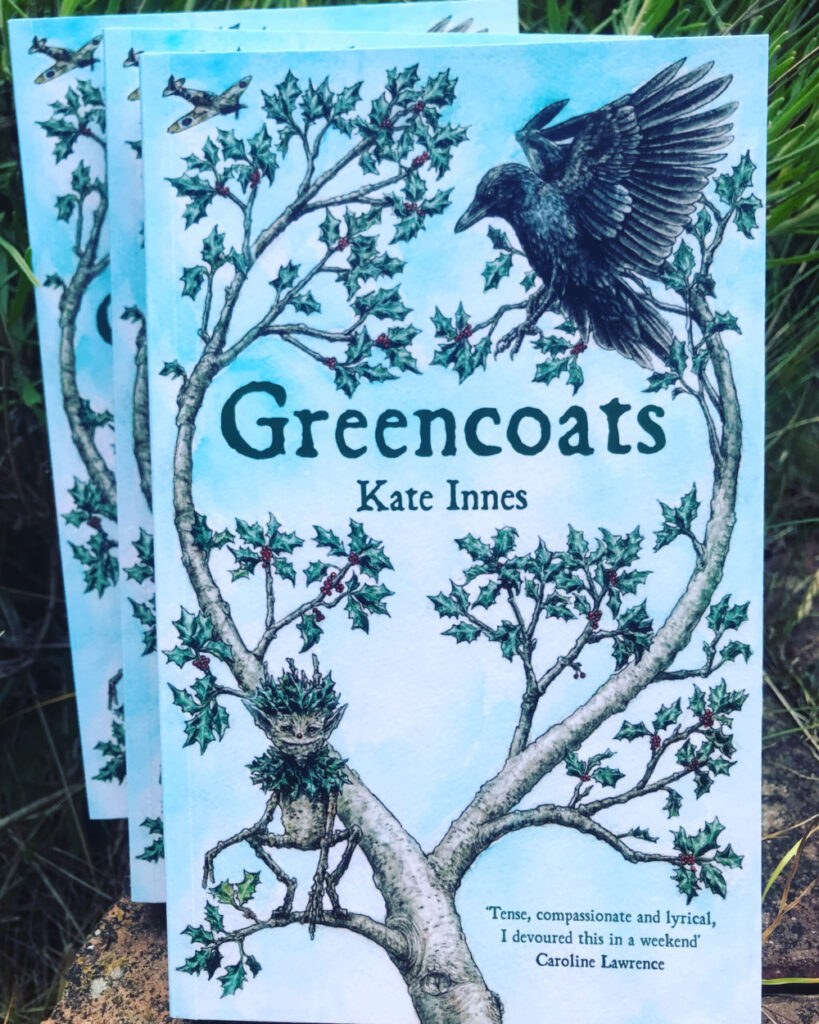
It was 2021 and I was finishing my 4th book – the first for children – entitled Greencoats. I had taken care to choose a font that’s easy to read, for those readers (like all my own children) who have a degree of dyslexia. I’d found an excellent illustrator, Anna Streetly, to bring the historical fantasy world to life and beautify the text with some motifs. I edited it over and over so that the sentences would flow. It was ready to go to the printer – or so I thought.
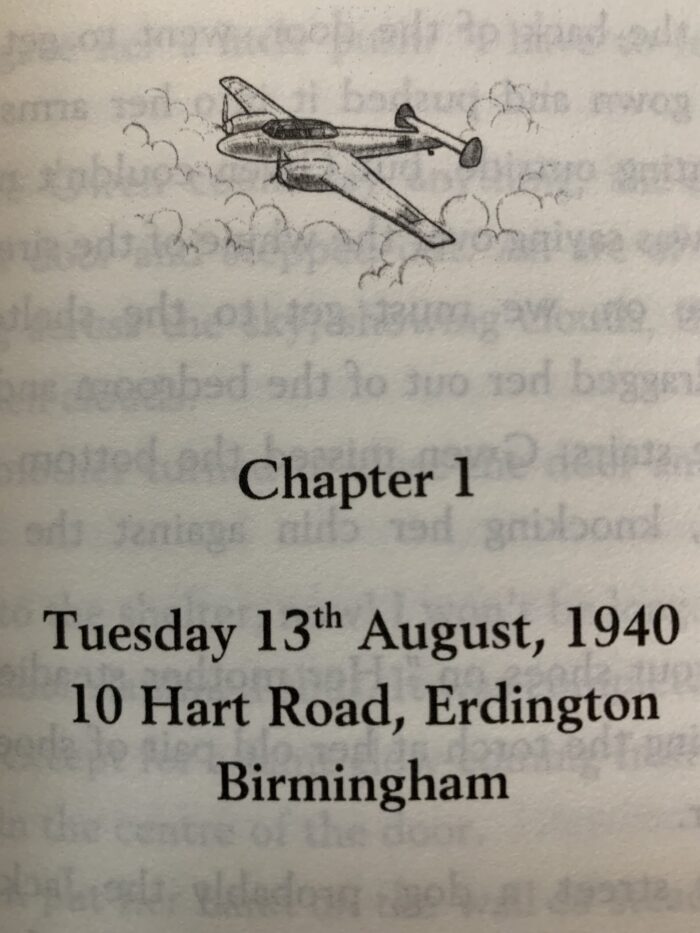
I have an old computer. Seriously old in computer years. The software is also old. I tried new-fangled things like Scrivener – said to be excellent for preparing manuscripts – but I couldn’t get on with it. I like my old, familiar ways. I trained as an archaeologist after all. I know where I am with ancient things.
But computers develop glitches the older they get, just like people do. They run out of memory and energy. They become intransigent about certain demands and expectations. They end up saying ‘No’ more often than not. And it is particularly common for one of these glitches to occur when you need to do something in a hurry.
I don’t even remember why I was under pressure on that day. It was April of 2021, Covid was still in the air, I had 3 teenagers at home and I was planning on publishing two books before Christmas. I had to get my skates on. But there was some particular reason that the manuscript had to be approved on that day, and it was probably because I’d already had to stop one print run half-way through to change the uneven type setting. That was expensive. If I didn’t get this version to them, they wouldn’t be able to deliver before the (small, socially-distanced) launch event in May. All my plans would fall apart.
I had noticed that sometimes when I saved the book file as a pdf, the page numbers disappeared. Then I had to perform some magic spell with scroll down menus to get them back. Something about the margins, the footer, the page layout. As I went through the numerous checks, I was sure they were showing up where they ought to be – doing their job of telling the reader where they were and how far they had to go. I pressed ‘Send’, and later that day I pressed ‘Approved for Print’.
Fast forward two weeks to the moment I open the first box of books.
No page numbers.
I almost faint. The printer must have done something wrong and not printed the base of the page. But it’ll be the printer who has to fix it. And fix it quick! I run to my desktop and reload the proof that I approved.
No page numbers. It’s my fault not the printer’s.
I stand still for a long time feeling sick. About £1000 of investment, and these books are useless. I want to cry. I want to burn them. I want to give up.
Instead, after a few deep breaths and lots of swearing, I conclude I’ll have to live with it. I don’t have the money for a reprint. Everything else about the books is perfect. Serves me right for writing a book that includes Forest Spirits and Elves. Of course they would make mischief. What was I thinking??
And why do we have to have page numbers anyway???
I decide to visit one of my best friends. We laugh. Well she does, and I pretend. Then she gives me the first solution. A genius way of looking disaster in the face and smiling anyway.
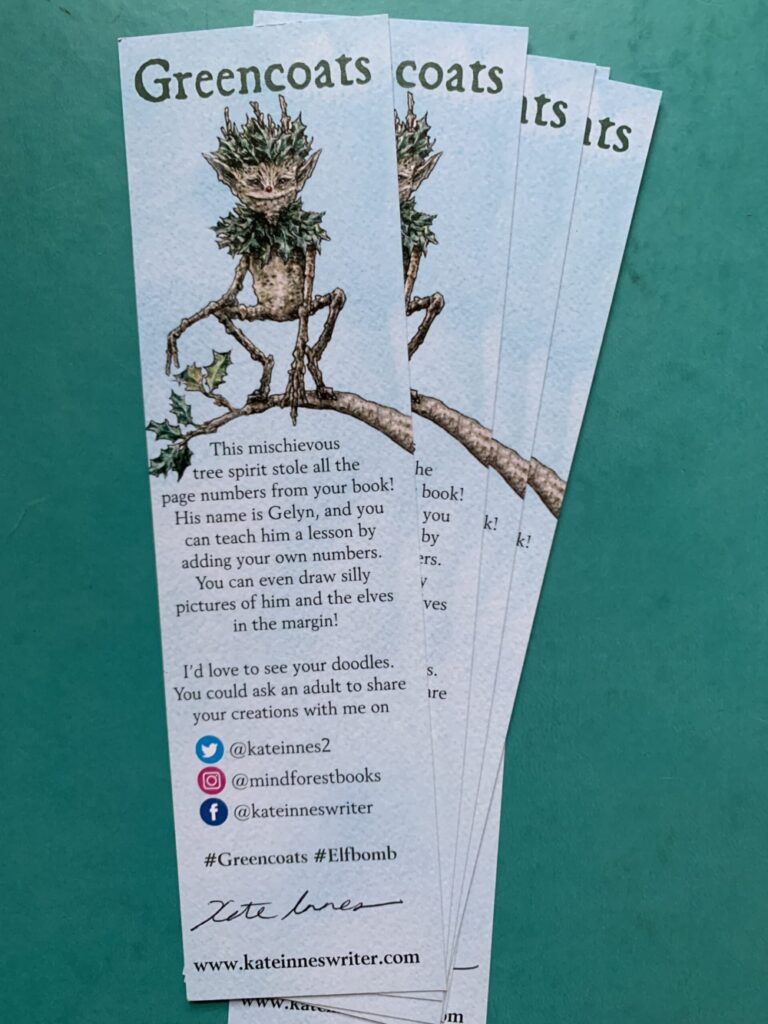
Engage your audience.
Turn a weakness into a strength.
Carrie Bennett was excellent at PR and Marketing. It was one of the jobs she did brilliantly. She died last year, on this day, and her loss has been hard to bear for all those who knew her. She was a very kind, unique, generous and gifted woman.
The addition of the bookmarks made everything okay. At the Book Launch, I was able to make light of it and see the empty whiteness at the bottom of the pages as freeing, expressive, doodle space. (To those of you who never write in your books and never dog-ear pages either – I apologise).
I also ordered a small emergency supply of print-on-demand books with the page numbers in their proper place to give to bookshops. Phew. But I quickly ran out of bookmarks and numbered copies.
I also realised that it was impractical for schools to use books without page numbers, and I dearly hoped lots of schools would use Greencoats as part of their WW2 curriculum.
I needed another solution.
And that’s where my Great Wall Model 46 Mechanical Numbering Stamp from Shanghai came into the story.
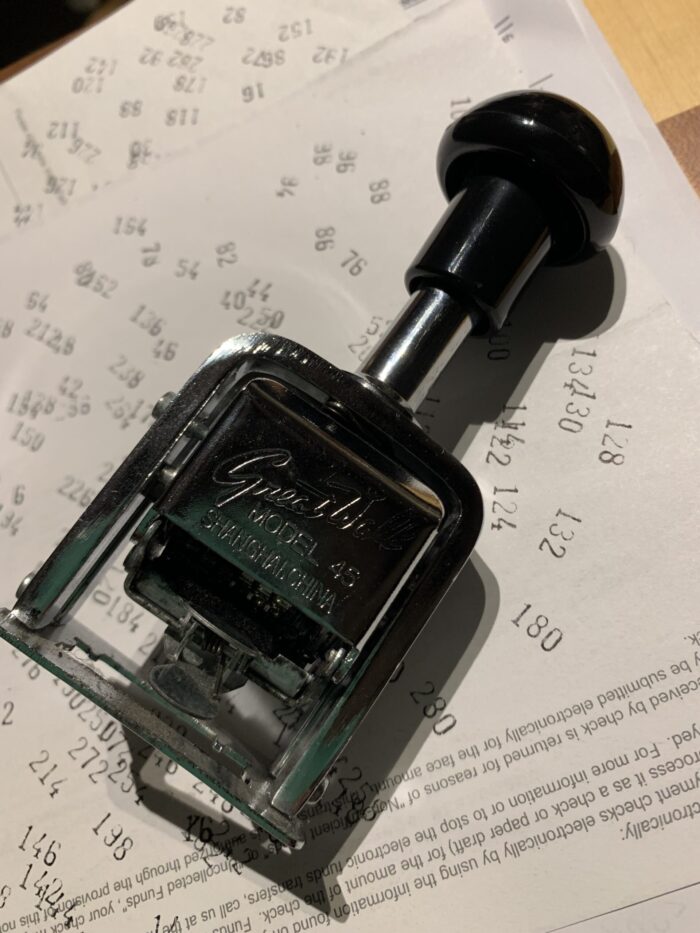
Luckily I enjoy watching tennis, rugby, athletics, and other Olympic/Commonwealth sports. I sat in front of the tv with a wooden chess board on my lap, a cushion at my back, and stamped every other page with an odd number. I stamped the even number onto a piece of paper. It was too complicated to move the book to and fro to get numbers on each page, and the ink would have smeared.
I made lots of little mistakes, like printing the numbers upside down, or missing a number because someone was about to score a try or win the gold medal.
I still have a few of these ‘Seconds’ in a Box of Shame near my desk.
But after a while I got better at it and managed to ink the pad just enough, get the numbers in the right place on the page, and the clever thing would click over – all the way to page 285.
A number seared into my brain.
On the positive side, the stamped numbers have a lovely vintage look, which is appropriate for a book set in 1940. I estimate that I numbered around 170 books. That’s approximately 48,450 times I pressed down that mechanical numberer. It’s still in perfect working order. I’m impressed. Great manufacturing.
But am I in perfect working order?
No. I never will be. I’ll always make mistakes.
But now I have a new mantra. A motto I whisper to myself whenever I’m feeling stressed about getting something done.
DON’T RUSH
I have decided that this is a key piece of wisdom that will help me in all kinds of situations, not just writing and publishing.
DON’T RUSH - with my kids, family, walks in the woods, creativity, friends, teaching, driving, cleaning, listening, and enjoying life.
DON’T RUSH
And also
THERE’S ALWAYS AN ALTERNATIVE TO WHAT YOU THOUGHT YOU WANTED – AND SOMETIMES IT’S ACTUALLY BETTER THAN THE ORIGINAL
And perhaps
IT’S ALL ABOUT PERCEPTION. PERHAPS ONE DAY THE SECONDS OF GREENCOATS WILL ACTUALLY BE WORTH SOMETHING???
And certainly
COMPUTER SOFTWARE DOES NOT IMPROVE WITH AGE. KEEP IT UPDATED.
And finally
THE ADVICE OF WISE, KIND FRIENDS IS ALWAYS WORTH FOLLOWING, AND TIME SPENT WITH THEM IS PRECIOUS.
Last week I finished stamping the last unnumbered book. The numberer has fallen silent.
I’m just getting ready to order a reprint.
Wish me luck!!

In memory of Carrie Bennett – who made everything better.
Wild Labyrinth – Review from Dr Anne E Bailey
I'm very grateful to Dr Anne E Bailey, Oxford University Medievalist and expert in medieval pilgrimage, for reading and reviewing 'Wild Labyrinth'. I'm also extremely relieved that she considered it historically accurate as well as entertaining!
Wild Labyrinth - Kate Innes
Everyone is rushing to make use of the new shrine. The monks are lining up pilgrims, standing waiting with their quills already dipped in the ink to record the new miracles. Yesterday, a blind girl was healed, but Thomas was only warming up. Today the Bishop expects a resurrection (p. 103)
As a medievalist and pilgrimage researcher, it would have been difficult not to love Wild Labyrinth.
Set in the years 1306 and 1307, the story follows the peripatetic adventures of Lady Illesa Burnel, her daughter Joyce, and a fluctuating cast of miscellaneous travellers. Readers are taken on a journey to a number of well-known pilgrimage shrines including Hereford Cathedral where the recently deceased Thomas Cantilupe is attracting miracles and pilgrims, and the shrine of Our Lady of Rocamadour in France with its famous miracle-working image. On the way, we’re introduced to a variety of fascinating and intriguing characters. Among them are the villainous Reginald the Liar, the misunderstood joculator Ramón, and the enigmatic creator of the Hereford Mappa Mundi, Richard Orosius.
As Illesa and Joyce journey from London to the Midlands, and then through France to Rocamadour and back again, the medieval realm is brought vividly and convincingly to life. We get a glimpse of the world of itinerant court entertainers, we’re taken inside Westminster Hall to see the mass dubbing of knights ahead of Edward I’s Scottish campaign, and we witness the arrests of the Knights Templar in France instigated by Philip IV.
More disturbingly, we’re also shown a darker side of medieval travel when mother and daughter suffer a violent attack at the hands of a would-be rapist. However, it is this terrifying ordeal which sets the two women on the road to Rocamadour, one seeking redemption and the other a miraculous cure. On their journey they meet a variety of other pilgrims, all with their own motivations for travel. The disquieting way in which fellow travellers come and go hints that there are many twists and turns in life’s labyrinth and the goal sought is rarely close at hand.
Wild Labyrinth is meticulously researched. As well as being knowledgeable about her historical period, the author is well-versed in medical plant and herbal lore which helps to situate the story in an appealing, but culturally distant, past. With its well-drawn characters, its nicely paced narrative, its compelling storyline, and its beguiling medieval setting, this is a deeply immersive tale of travel and adventure which stays with the reader long after the journey to the final page is completed.
Dr Anne E Bailey
University of Oxford
@AnneEBailey1
Wild Labyrinth is Book Three of 'The Arrowsmith Trilogy'. If you'd like to read these medieval literary adventures (The Errant Hours - Book One and All the Winding World - Book Two) they are all available from my Website Shop - Amazon - Bookshop.org - and Shropshire book shops.
‘Wild Labyrinth’ – review from Vuyelwa Carlin
I am very grateful to my friend, Vuyelwa Carlin, for reading and reviewing 'Wild Labyrinth' with such insight and commitment. Vu and I have been members of the Borders Poetry Writing Group for several years, and I admire her skill as a poet and value her opinion very much.
'Wild Labyrinth' by Kate Innes
This is the third in Kate Innes’ Arrowsmith historical novel trilogy, set in the late 13th / early 14th century. As always, the historical background is very impressive; and as should be with a trilogy, this last book is the best. All three are very good; but Wild Labyrinth is riveting from page one. Time has passed between the second book, All the Winding World, and this one: Illesa has suffered a miscarriage, losing a daughter; also, the reader gradually realises, she and her husband Richard are at odds. Chapter one opens (after an intriguing and atmospheric Prologue) with their son Christopher being sworn in as a knight for an unpopular war (it is 1306, near the end of Edward the First’s reign) in a packed, noisy Westminster Abbey; the atmosphere is anxious, sorrowful and unnerving, setting the scene for much of the book. This disquiet is unsettling, but not off-putting – on the contrary, it enriches the book. The book’s characters – not least Illesa and her family – are complex, faulty people; very realistic. They are mostly sympathetic and attractive, with all their imperfections; but there are two at least who are highly ambiguous – full of wit, a charm which may or may not be manipulative, and an uneasy oddness; part of the writer’s skill is that the reader is kept guessing for some time as to their real natures: are they to be trusted?
The narrative, very adventurous, often tense, sometimes horrifying, goes along at a good pace right from the start; as I said, the book is a page-turner. The story is of journeys made – in more senses than one: by Illesa, her family and their manservant William, and by the maker of the long-famous and treasured Mappa Mundi, who joins them as an eager but highly temperamental guide. This last is a beautifully realised character; the few facts known about him have been combined with a very creative imagination to build up a moving portrait. Richard Oriosus, a scholar and artist of genius, is difficult, obsessive, puzzling and contentious, a man of suffering and regrets; in the end, he is deeply sympathetic. It is he who speaks the highly evocative Prologue, describing the making of the map, the first of several fascinating accounts, encompassing as they do his brilliance, his almost fixated dedication to his work, and of course the state of knowledge of the world: "… I drew the centre of the world – Jerusalem’s wall encompassing the dome of the Holy Sepulchre…" To him, the map is an artistic endeavour to the glory of God – bound up too with his own past; a profound sorrow is hinted at. To others, such as his Bishop, it is mainly a means of attracting pilgrims hoping for miracles, and their donations. Here, as we realise – he doesn’t mention her name – he first meets, and remembers, Illesa.
The book immerses the reader in the past of over seven hundred years ago: its strangeness and also its familiarities. Kate Innes knows her subject extremely well; she has imagined herself, with vivid accuracy, into ways of thinking and beliefs that in some ways are alien to us. But the characters are completely believable. We human beings have changed so completely in some ways; and so little in others. This is part of the fascination of history. What strikes me particularly (as with the other two books) is the way in which people’s lives are soaked through with religious belief. Everything that happens is explained, one way or another, in accordance with a faith that is taken as read; an engagement with a God of sometimes disturbing and incomprehensible ways, and complex angers. What strikes me is that this is not described from above, as it were – that is, from a position of implied superiority; the writer understands and respects – implicitly sifting obvious superstitions from possible truths – the absolute conviction of those days that God was intimately involved with human affairs. This encouragement to think ourselves into a different time does not always preclude dramatic irony: for example, there is a painfully moving account of what is clearly bipolar disorder: the reader knows this at once, but for the sufferer it is an affliction imposed upon him by God, which (however imperfectly he understands the reason) he must endure.
It is also brought home to us how shockingly dangerous, especially for women – and how long, cumbersome and uncomfortable – travel was in those days.
This is a many-layered book; the story is a dense mesh, wide-ranging and excellently plotted, full of real people about whom one is curious, and detailed information about their everyday lives, assumptions and knowledge: we inhabit the peculiar atmosphere of a distant past. The author’s wide knowledge does not intrude, however (I have read novels where the research gets in the way) but is bound in as a whole with the story. No spoilers, but I very much liked the endings: there are two of these, as characters part ways.
Vuyelwa Carlin
Review of ‘The Untethered Space’ by Carol A. Caffrey
Is it possible to find beauty and meaning in life in the aftermath of grief? How do we interact with the too present world when our inner world has fallen apart?
These questions have been explored by artists of all kinds for thousands of years – but I would argue that Carol Caffrey’s pamphlet, written during and after the deaths of all her four siblings within five years, is a beautiful, meaningful and earthy contribution to this, most human, of tasks.
The Untethered Space is a potent mix of writing: elegiac and entertaining – practical and metaphysical. It floats between the spirit and the flesh – and celebrates each. In contrast to and affirmation of the title – many of the poems explore the poet’s strong attachment and belonging to Ireland – where she was born and raised but no longer lives. That longing for a land, the missing of the family home and birth place is made more poignant by the shattering loss of those she shared it with. But there is no self-pity – rather the poet’s close observation and appreciation through deft, musical language of what life gives – the joy, the humour and the devastating significance of everything.
In ‘The Waiting Room’ Caffrey, who is also an accomplished actor, brings her understanding of timing and voice to bear in the final stanza:
“We saw what courage looked like, what grace under
pressure means. It was in that room and in your voice
when, home for the last time, you said that his words were
very hard to hear and at last allowed yourself to cry.”
An aspect of the collection that I found very significant was the political poetry – because when you make connections with suffering in yourself and those you love, you also notice it in the world and understand the grave consequences of political power-play. This is profoundly expressed in ‘Baghdad Echo’ where Caffrey deftly explores the universal outcome of violence – from the point of view of a journalist:
‘The city burns in flames, the naked prisoner in shame.
Insurgent, martyr, brother –
he remarked they bled the same.
He filed his copy in the rubble
of Dublin, Easter nineteen sixteen.”
And in between the beauty and the wide insight – there are poems that cheered me up enormously, including ‘Thoughts from the Treadmill’ in which, combining influences from the canon of history and literature, the poet cries out for salvation from the hyper-fit brigade.
“Let them take their sleek and tanned
perfection home to sterile empty fridges.
They’ll never taste of chocolate but once;
I’ll do so many times before my death.”
The collection is helpfully divided into sections described by Italian musical notation – such as Con Brio, Espressivo and Misterioso. These give the reader a sense of lift into another realm, of travelling with an intriguing and sympathetic companion. I believe readers will be glad of the time they spend in Carol Caffrey’s company – tethered briefly in her mind's space.
The Untethered Space is available from 4WORD Independent Press 4word.org – cost £5.99
Refugee Week – Creative Transformation Writing Exercise
Creative Transformation:
In this creative writing exercise we are going to be allowing ourselves to go into positive, rewarding, uplifting territory.
That doesn’t mean we deny that terrible and horrendous things are going on, and in some cases have happened to us and people and places we love.
It means that we are giving ourselves a place to go where we are in control of what happens. We can make good changes. We can meet out justice.
If we think about all the bad things happening, we feel awful if there is nothing that we can do to help make it stop. But, it is very helpful to give ourselves something in fantasy that we can’t have in reality. This helps us all to think more positively and happily about ourselves and the future.
This technique has been used in fiction from the earliest myths about the Greek gods and the ancient tales in the Arabian Nights – to Roald Dahl in his stories like The Magic Finger (in which selfish people are turned into ducks) – and changing something scary into something ridiculous in JK Rowling’s book Harry Potter and the Prisoner of Azkaban.
In the sovereign territory of your imagination, you can make anything happen – you can make anything change. You can use a supernatural force – like the pagan gods or superheroes we have in popular culture today – or you can use prayer or magic.
Or you can just decide that this is how it is going to be.
One of the poems in my sequence Modern Mythic Metamorphoses – ‘In which the hunters mysteriously disappear’ changes the rules so that as soon as a hunter tries to shoot an endangered animal, that hunter transforms into the animal he was trying to kill. This then leads to an increase in animal numbers and an increase in forests and other wild places – and greater biodiversity. Through one little change many other good things result.
You can watch the video of this poetry sequence here: https://www.youtube.com/watch?v=D1tKwDjDrbg&feature=youtu.be
So – in this creative writing exercise - don’t worry about being realistic.
Give your imagination plenty of freedom to dream and create a better world.
Write a short description – can be prose or poetry – of a transformation.
1. Think of a situation or a person that needs to be changed.
It can be political, social, or very personal. It can be someone who lives near you or on the other side of the world. It can be an object that you think should not exist in its current form. (eg. what would happen if all mobile phones turned into tulips?)
2. Name what will be changed: ______________________________________________________________
3. Name the animal, plant, thing, situation that you will change it to:
___________________________________________________________________________________________________
4. Now write about the transformation and the outcome of it – how have things changed for the better – or are there some unintended consequences of your divine intervention?
Spend about 10-15 minutes getting the basics down.
___________________________________________________________________________________________________
___________________________________________________________________________________________________
___________________________________________________________________________________________________
Sometimes a poem or piece of writing is quick and sometimes it takes a long time. Spend some more time making this work as good as you can. If you’ve enjoyed it, you can choose another situation or person who needs the creative transformation treatment.
There is no limit to what you can do – you are in charge.
If you want to share your ideas with us, that would be great! Share to the Refugee Week post on my Facebook page https://www.facebook.com/kateinneswriter/
or email [email protected]. I will respond in both cases.
If you have emailed me, I will ask if you would like to make your work public or not.
If you would rather not share at all – no worries – keep it as your powerful secret.
Wildflowers – folklore, literature, language
Here is the support material and the resources for my video about Wildflowers in Shropshire Folklore on the #Folk
Community Group's Facebook page and Youtube channel.
Available from 12 June, 2020 at 2:00pm BST.

Writing Exercise:
Make a virtual floral bouquet for a person you haven’t been able to see during the lockdown using Floriography. The meaning of the flowers will express how you feel about that person, your situation, their absence . . . You can write this just in the flower names arranged in a certain order – or turn it into a poem or a flash fiction piece of fewer than 200 words.
Please share your work on the #Folk facebook page – if you would like to!
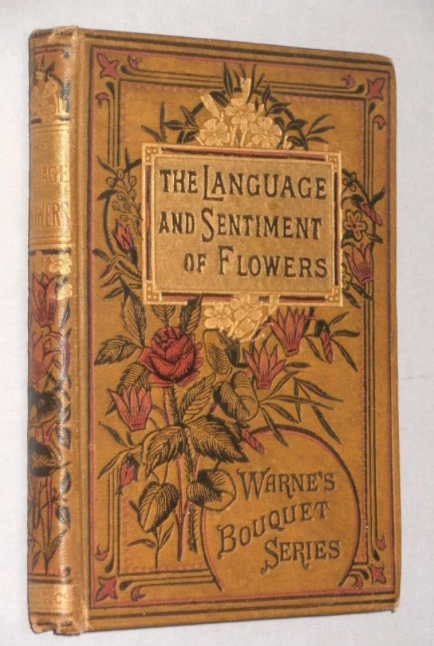
Floriography:
- White rose: purity, innocence, reverence, a new beginning, a fresh start.
- Red rose: love, I love you
- Deep, dark crimson rose: mourning
- Pink rose: grace, happiness, gentleness
- Yellow rose: jealousy, infidelity
- Orange rose: desire and enthusiasm
- Lavender rose: love at first sight
- Coral rose: friendship, modesty, sympathy
In a sort of silent dialogue, flowers could be used to answer “yes” or “no” questions. A “yes” answer came in the form of flowers handed over with the right hand; if the left hand was used, the answer was “no.”
| Symbolic Meanings of Herbs, Flowers and Other Plants | |
| Abatina | Fickleness |
| Acanthus | The fine art, artifice |
| Aloe | Affection, also grief |
| Amaryllis | Pride |
| Anemone | Forsaken, sickness |
| Angelica | Inspiration |
| Apple blossom | Preference |
| Arborvitae | Unchanging friendship |
| Aster | Symbol of Love, Daintiness |
| Bachelor’s button | Single blessedness |
| Sweet Basil | Good wishes |
| Bay tree | Glory |
| Begonia | Beware, dark thoughts |
| Belledonna | Silence |
| Bittersweet | Truth |
| Black-eyed Susan | Justice |
| Bluebell | Humility, constancy |
| Borage | Bluntness, directness |
| Butterfly weed | Let me go |
| Camellia, pink | Longing For You |
| Camellia, red | You’re a Flame in My Heart |
| Camellia, white | You’re Adroable |
| Candytuft | Indifference |
| Carnation | Women, Love |
| – Red carnation | Alas for my poor heart, my heart aches |
| – White carnation | Innocence, pure love, women’s good luck gift |
| – Pink carnation | I’ll never forget you |
| – Striped | Refusal |
| – Yellow carnation | Disdain, disappointment, rejection |
| Chamomile | Patience in adversity |
| Chives | Usefulness |
| Chrysanthemum, red | I love you |
| Chrysanthemum, yellow | Slighted love |
| Chrysanthemum, white | Truth |
| Clematis | Mental beauty |
| Clematis, evergreen | Poverty |
| Clover, white | Think of me |
| Columbine | Foolishness, folly |
| Columbine, purple | Resolution |
| Columbine, red | Anxious, trembling |
| Coreopsis | Always cheerful |
| Coriander | Hidden worth/merit |
| Crab blossom | Ill nature |
| Crocus, spring | Youthful gladness |
| Cyclamen | Resignation, diffidence |
| Daffodil | Regard, Unequalled Love |
| Dahlia, single | Good taste |
| Daisy | Innocence, hope |
| Dill | Powerful against evil |
| Edelweiss | Courage, devotion |
| Fennel | Flattery |
| Fern | Sincerity, humility; also, magic and bonds of love |
| Forget-me-not | True love memories, do not forget me |
| Gardenia | Secret love |
| Geranium, oak-leaved | True friendship |
| Gladiolus | Remembrance |
| Goldenrod | Encouragement, good fortune |
| Heliotrope | Eternal love, devotion |
| Hibiscus | Delicate beauty |
| Holly | Foresight |
| Hollyhock | Ambition |
| Honeysuckle | Bonds of love |
| Hyacinth | Sport, game, play |
| – Blue Hyacinth | Constancy |
| – Purple Hyacinth | Sorrow |
| – Yellow Hyacinth | Jealousy |
| – White Hyacinth | Loveliness, prayers for someone |
| Hydrangea | Gratitude for being understood; frigidity and heartlessness |
| Hyssop | Sacrifice, cleanliness |
| Iris | A message |
| Ivy | Friendship, fidelity, marriage |
| Jasmine, white | Sweet love, amiability |
| Jasmine, yellow | Grace and elegance |
| Lady’s Slipper | Capricious beauty |
| Larkspur | Lightness, levity |
| Lavender | Distrust |
| Lemon balm | Sympathy |
| Lilac | Joy of youth |
| Lily, calla | Beauty |
| Lily, day | Chinese emblem for mother |
| Lily-of-the-valley | Sweetness, purity, pure love |
| Lotus Flower | Purity, enlightenment, self-regeneration, and rebirth |
| Magnolia | Love of nature |
| Marigold | Despair, grief, jealousy |
| Marjoram | Joy and happiness |
| Mint | Virtue |
| Morning glory | Affection |
| Myrtle | Good luck and love in a marriage |
| Nasturtium | Patriotism |
| Oak | Strength |
| Oregano | Substance |
| Pansy | Thoughts |
| Parsley | Festivity |
| Peony | Bashful, happy life |
| Pine | Humility |
| Poppy, red | Consolation |
| Rhododendron | Danger, beware |
| Rose, red | Love, I love you. |
| Rose, dark crimson | Mourning |
| Rose, pink | Happiness |
| Rose, white | I’m worthy of you |
| Rose, yellow | Jealousy, decrease of love, infidelity |
| Rosemary | Remembrance |
| Rue | Grace, clear vision |
| Sage | Wisdom, immortality |
| Salvia, blue | I think of you |
| Salvia, red | Forever mine |
| Savory | Spice, interest |
| Snapdragon | Deception, graciousness |
| Sorrel | Affection |
| Southernwood | Constancy, jest |
| Spearmint | Warmth of sentiment |
| Speedwell | Feminine fidelity |
| Sunflower, tall | Haughtiness |
| Sweet pea | Delicate pleasures |
| Sweet William | Gallantry |
| Sweet woodruff | Humility |
| Tansy | Hostile thoughts, declaring war |
| Tarragon | Lasting interest |
| Thyme | Courage, strength |
| Tulip, red | Passion, declaration of love |
| Tulip, yellow | Sunshine in your smile |
| Valerian | Readiness |
| Violet | Loyalty, devotion, faithfulness, modesty |
| Wallflower | Faithfulness in adversity |
| Willow | Sadness |
| Yarrow | Everlasting love |
| Zinnia | Thoughts of absent friends |
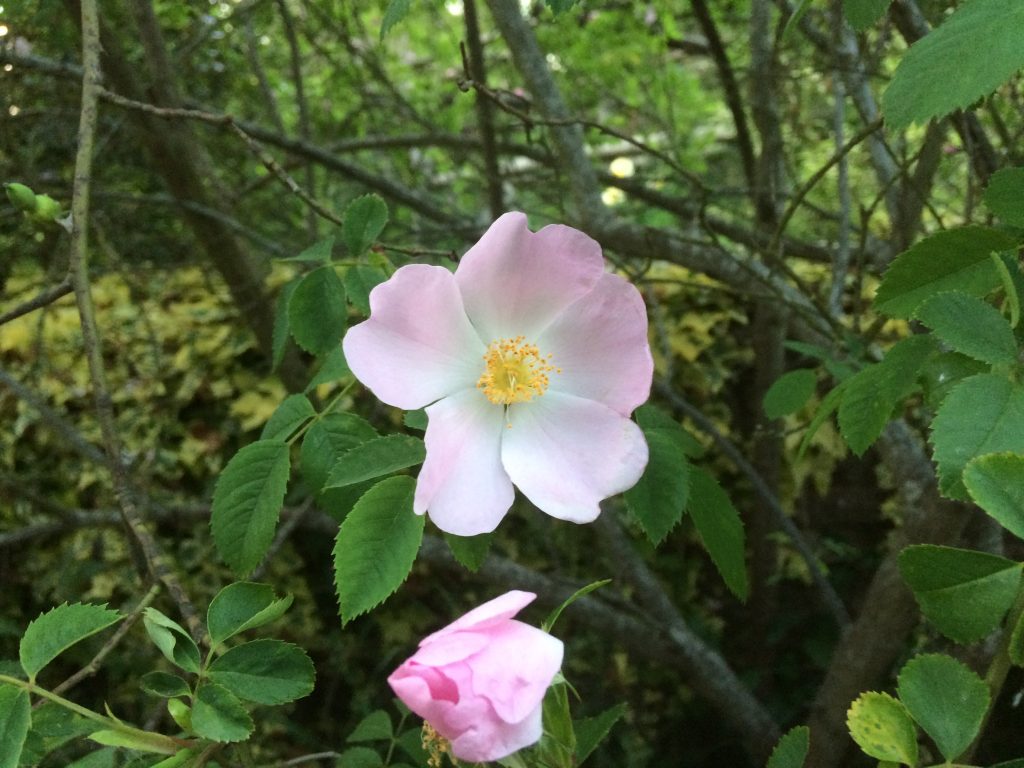
Extracts from the work of Shropshire writer – Mary Webb (1881-1927) – focussing on wildflowers:
“Flowers like the oxlip, with transparently thin petals, only faintly washed with colour, yet have a distinct and pervasive scent. Daisies are redolent of babyhood and whiteness. Wood anemones, lady's smock, bird's-foot trefoil and other frail flowers will permeate a room with their fresh breath. In some deep lane one is suddenly pierced to the heart by the sweetness of woodruff, inhabitant of hidden places, shining like a little lamp on a table of green leaves. It is like heliotrope and new-mown hay with something wholly individual as well. To stand still, letting cheek and heart be gently buffeted by the purity, is to be shriven.”
“Mauve has a delicate artificiality, something neither of earth nor heaven. It is like the temperament which can express in sheer artistic pleasure heights and depths which it can never touch. Whether it is sultry, as in lilac, or cool, as in lady's smocks, this mingling of fierce red and saintly blue has an elfin quality. Hence comes the eeriness of a field of autumn crocuses at twilight, when every folded flower is growing invisible, and doubtless there is a fairy curled up in each. Children look for the Little People in mauve flowers – Canterbury bells and hyacinths – and, though they never find them, they know them there. Mauve enchants the mind, lures it to open its amethyst door, and behold! nothing but emptiness and eldritch moonshine.”
Quotes from “The Spring of Joy – a little book of Healing” by Mary Webb
“And I thought, as I looked round the diary that it was as good a place as anybody could wish for asking to wed. The sun shone, slanting in, though it was off the dairy most of the day. The damp red quarries and the big brown steans made a deal of colour in the place and the yellow cream and butter and the piles of cheeses were as bright as buttercups and primmyroses. Jancis matched well with them, with her pretty yellow hair and her face all flushed at the sight of Gideon. She was like a rose in her pink gown. Outside the window, in the pink budded may tree, a thrush was singing.”
From “Precious Bane” by Mary Webb
“The sky blossomed in parterres of roses, frailer and brighter than the rose of the briar, and melted beneath them into lagoons greener and paler than the veins of a young beech leaf. The fairy hedges were so high, so flushed with beauty, the green airy waters ran so far back into mystery, that it seemed as if at any moment God might walk there as in a garden, delicate as a moth. Down by the stream Hazel found tall water plantains, triune of cup, standing above the ooze like candelabras, and small rough-leaved forget me nots eyeing their liquid reflections with complaisance.”
from “Gone to Earth” by Mary Webb
Thanks to the players of the #NationalLottery for making this possible through Arts For All funding
Ancient Trees – Writing prompts and Resources
Ancient Trees Resource Pack: to be used in conjunction with the video on the Facebook Folk Community Group site https://tinyurl.com/y7yps43s
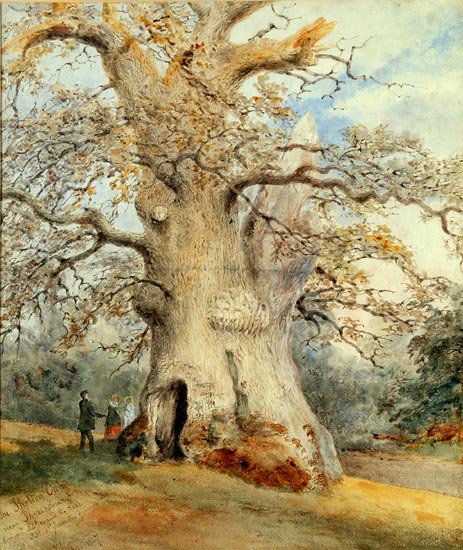
The Shelton Oak by David Parkes – 19th century
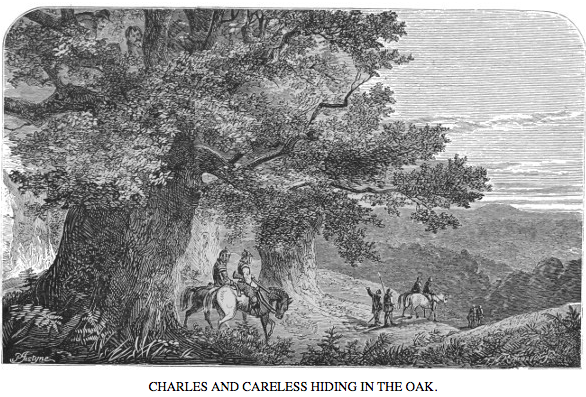
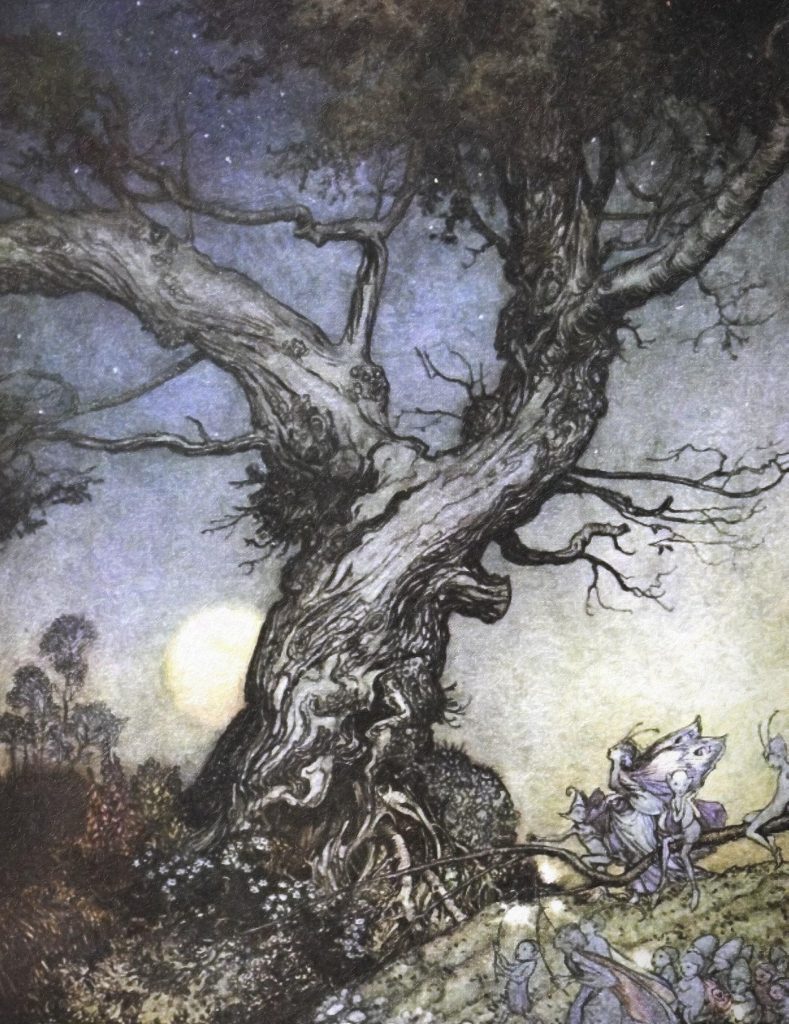
Fairy Folk by an old gnarled tree – by Arthur Rackham
Arthur Rackham, illustrator, paid very close attention to trees in his work, glorying in their detail and character.
Examples of writing about ancient oaks, other trees, and living and seeking shelter in them:
My Side of the Mountain – by Jean Craighead George
“I am on my mountain in a tree home that people have passed without ever knowing that I am here. The house is a hemlock tree six feet in diameter, and must be as old as the mountain itself. I cam upon it last summer and dug and burned it out until I made a snug cave in the tree that I now call home.
My bed is on the right as you enter, and is made of ash slats and covered with deerskin. On the left is a small fireplace about knee high. It is of clay and stones. It has a chimney that leads the smoke out through a knothole. I chipped out three other knotholes to let fresh air in. The air coming in is bitter cold. It must be zero outside, and yet I can sit here inside my tree and write with bare hands. The fire is small, too. It doesn’t take much fire to warm this tree room.”
An extract from In the Tree House at Night – by James L Dickey
a beautiful, eerie poem in which the tree becomes a link between earthly life and the life beyond.
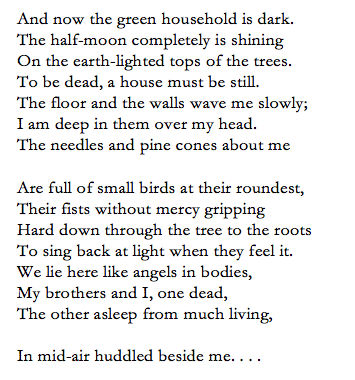
For complete poem:
https://www.poetryfoundation.org/poems/42718/in-the-tree-house-at-night
THE OAK
by Alfred Lord Tennyson
Live thy Life,
Young and old,
Like yon oak,
Bright in spring,
Living gold;
Summer-rich
Then; and then
Autumn-changed
Soberer-hued
Gold again.
All his leaves
Fall’n at length,
Look, he stands,
Trunk and bough
Naked strength.
Dendrochronology (written about the Acton Round Oak)
by Kate Innes
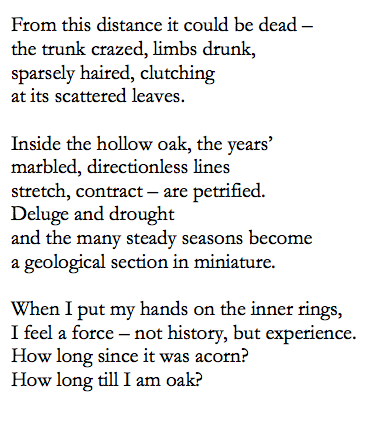
Mary Webb – a Shropshire writer and folklorist –
From a description of Hazel Woodus in Gone to Earth
“Her passion, no less intense, was for freedom, for the wood-track, for green places where soft feet scudded and eager eyes peered out and adventurous lives were lived up in the tree-tops, down in the moss.”
From ‘The Joy of Fragrance’ in The Spring of Joy by Mary Webb 1917
‘A little wood I know has in May among its oaks and beeches many white pillars of gean trees, each with its own air round it. At long intervals a large, soft flower wanders down, vaguely honeyed, mixing its breath with the savour of sphagnum moss, and resting among the wood-sorrel. The wood-pigeons speak of love together in their deep voices, unashamed, too sensuous to be anything but pure. Among the enchanted pillars, on the carpet of pale sorrel, with a single flower cool in the hand, one is in the very throne-room of white light. A little farther on the air is musky from the crowded minarets of the horse chestnut – white marble splashed with rose – where the bumble bee drones.’
The Mary Webb Society notes that:
“Mary Webb's love and intimate knowledge of the county permeates all her work. She had an extraordinary perception of the minutiae of nature, and it is this keen observation that gives her prose its unique quality. In her introduction to Precious Bane she writes’ Shropshire is a county where the dignity of ancient things lingers long, and I have been fortunate not only in being born and brought up in its magical atmosphere, and in having many friends in farm and cottage who, by pleasant talk and reminiscence have fired the imagination, but also in having the companionship of such a mind as was my father's- a mind stored with old tales and legends that did not come from books, and rich with an abiding love for the beauty of forest and harvest field...’ “
More information about ancient trees and tree houses:
More information about the Shelton Oak, including photographs:
https://en.wikipedia.org/wiki/Shelton_Oak
The Ancient Tree Forum finds the Bull Oak – a boundary tree and a shelter for a bull for years
Clip from BBC programme about the eccentric occupant of the Pitchford treehouse in the 1940’s:
https://www.bbc.co.uk/programmes/p04bspzg
Off topic but fascinating - Pitchford Ghosts by Caroline Colthurst:
http://www.pitchfordestate.com/pitchford-ghosts
Ancient Tree Folklore Writing Prompts:
Choose any or all of these ideas to start writing about the tree as a location or as a character or its importance to you.
1. You are climbing a tree – where are you? What does it feel like? What sounds do you hear? How does it feel as you make your way up?
2. You are living in a tree house – describe that – how is it constructed and who is welcome to visit you?
3. You are living inside a hollow tree – describe your living quarters, describe how it sounds and what it feels like to live there
4. You meet the spirit of the tree – describe the spirit – how do he/she feel about your incursion into its domain? Do you have a conversation?
5. Write a fairy tale about someone who climbs a tree to escape from danger, and finds more than they expected!
6. Write a story told with the voice of the tree – perhaps the Royal Oak – or another tree that has seen incredible adventures of mice and men. Or write a story about a creatures living ‘adventurous lives’ in the treetops.
Prepared by Kate Innes – Author of ‘The Errant Hours’ and other adventures
@KateInnes2 @kateinneswriter
Digging up the Graveyard
“Once people come here, they never leave. It is the graveyard of ambition.”
When I first came to live in Shropshire, I heard this quite a lot. Now that I’ve been here nearly a quarter of a century, I see that at least some of this statement is true. Certainly I never want to leave this area and hope to live a long life amongst its hills and woods. But there is so much more to this saying than first meets the eye, or the ear. Perhaps your ambition is simply to live connected with nature amongst friendly people with relatively uncluttered roads. Or perhaps it is to live in a landscape that inspires and informs – that oozes atmosphere and ancient significance. I feel I have fulfilled both these ambitions, and even more than that - I’ve turned them into a job.
As an archaeologist and museologist, I have always enjoyed living in the past. As a writer, I particularly like to live in the medieval period, and even more particularly, I like to live in the last quarter of the thirteenth century in the Welsh Marches. Perhaps you, like me, understand that there are some locations in the world where the barrier between the present and the past is thick and strong. I’ve lived in a few of those soulless places. They usually have plenty of shopping malls. But there are other places where the boundary between present and past seems as insubstantial as gauze.
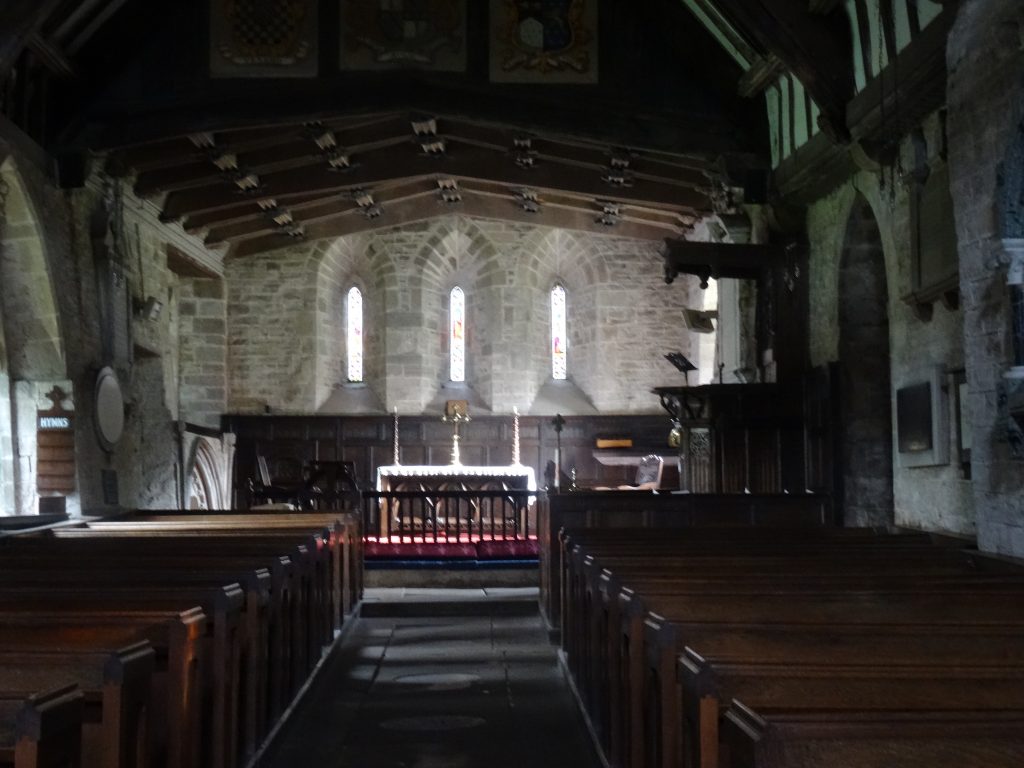
In the Marches, we can easily reach back across centuries. We sense it in the shiver down the spine in a darkened church, or the overwhelming feeling of presence when we walk alone down an ancient hollow way, or stand near one of the many veteran oak or yew trees. There is the sudden and uncanny knowledge of the many footfalls that went before us, still echoing. For me this happens particularly in medieval monuments, but I know others who feel the same about prehistoric or even Victorian locations. The Marches has plenty of history thrills for all persuasions. But for now let’s look at the late thirteenth century. Let me try to explain the attraction.
It was a time when the charismatic and peripatetic King Edward the First (later to be known as the Hammer of the Scots) travelled through this landscape repeatedly in his attempt to subdue the Welsh and appease the powerful Marcher Lords.
It was a time of conflict with the tenacious Welsh Princes - Llewelyn ap Gruffydd, Dafydd ap Gruffydd, Rhys ap Maredudd, and Madog ap Llewelyn, who refused to be cowed, who kept harassing the Anglo-Normans with hit and run raids and ancient guerrilla tactics. Their bands of Welsh infantry were armed with scramasax knives and spears, weapons for close quarter fighting. They harried the English interlopers who were intent on taking their land and their stock.
It was a time when the second-most powerful man in the kingdom was a Shropshire lad, Chancellor Robert Burnell, one of the greatest legislators of all time who lovingly crenellated his natal home of Acton Burnell.
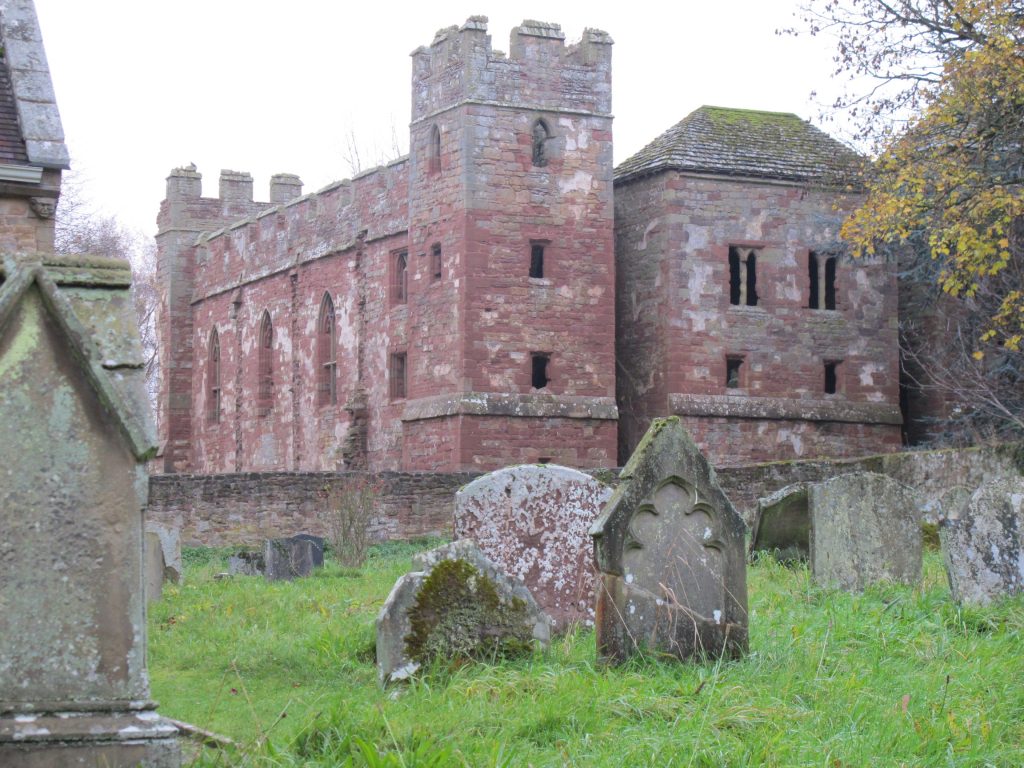
‘The Graveyard of Ambition’ seems a rather negative label. However, it is not without its useful aspects. As a former archaeologist, I tend to view graveyards in a slightly more positive light than most people. I’ve spent some time excavating them, and I understand that they hold a huge amount of information - about the economy, the environment, the social hierarchy, and religious beliefs in the past. Yes, there are plenty of dead, decaying bodies, but they are very interesting dead bodies. The older they are the more interesting, in my view. And if one must see the Welsh March as a graveyard, it is certainly one of the most intriguing graveyards in Britain. The boundary that meanders between Wales and England, in eddies and oxbows of territory disputed for thousands of years, is essentially a boundary of topography, between highland and lowland economies and cultures. It was a contested area long before the medieval period, as the Iron Age hill-forts that dominate this area of outstanding natural beauty attest.
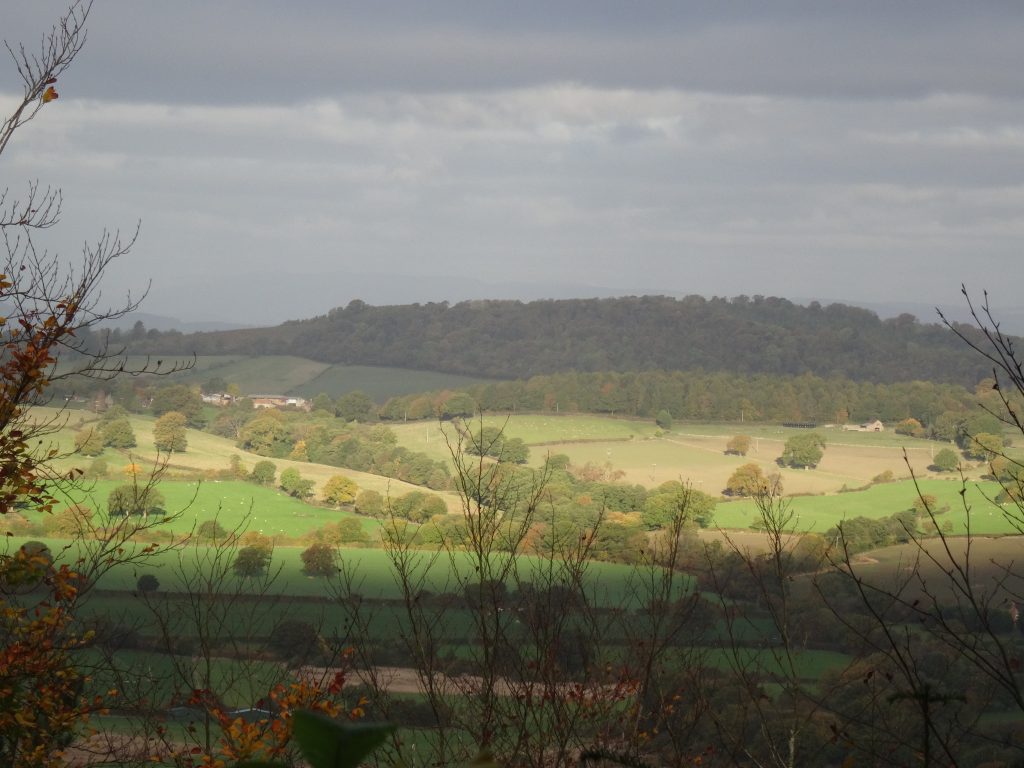
After the Norman Conquest, William divided the borderlands between his most-trusted men, making them the Earls of Chester, Shrewsbury and Hereford, and tasking them with containing and subduing the Welsh. They put into action a huge building programme to proclaim their mastery of the territory in a way that would also withstand fierce Welsh raids. As a result the Welsh March has the densest concentration of motte and bailey castles in all of Britain.
The March of Wales, was, to a large degree, independent of both the English Monarchy and the Principality of Wales, reflecting the need for chiefs and inhabitants who could live self-sufficiently in a place where violence was commonplace, and each church had a tower that also acted as a keep. It was a frontier land in every sense, run by ruthless, ambitious Barons beholden to no one, who fought amongst themselves as well as with the English and Welsh, and competed, sometimes fatally, for business, trade, wealth, land and status.
It begins to become obvious that the green and leafy peacefulness we experience today covers a bloody and fascinating history. We can go down a layer or two, under the castles of the Marcher Lords, into the substrate, and find the stone that makes this landscape so unique. An area of extraordinary geological variation, with stones from almost every period in the earth’s history and every compass point on the planet, that through its chemical content makes micro-habitats, rich soils, harsh hills, great varieties of flora, that provided resources for tools and medicine, dye and cloth.
It was an area of danger and riches, but riches we may not recognise as such today. If we examine the economy of the Marches, we find that the wealth of the merchants and magnates came from the biggest export of the time, the one product that made England powerful – wool. And not just any old wool. The wool from Shropshire and Herefordshire sheep was deemed to be of the very highest quality and commanded a premium price.
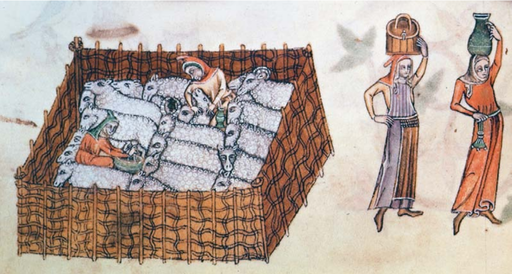
Why was it so good? The sedimentary rock laid down in the Ordovician, Silurian and Devonian periods over 400 million years ago, made up of trillions of sea creatures inhabiting that temperate sea, contributed important nutrients to the soil that resulted in the ‘smooth green miles of turf’ remarked on by AE Housman (Last Poems1922), leading to the wealth of wool. And if we were to dig down into the graveyard of Saint Laurence’s Church in Ludlow, we would find the ashes of that same AE Housman, buried by a cherry tree.
Dig down deeper in that churchyard and we could find a man who had reason to thank that turf. Laurence of Ludlow (de Lodelow) was one of the greatest merchants of the medieval age, son of Nicholas, brother of John, brother-in-law of Isabel – a family who had the equivalent of a multi-million business based on the trade in wool. Like all good millionaires, they were not shy of splashing their money around. Undoubtedly they would have richly endowed St Laurence’s church in Ludlow for the good of their wealth-encumbered souls.
But their main acquisition we can see today is the manor of Stokesay (then ‘Stoke de Say’), which Laurence bought in cash from the Verdun family in 1281 and expanded considerably. It is one of the best-preserved fortified manor houses in the country, retaining both its integrity and its atmosphere. No, it is not a true castle, despite being called such. That was an important distinction. Stokesay had little military or defensive purpose. Laurence and his family had to show that they posed no threat to the power of the Marcher Lords, although the manor clearly shows their ambition to live the life of a landed lord.
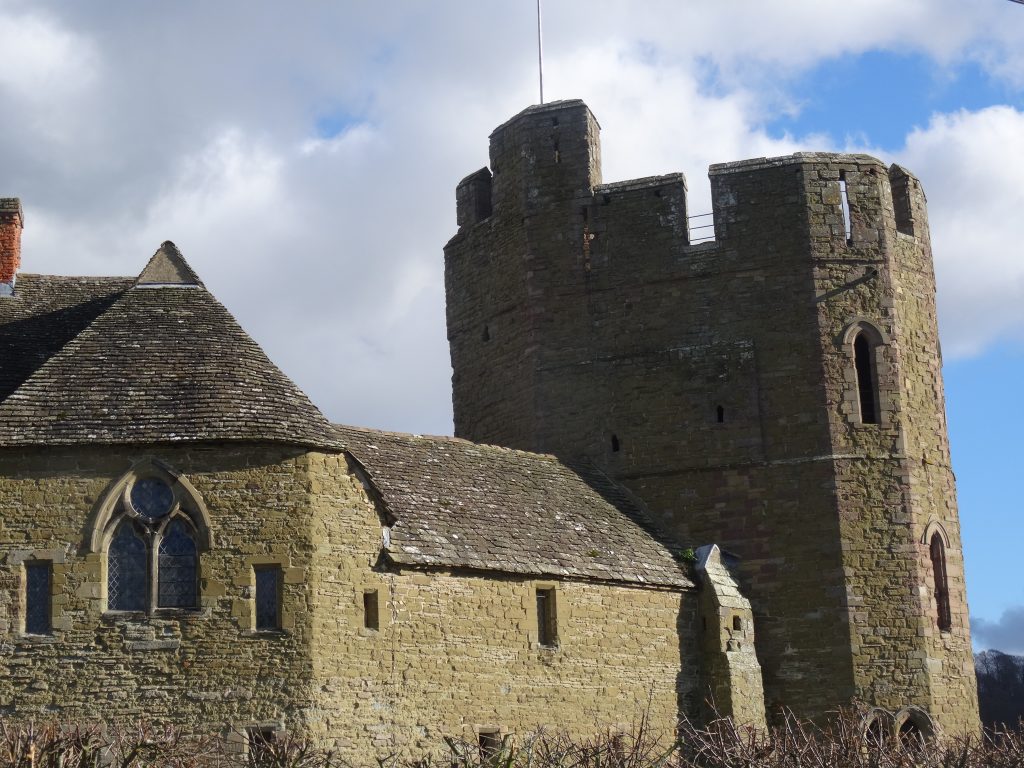
But Laurence was more than an upstart merchant of the Marches, he was highly influential at court, advising the King about the wool trade with the continent. Laurence and his brother John were lynchpins in the export trade to Flanders, by turns both an ally and an enemy of England. In the year 1294, in which my latest novel begins, Laurence and John of Ludlow were at the height of their wealth and influence. Across the channel, King Edward’s Duchy of Gascony (southwest France) had been seized by the French King Philip IV, known as ‘The Fair’ (fair in appearance, not in behavior).
Edward needed to fund and raise an army to cross the sea and defeat the French. But this was harder than it used to be. Many of the Marcher Lords and Earls, as well as the knights who owed him service, refused to fight overseas. In a tight fix, he sent two brutal officers into Wales and the Marches to conscript men to serve in Gascony. The Welsh had been rebelling against the overbearing rule by the Anglo-Norman aristocracy intermittently for many years. This conscription was the final straw. When the Welsh men were mustered at Shrewsbury Castle to be sent to France, they rose up and killed the man who had conscripted them. Then, in a coordinated action, they attacked and burnt Castles across a huge area including Caernarfon, Denbigh, Ruthin, and Castell y Bere.
King Edward was now fighting wars on two fronts. And he had less money than ever.
The Ludlows advised King Edward to raise cash by tripling the customs rate on wool exports. The wool producers were outraged, as they were now going to bear the burden of financing the military operations in France and Wales. John and Laurence were sent by the King to accompany a fleet of ships loaded with wool and £25,000 worth of silver, a bribe for Edward’s continental allies in and around Flanders. He desperately needed their help to defeat the French. But a storm hit the fleet on the 26th November 1294, and several of the ships were wrecked, including the one bearing Laurence and John. Laurence’s body was found, washed up on the Suffolk coast. It was transported back to Ludlow for burial in St Laurence’s Church.
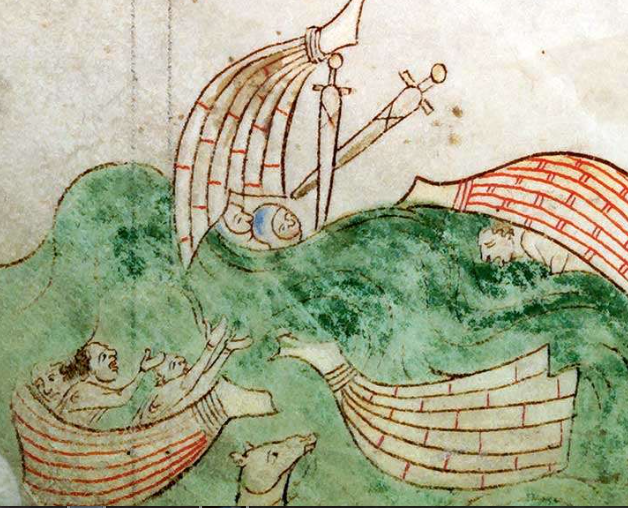
The Chronicles of the time were usually written by monks. Monks were big wool producers and, therefore, not fans of the Ludlow family. They wrote with smug satisfaction about the fate of these enormously wealthy and unscrupulous men, reporting of Laurence that ‘Because he sinned against the wool-growers, he was swallowed by the waves in a ship full of wool.’
Of John’s body we hear nothing, but his widow, Isobel, does not stay silent. She appears frequently in the medieval archive of Shrewsbury, where she kept a large townhouse backing onto the river.
Dig down into the records of this strategic town and we discover that after she was widowed so suddenly, Isobel took on the name of her first husband, Borrey, and began trading independently. This was highly unusual. It would have been normal for her to be known as ‘Isobel, once wife of John of Lodelowe’. Isobel Borrey is also recorded as a burgess of the town (the only woman in Shrewsbury to be so named). She was obviously a seasoned businesswoman and took advantage of one of the laws created by Chancellor Robert Burnell that was passed at the Acton Burnell Parliament in 1283, the Statute Merchant. This law was supposed to facilitate the administration and collection of loans by making it possible to record loans only in certain towns. Shrewsbury was one, Hereford another.
Isabel Borrey made more than thirty large loans in her own name after John’s death. She also financed a rebellion against the rightful bailiffs of Shrewsbury in 1303, and installed her own chosen men. She then sued the burgesses for the damages that occurred during the reprisals against her during the rebellion. A woman of guts, energy, ambition and determination, and for a writer, a wonderful character to bring back to life again.
The Ludlows weren’t the only high profile casualties of the unrest in the late 13th century.
If we travel down from Ludlow, at the mid point of the 257 km Welsh English border, to Gloucester at its most southern point – we are in the place where a knight of King Edward’s household was arrested in September 1295, and taken to London to be tried for treason. Sir Thomas Turberville was the first man to be executed for spying in England. And what an execution it was. There was pageantry and there was cruelty in equal measure, as this was a nobleman who had been a trusted servant of the King. But in the chaotic war for Gascony, Turberville’s loyalty was sorely tested. He was taken hostage and, for his freedom and that of his sons, he made a deal with King Philip (the not so fair) of France to pass on information about the English defences.
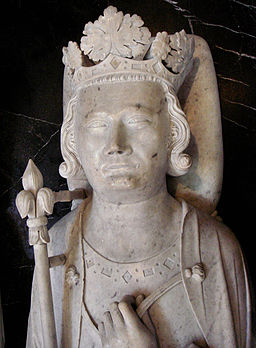
Sir Thomas de Turberville was part of a Norman family given land in Glamorgan and Dorset. His treachery and death became the subject of a popular anti-French ballad at the time. Much later, the de Turberville family in Dorset became notorious for another reason, when Thomas Hardy immortalized one of their louche sons in his novel, Tess of the d’Urbervilles.
Enough of the famous and infamous. The millions of ordinary people, ignored by history, are just as important, although one must delve differently to find them. Their traces remain in the shadows of ridge and furrow ploughed across the fields, the remains of pottery thrown out of badger setts. They may have been tied to the land in small villages, but they were also connected to towns, markets, and the great centres of pilgrimage by the well-trodden roads that still exist today. It was the labour of the ordinary people that built the churches, it was their feet that wore down the threshold stones, their sharpened arrows that left grooves in the doorways, their candles, lit in chantry chapels, that willed the souls of this volatile region through Purgatory to Heaven.
On the surface, this land certainly pleases the eye. It has hills and valleys of extraordinary beauty, views of distant mountains, sunken tracks roofed by trees, forested banks covered in bluebells and orchids, the colours of heather, of autumn trees and spring flowers. Church towers rise benevolently through the landscape. The ruins of castles welcome and also repel with their harsh promise of romance.

But go down a layer, or two, and there are stones and iron, bones and blood. There is ambition and feuding, love and greed, treason and artistry. It is these things that excite the imagination of a writer, that keep my heart racing to finish a story about a little known time in this very particular place. A place of many parts: ambiguity, contradiction, paradox, and paradise. It is no accident that so many artists and entrepreneurs have chosen to live here, and never to leave.
Our ambitions are alive and well in the Marches.
Kate’s second medieval novel set in the Marches, All the Winding World, (sequel to The Errant Hours) was published in June 2018.
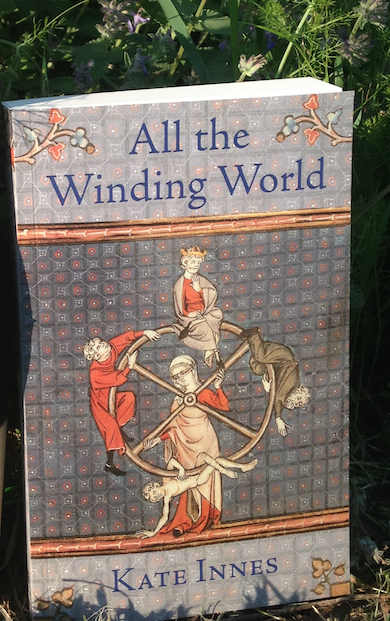
www.kateinneswriter.com / @kateinnes2
A Tempest for our times
I do hope that all my readers are staying well. I imagine that, like me, many of you are feeling hemmed in by the worries and restrictions of this time. Hopefully this post will provide a bit of distraction – and some brain fodder.
Good Reads for Strange Times number four:
‘Hag-seed’ by Margaret Atwood
Published in 2016 by Hogarth Shakespeare and in paperback by Vintage
301 pages
This is a retelling of ‘The Tempest’ by Shakespeare.
I hope that doesn't put you off. All my teenage children now hate Shakespeare due to a combination of school exams and a well-meaning mum, convinced that they would love the plays in the end, who took them to one too many. If Shakespeare has not been to your taste up till now, I’d urge you to try this version. It’s definitely different!
In 2016, to mark the 400th anniversary of the death of the Bard, several wonderful writers were commissioned to select one of his plays and reimagine it for our time. Margaret Atwood's version of ‘The Tempest’ is the only one I've read, so far. I’ll pop the list at the end (sourced from Wikipedia) - in case you'd like to try another one of them. I quite fancy the retelling of ‘The Taming of the Shrew’ - after whose main character I was named in 1968.
Back to Hag-seed. You may know that the title is one of the insulting names given to Caliban - the monster-like servant of Prospero - the magician at the heart of the story of The Tempest. Caliban is treated badly by everyone, and blamed when this treatment leads to his offending behaviour. It is mainly but not exclusively with Caliban that Margaret Atwood's sympathies lie. And that is why in this version, her version of the play, ‘The Tempest’ is being produced by a usurped artistic director who has ended up working in a Canadian prison on an Education through Theatre project.
Rereading it, I found that by page two I'd already come across the word 'lock-down'. The inmates of the Burgess Correctional Institution are, like us, temporarily restricted in their movements, but not in their minds. They have already done MacBeth and Julius Caesar. They’ve explored the dramatic possibilities of murder and ambition. But this year, their director insists on the play of 'The Tempest' – the tale of the usurped ruler of Milan who is left for dead on an island, but whose enemies are brought within his grasp. And so it is within the play that is performed within the story of the play. Margaret Atwood enjoys messing about with these feedback loops with her incisive, driven, witty prose.
It's an addictive, sly interweaving of a character-driven modern novel with the legendary, supernatural, revenge drama, peppered with the convincing and bizarre details that Atwood creates to spark her inventions into life. It’s got her trademark nose for corruption and the worst parts of human nature, with the eventual, almost inevitable, practical acceptance of love and forgiveness. It’s got her surgical gaze at political power play - told from a victim’s point of view who is allowed to reverse his role.
I found that one of the most enjoyable aspects of the book was the rapping versions of Shakespearean verse. She pulls off these leaps from what we might think of as high to low culture with such a light, adept touch that we realise there is actually no yawning chasm between them. Here’s a little example from the prisoner ‘SnakeEye’ who is playing Antonio (the usurping brother of Prospero):
. . .
“He was stuck in his book, doin’ his magic,
Wavin’ his wand around and all that shit,
I took what I like, and that was fine,
Whatever I wanted, it was mine,
I got so used to it.
But he didn’t look, he was slack, didn’t watch his back,
What a fool, not cool, laid out the temptation,
I was bossin’ around the whole Milan nation,
He didn’t see what I took, it turned me into a crook,
Turned me into his evil twin, I went the way of sin,
Only way I could win.
So I went to the King, the Naples King,
He wanted control of that Milan thing,
So we made a deal,
He’d help me steal it, I’d pay him back,
And we grabbed my Bro, that Pros-per-o,
In the dead of night,
We paid off his guards so they didn’t put up a fight . . . “
Atwood’s humour and humanity shine from the story like a lighthouse on a rocky island. Hag-seed is a quick and engrossing read - that equally rewards rereading. I hope you enjoy it.
Other Hogarth Press Shakespeare reinterpretations:
The Gap of Time by Jeanette Winterson – a retelling of The Winter's Tale
Shylock is My Name by Howard Jacobson – an interpretation of The Merchant of Venice
Vinegar Girl by Anne Tyler – a retelling of The Taming of the Shrew
Hag-Seed by Margaret Atwood – a re-imagining of The Tempest
Macbeth by Jo Nesbø – a retelling of Shakespeare's Macbeth
Dunbar by Edward St Aubyn – which re-tells the story of King Lear
New Boy by Tracy Chevalier – a re-imagining of Othello
Additionally, Gillian Flynn is working on a re-telling of Hamlet, due for release in 2021
A light in the darkness
A week of isolation (in the broadest sense, as I am sharing the property with 3 teenagers, a dog, 4 chickens - and even, occasionally, my doctor husband) is already done and gone, and I wonder how you are finding it? I've been surprised at how quickly this new way of living has started to feel normal. I look at films and ads on tv of people milling about in groups, hugging and kissing, and wonder why they are taking so few precautions. Shouldn’t they be more wary? Where on earth are their masks and gloves?!
I think about going out to get provisions and a great weariness overwhelms me. It's so demanding and stressful negotiating public spaces. Better to stay at home and, hopefully, harm no one.
I suppose it is one of the great abilities of our species that we so quickly adapt to new circumstances and environments. And that is a good way into thinking about my next book recommendation to you - 'Bearmouth' by Liz Hyder. Published in 2019 by Pushkin Press.
In the spirit of full disclosure, Liz is a writer friend of mine. I remember the moment, sitting in her front room, when she told me about her nearly finished YA book set in a fictionalised Victorian mine. At the time I thought "what a fabulous title!"
Now, six months after its publication, I can tell you that the content more than matches the cover.
The main character is one of the young mine workers, Newt, and the story is told in Newt's unique voice and language, (which takes only two or three pages to get used to - especially if you have a phonetic speller in your household, as I do). The men, boys and (secret) girls in the mine are all subject to the most rigid form of isolation. Newt hasn't seen daylight since the age of four. The workers are exploited, and kept ignorant of their rights. The masters exert their authority ruthlessly, with tiny rewards and a twisted form of religion.
Sounds dark - and it is, literally and figuratively. But there is so much humanity in Bearmouth - as we also see at this dark time in our own society. People help each other, even at risk of their own death. People give hope to each other, and like the rare candles in the dark of the mine, strength, compassion and love shine out in the darkness. The mine is a microcosm of society, and the plot shows how courage and vision can change even the most entrenched evil.
I read Bearmouth in one sitting, on a plane on my way to see my dad in the US (and doesn't that feel like another era already?) I was utterly immersed in a story that flows like water through an underground cave system, carrying you on to the inevitable waterfall of freedom. Forgive me the poetic licence, please. What I am trying to say is that 'Bearmouth' will grab you and not let you go - taking you through the darkest places and then, so satisfyingly, into starlight.
Although marketed as a Young Adult novel, and shortlisted for the Waterstones Children's Books of the Year 2020, 'Bearmouth' is a great adult read too.
I hope you enjoy it as much as I did.
Hopefully not a thousand and one nights in lockdown
Distraction. It can be good, it can be bad.
We probably all know a bit about distraction on social media. When I've spent too long scrolling through Twitter or Facebook, I often feel sheepish. A bit ashamed. 'Shouldn't you be spending ALL your time in constructive pursuits?' I demand of myself.
We can be pretty harsh on ourselves.
But it is something that eats away at concentration, and I would like to do it less and get the scales of my time better balanced.
Then there is the good kind of distraction. At the moment, I don't want to think about the possibility of members of my family who work in the NHS becoming ill. If I think about it too much, I might frighten the children with my anxiety. And to distract myself from thinking about that, I read, I write, I research, I watch films. I look out at the world. There is so much to think about.
Good distraction leads the mind away from mithering over hurts or potential disasters. A toddler who is about to lose their temper about a fallen ice cream can often be placated with a balloon, and in the same way, our monkey mind can sometimes be redirected from destructive ruminating by something new, exciting and shiny.
My third recommendation for a good read for this extraordinary time is 'One Thousand and One Arabian Nights' written by Geraldine McCaughrean (Oxford Story Collections edition). I think everyone knows a little bit about 'The Arabian Nights'. I only knew the bare bones before getting hold of this version and taking it on a holiday in a camper van through Norway (not the most appropriate context!). What I was not prepared for was the humour, the modernity, the cunning, the poetry, and the beauty of the stories, embedded in the embracing arc of revenge and love rendered so movingly by Geraldine McCaughrean.
This is often marketed as children's fiction - Sinbad the Sailor, Ali Baba, Ala al-Din and his wonderful lamp (and this version is suitable for children) - but 'The Arabian Nights' is more than just those disneyfied tales. It is a collection of stories for all ages, that have their origin in the oral tradition of Asia and the Middle East, when the long, dark nights of the desert could be made more enjoyable by sharing tales and music around a fire.
These tales were written down perhaps as early as the 8th century AD, and certainly by medieval times, but the original, oral tales are much older - stretching in time and place to the great dynasties of India and Persia - with Arabian tales added later. There are lots of adventures and burlesques, but also more subtle tales of tricks, thieves, fables, scolds - all giving an insight into the abiding human condition. (The erotica is omitted from this edition - you may be disappointed to hear - but there are many other versions to choose from.)
At the heart of the tale is the clever story teller, Shahrazad, who must distract her husband, King Shahryar, every night with a new story. He is determined to exact revenge on women in general for his first wife's betrayal and infidelity, ('Woman's love is as long as the hairs on a chicken's egg' he tells her. If any writers amongst you require simile or metaphor inspiration, it is here in abundance) by beheading a new wife every morning. Shahrazad is his thousandth bride. Scholars have explained her away as a frame for a collection of Arabian tales - a bit like The Decameron or the semi-legendary events around the creation of 'Frankenstein' by Mary Shelley.
But Shahrazad is not consigned to being merely a wooden frame for the tales in this version. She is a quick-thinking woman of foresight, bravery, resourcefulness and passion. She knows the power of story to distract and redirect. Her strength is in her ability to create new worlds for her psychopathic husband to inhabit every night, worlds in which he doesn't have to be revengeful and angry. Where he can see all sides of an event, rather than just one point of view. Where he can become someone else.
The stories she marshals to keep the King from ordering her death are very entertaining. But her management of her husband's moods and insecurities is a master class in the best kind of manipulation. I suppose her ability to fall in love with a serial killer could be a mark against Shahrazad, but as she converts him to reasonable behaviour in the end, and it is a story not real life, I think we ought to let her off.
I wonder if the creator of the story of Shahrazad was a woman. I really appreciate the way Geraldine McCaughrean, the contemporary storyteller, has explored her inner thoughts and her relationship with her younger sister. But whoever it was, they have brought Shahrazad and her rich store of tales to life for countless listeners and readers from all genders, ages and nationalities, for thousands of years.
So I hope you enjoy her tales and embrace the distraction, at least for a while.
Reading through Lockdown
Who knows when our lives will feel 'normal' again? I suspect that there are certain things we will never, ever take for granted in the future. A drink with friends - a hug with an older relative - a trip to a beautiful art gallery or museum - travelling to visit family. It's good to be reminded that these things are wonderful, important, nurturing - and fragile.
I believe that all the writing courses I was due to run early this year will have to be cancelled. The talks and presentations to various groups as well. I hope to keep writing, but the opportunity to concentrate is elusive. However, there is something I can do (besides write books and keep my three teenagers from consuming all the food in the house in one day). I'm going to try to suggest a good book every week for the next little while, hoping that reading them provides consolation and distraction.
Books give you a place to go when you have to stay put. They are escape hatches into another reality. They are secret gardens to hide in. They are forests in which you can lose your way and your worries - at least temporarily. These will all be books I've read, and some will be particularly suitable for a time of isolation.
Book Number One: The Siege - by Helen Dunmore. Setting: Leningrad in WW2 Published: 2001 This book blew me away when I first read it. The quality of the writing, the intensity of the situation and the believable characters made it one of my all time favourite books.
The subject matter is grim. Leningrad was starved. The people lived through bitter cold, famine and brutality. But the outcome is an uplifting, unforgettable narrative about family, love, commitment and true grit. The tenderness with which each relationship is detailed, and the way Helen Dunmore expresses the appreciation of small objects of comfort make this a very memorable and important read for these times.
I highly recommend this book, and I also recommend you order it from your local independent book shop - which will be able, most likely, to send it to you. There are always audio book options and ebooks too.
This book may help us to see that our lock down is quite luxurious by comparison. Perspective and context is everything! I hope you enjoy it. I hope you stay well in the midst of this frightening pandemic. I wish you strength.
Bad Guys Make Good Plots
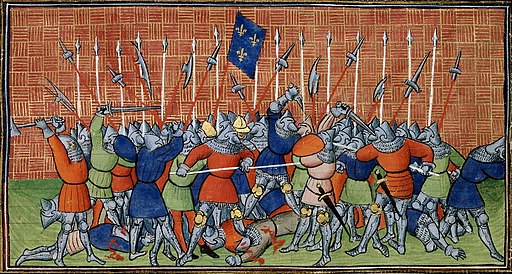
Recently I was asked to contribute a guest post to the fabulous 'History Girls' Blog. This is a group of best-selling writers of historical content, fiction, non-fiction, for children and adults. Needless to say, I was delighted to be part of it, and here is the blog I wrote - about the necessity of a good villain.
A story needs a villain – someone to get the action going and make the protagonist look heroic. This is as true for historical fiction as it is for any other kind. We love to shiver at their evilness and then gloat as they get their comeuppance. And history certainly has plenty of real villains to choose from for the historical novelist. It is jam-packed with good material for bad guys.
In All the Winding World, my latest medieval novel set in the late 13th century during the Anglo-French War, one particular historical character galloped into the plot displaying all the necessary qualifications. Rich, cruel, self-centred, eccentric, creepy, sadistic – Robert II Count of Artois had it all. Including a gory and well-deserved demise.
You’ve probably never heard of him. Neither had I. Born in 1250 AD, he was the son of Count Robert I and Matilda of Brabant – and nephew of the sainted King Louis IX of France. However, the piety of his uncle had not rubbed off. Count Robert II was a hedonist with the means to satisfy all his many and varied desires. At birth he had inherited the wealthy territory of Artois on the border between France and Flanders, as his father was already dead when he was born.
Over the course of his early life, he became a ruthless and talented military leader, taking part in many of the wars that were prevalent in the 13th century. He married three times and had several mistresses. This was not unusual, as women were highly likely to die in childbirth. So, based on this brief biography, perhaps you could say that he was a typical aristocrat of the time.
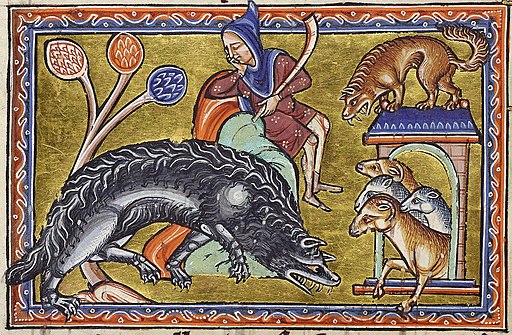
But his choice of pets was a real giveaway that he was villain material. The Count of Artois was known to keep a pet wolf, which he allowed to hunt across his lands, eating the herds of the local peasants (hopefully not the peasants themselves). He had a large castle and walled park at Hesdin (now Vieil Hesdin) in Boulogne North East France stretching over eight hundred hectares, which he filled with the most extraordinary attractions. The Count was said to enjoy practical jokes, and his park was designed to freak people out in many imaginative ways. If you’d like to know what it might have looked like, a detail of a painting can be viewed on this website: http://www.medievalcodes.ca/2015/04/the-marvels-of-hesdin.html
We often think that medieval people had little in the way of what we would call ‘technology’. But this was not so. As well as real exotic animals, Hesdin housed automata – skillfully constructed mechanical beings that moved, ‘spoke’ and frightened the guests. In a later set of accounts, these were described as including a talking mechanical owl, caged birds that spat water, and waving monkeys covered in badger fur. I can think of several horror films featuring this kind of thing.
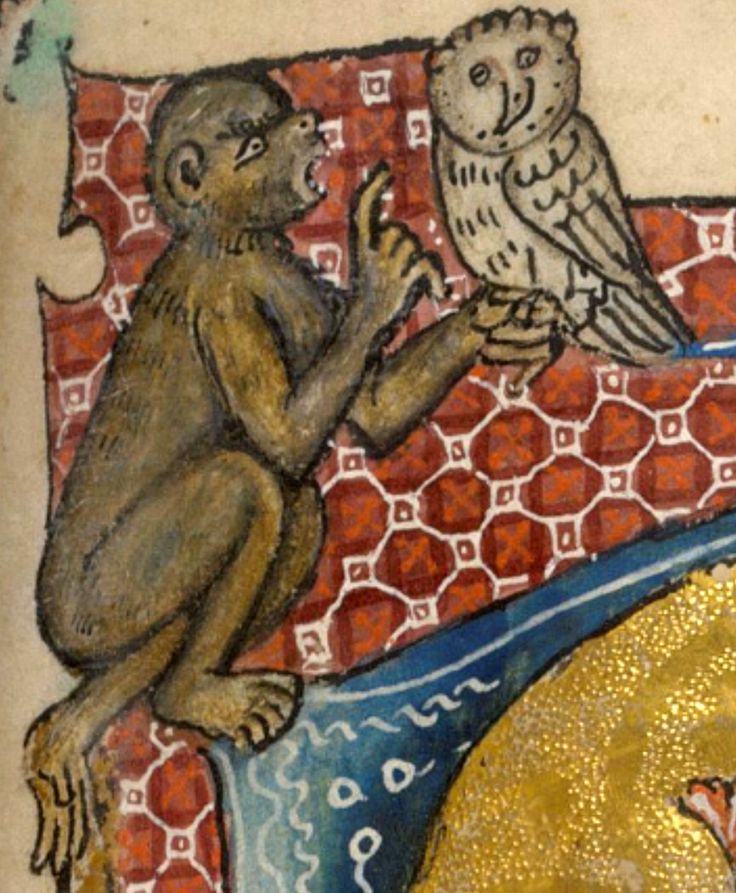
The park also provided numerous ways of being dunked in water and covered in soot or flour. All designed apparently to amuse, if not the victim, then certainly the Count. The engineers who made these marvels would have employed devices used in both agriculture and the military, and their inventions were to have a profound impact on William Caxton, the first man to run a printing press in England when he visited it in the 15th century.
But I digress. If a story has a villain, it follows that he must get his just deserts. It happened to the Count a few years after the action of my novel, but it was worth waiting for.
Robert, along with the cream of the French aristocracy, rode into Flanders in July 1302, to teach the region a lesson. After two years of brutal occupation and unrest, the people of Flanders had revolted against the French rule in May 1302 and killed many Frenchmen in Bruges. King Philip IV sent in 8,000 men to quell the uprising and put Count Robert II of Artois in charge. But when the two armies met outside the town of Kortrijk (Courtrai) on the 11th July in what came to be know as the ‘Battle of the Golden Spurs’, all did not go as the French had planned.
The French cavalry proved to be no match for the Flemish infantry and their pike formation. In the end, three hundred noblemen of France were slaughtered by the yeomanry of Flanders. In revenge for French cruelty, they took few if any knights prisoner, counter to the usual practice of holding nobles for ransom. Count Robert was one of those to be killed, in a most satisfying and humiliating way.
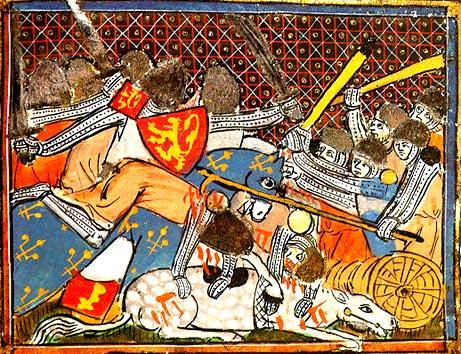
Robert of Artois was surrounded and struck down from his horse by an extraordinarily big and strong Cistercian lay brother, Willem van Saeftinghe. According to some tales, bleeding from many wounds, Robert begged for his life, but the Flemish refused to spare him, claiming that ‘they did not understand French.’
This is what the Annals of Ghent had to say about the matter:
“. . . the art of war, the flower of knighthood, with horses and chargers of the finest, fell before the weavers, fullers and the common folk and foot soldiers of Flanders . . . the beauty and strength of that great French army was turned into a dung-pit, and the glory of the French made dung and worms.”
‘Good riddance!’ one can almost hear the fed-up peasants of Artois cry.
(All images Public Domain)
The Cartography of Leaving
It was early December 2018, and I was in Shrewsbury Library filling a rare empty half-hour between appointments. I often gravitate to a particular reading room in that library - covered in graffitied wood from its days as a boys school. Giving in to my fondness for ancient cultures, I chose a book of medieval art and sat down to browse through its pages.
Close to the beginning of the book I found a map of Europe. I looked at it carefully, and the longer I looked at it the more I saw the print of the UK on the coast of France and the other countries along the Channel - and their imprint on us. Geologists have long known that the two land masses were very recently (at least in geological time) connected.
Having trained as an archaeologist, I understand that our island has been host to many groups of people, some coming for peaceful trade, others for violent colonisation. Since we became bipedal, humans have always travelled, always immigrated and emigrated. Borders, even watery ones, are human constructs that cannot prevent natural processes. Work on DNA from ancient populations confirms that people in the UK were diverse long ago, as they are now. This is a strength we have benefited from for millennia. Our technology, commerce, music, art, literature, language - all have been enriched by it.
The longer I looked at the map on that December day, the more the sadness I feel about Brexit became imbedded in the undulations of our coast. It reminded me of the way a long-worn ring leaves an indent on the finger. Or the way hands, used to being held, must curl in on themselves in the absence of the other. This poem is the result, and now is published in the New European magazine, in a week when the members of parliament are set to make decisions that will determine the nature of our borders for many years.
But the fact of our common bedrock remains. We will always be connected, no matter what some self-interested, power-hungry politicians would have us believe.
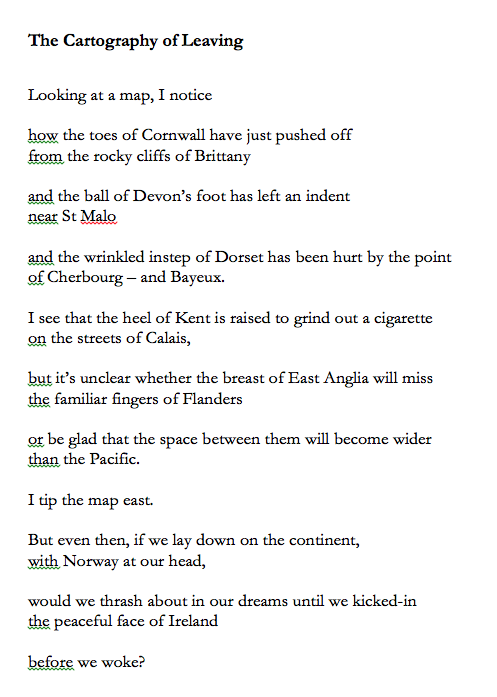
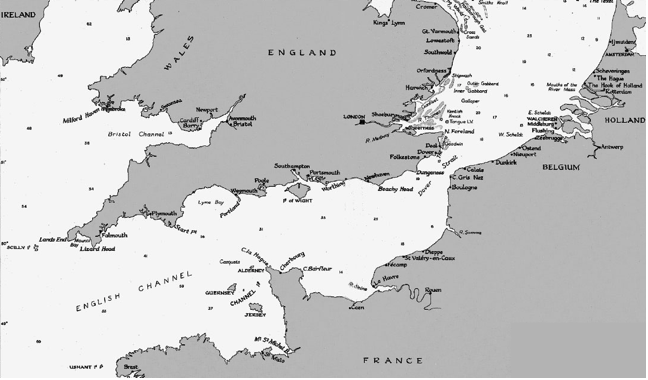
The Historical Novel Society reviews ‘All the Winding World’
I was so relieved. Not only did the reviewer, Misty Urban, say many lovely things about 'All the Winding World', but she also happens to have a PhD in Old and Middle English. To know that a medieval expert approved of the world I had created was immensely gratifying.
I owe thanks to the Historical Novel Society who work hard to promote good historical fiction, and to their reviewers who voluntarily give up their time to help authors. They probably know that a good review to a writer is like Christmas Day to an eight year old.
For all the happy excitement you have provided, I thank you reviewers everywhere!
All the Winding World
WRITTEN BY KATE INNES
REVIEW BY MISTY URBAN
Innes brings her poetic sensibilities to bear in this lovely sequel to The Errant Hours, set ten years later. Illesa is married to Sir Richard Brunel, has borne three children and lost one, and is happily settled at their small manor farm in Shropshire when King Edward’s call for war to regain the lost Duchy of Aquitaine summons Richard, despite his maimed leg and missing eye, back to the battlefield. French treachery lands Richard in a Bordeaux prison, and Illesa launches a dangerous scheme to trade a priceless clerical garment for her beloved’s life. Helping her are Gaspar, a witty traveling player carrying a fatal secret, and Azalais of Dax, a skilled trobairitz (female troubadour) trained in the songs of courtly love.
Innes’s accurate details and descriptions of the furnishings and landscape of life in late 13th-century England and France are a pleasure to revel in. She conveys the richly textured sense of a world bloody with war and other hazards, clocked by the rhythms of the natural seasons and Church time, and saturated with that strain of medieval Christian piety peculiar to Western Europe. Though the plot is satisfyingly suspenseful as Illesa drags herself and her friends into the arms of their enemies, the most vivid character is the setting, the buildings and cities that come alive with all their strange accoutrements: priests and Templars, precious books and costly clothing, pet weasels and cunning tax collectors. Innes’s poetry makes an appearance in the songs sung by Azalais, an enigmatic character who deserves her own book. This skillful crafting of and immersion in a brutal, beautiful, breathing world rife with treachery, disease, and dangers unseen will enchant readers new to the period and delight those who know it well.
Details
PUBLISHER
PUBLISHED
PERIOD
CENTURY
Review
APPEARED IN
Countryfile – Highlights of Shropshire – follow in the footsteps of medieval pilgrims
The following is an article I was asked to write for Countryfile Online - a lovely magazine reflecting the interests of the BBC Television Programme. It was a great pleasure to put into words just how special Shropshire and the Welsh Marches are - and always have been.
Archaeologist and author Kate Innes shares her pick of the best places to visit in Shropshire – and reveals how you can follow in the footsteps of medieval pilgrims
One of the most famous of all medieval stories is about travel, but perhaps you, like me, have always considered the Canterbury pilgrims to be the exception rather than the rule. Surely it was far too slow and tiring to go beyond the parish boundaries before the invention of the internal combustion engine?
But it turns out that the Middle Ages was a very mobile time, and, although difficult and sometimes dangerous, travel was common and undertaken by every class of person. Horses, mules and donkeys helped. Water travel was often quicker than overland. A journey might even have provided a welcome break from the drudgery of home, as long as there was food, drink and a bed along the way. The inns, taverns and monasteries along the major routes would certainly make sure that there was – for a price.
Perhaps surprisingly, one of the most travelled areas of Medieval Britain was the Welsh Marches, an area now famous for its peace and tranquility; a great get-away from hectic urban living. A bit of research into its turbulent and bloody history reveals a fascinating interlacing of routes that can still be followed today. As a writer of historical fiction set in medieval times, I’ve trodden these paths, and these are just a few of my recommendations for an encounter with the Medieval Marches.
- Walk: Acton Burnell, Shropshire
- Britain's treasure map: our guide on where and how to hunt for treasure
Take, for example, the experience of a medieval archer in the service of Lord Mortimer of Wigmore Castle near Ludlow. When war broke out with Wales and his company was sent to Chester, he would have marched north on an old Roman Road, stretching through the Herefordshire and Shropshire countryside, passing the impressive fortified manors of Stokesay and Acton Burnell.
The main artery of the A49 echoes the Roman Road through the South Shropshire Hills AONB, with glorious footpaths stretching up on either side. Once you have climbed the Ragleth Hill with its superb views over the Long Mynd, stop at the friendly Ragleth Inn for a taste of true Shropshire hospitality. Afterwards, you may even feel up to another climb. From The Lawley you get a beautiful view of Caer Caradoc, crowned with a hillfort, and the distant, wreathed Welsh Hills.
Or imagine the journey of a village woman living in Eaton-under-Heywood, at the base of Wenlock Edge, whose prayers for a successful harvest have been answered. She rides her pony through the Long Forest – a busy place of charcoal burners, coppicers, trappers, and foresters – remembering to be wary of the resident robber baron, Ippikin. At the richly decorated Priory in Much Wenlock, she gives thanks at St Milburga’s shrine.
Nowadays the Jack Mytton Way, a long-distance bridleway, covers the same ground. From Wenlock Edge there are exquisite views over lush Apedale, known in medieval times for its apiaries full of honeybees. There you can enjoy a pint in the rambling beamed bar of one of the oldest pubs in Shropshire - The Royal Oak at Cardington. Much Wenlock is a brilliant base for exploring this area, with intriguing independent shops, the picturesque Priory Ruins, as well as historic hostelries.
The clue is in the name. In the lovely Welsh Marches, the medieval population was definitely not stationary. And the best way for us to experience the area today is by using their slower forms of transport.
All the Winding World by Kate Innes is out on June 22nd (Mindforest Press, £8.99)
Main image: Getty Images
A ship leaves port – the launch of ‘All the Winding World’
At the very beginning of writing 'All the Winding World', I knew there would be maritime elements in the story. So I popped down to my old University town, Southampton. I didn't rate Southampton much when I was a student, but now that I'm fifty, I found it was delightful to explore the old town and the docks area, and to have the chance to rediscover all the things I had forgotten from countless lectures: the types of ships that were used in medieval times, the products traded, the building of the town walls because of French attack. etc.
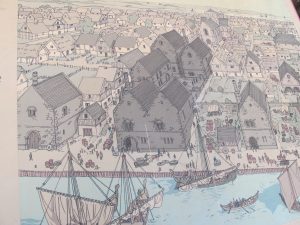 Medieval Southampton before the harbour was enclosed
Medieval Southampton before the harbour was enclosed
I also visited a beautifully reconstructed medieval wine merchant's house. The multitudinous nature of its walls was astonishing.
Seafaring was very important to the medieval economy and to national security. It could potentially move goods, horses and soldiers faster than any other form of travel. And it was often safer.
Close to the beginning of 'All the Winding World', a ship of reluctant conscripts sets sail on a fool's errand to fight for King Edward I in Gascony. The ship is a cog - the workhorse of the medieval fleet. It could hold 12 horses, and perhaps 30 men, plus tonnes of cargo. It had one central sail, and when heading off to war, it would be equipped with platforms fore and aft designed to hold men fighting in battle, or archers shooting at other ships. These platforms were known as castles.
The knights and men-at-arms said prayers to Saint Nicholas before they embarked, as he was well known as patron saint of sailors. The sea may have been marginally safer than the roads, but it was not something to be taken for granted.
I've been thinking about the launch of my novel, and wondering if it is similar to the launch of a ship. There has certainly been a large amount of sparkling wine involved, but none has been wasted. I wouldn't dream of breaking a bottle against a box of books.
I do hope that my book goes to unknown places, and finds new ports and harbours, distant inlets and quays where it can unload the story from its hold.
But thinking about it, each copy of this book is a like a ship, and so what I have done is release a fleet into the world. Each one will be read in a different way, each one will be remembered or forgotten, sailed once or numerous times, passed on or kept and treasured.
This week I had the privilege to share my opinion about other people's books in The Big Issue , a publication for which I have a great deal of respect. I was asked to select my 'Top Five Books about Medieval Britain'. It was not easy making such a selection, but I was glad to have the opportunity to share books that have inspired me, and that I feel deserve a wider readership. (Readers, it seems, can be ships too!) I chose Morality Play by Barry Unsworth, Medieval Comic Tales by Derek Brewer, The Hanged Man by Robert Bartlett, Company of Liars by Karen Maitland and The Time Traveller's Guide to Medieval England by Ian Mortimer.
As our books sail out of their home port, they cease to be exclusively ours and belong instead to the wide world. Each one becomes specific to the reader. The books I selected have taken up a permanent place in my book harbour, as, I hope, All the Winding World may do in others.
You can now buy the sequel to The Errant Hours as an ebook or paperback from Amazon , or directly from me via the Get in Touch page.
Waiting for ‘All the Winding World’
As I write this, 500 copies of my second novel are in transit, due to arrive at my house on a pallet sometime tomorrow. I think this must feel a bit like waiting for a prom date, hoping that they have not chosen a really embarrassing outfit to wear, and that they have remembered to brush their teeth! I do know my book, inside and out, but since I pressed send, and it pinged over to the printer, I imagine it could have taken up all sorts of strange habits and styles of dress.
Then I have to give myself a good talking to. The imaginative life can get a bit out of hand at times!
This book is a sequel. If you haven't read The Errant Hours, All the Winding World will still be understandable and, I hope, enjoyable. But those who are familiar with the thirteenth century world of Illesa, Sir Richard, Gaspar and William, will understand their history and perhaps find that the echoes of the previous book still sound in the story, ten years later.
Along with the old, in comes the new. One of the most vibrant characters I've ever had the privilege to write is Azalais of Dax. She emerged from some research I was doing into the trobairitz (female troubadours) of Occitainia. This southern and western area of France was less strict about what women were allowed to do in the early Medieval period. They had more freedom and more power than was usual in the rest of Europe. It was in this culture that the concept of courtly love was born, and women took centre stage not only as objects of love, but as actors in the dramas and creators of songs and poetry in their own right. I came across Azalais de Porcairages, a talented trobairitz from 12th century Provence, and immediately knew that the character in All the Winding World would be named 'Azalais' after her. And she certainly lives up to her name!
I'll be talking about the trobairitz and other influences on All the Winding World at Wenlock Books in Shropshire on the 23rd June at 4pm. This slots into a wonderful celebration - Feminist Book Fortnight - that started on the 16th June. I'll be doing a reading from the book, answering questions and sharing a glass of celebratory Prosecco to launch my book into the world. If you'd like to come along, please contact the bookshop on 01952 727877.
There are several other launch events going on, all listed on the News and Events page . But if you don't happen to live near Shropshire, you can now order All the Winding World from Amazon or your local bookshop. If you want an ebook, preorder from Amazon and it will be delivered to your Kindle on the 22nd June, which is the official launch date. If you prefer a paperback, you can order now, and it should be with you before the end of the week.
You may be wondering why this novel is called 'All the Winding World'. Titles are slippery and complex things, in my opinion. But this one is at least partially explained by this song, sung in the book by Azalais. The lyrics were written by me.
“I take the flax, I take the wool
and from the distaff, thread I pull.
I take the yarn, I weave a cloth
made of many lover’s knots.
Around the spindle, I am bound.
My heart, around your heart, is curled.
Like the shuttle, up and down,
like the needle, in and out,
I will seek you till you’re found,
through all the winding world."
Kate Innes
Poetic Encounters #1 – A guest post by Andrew Howe – Visual Artist
Since the start of the year, I've been collaborating with visual artist Andrew Howe, as part of the Encounters Exhibition at the Visual Arts Network Gallery in Shrewsbury, which opened on the 20th March. It has been a pleasure to work with Andrew, and to share ideas about mythic landscapes and the fugitive borders between wild and inhabited spaces.
This is the post he wrote about our collaboration. He explores the creative process of working together so well, that there is little I need to add. Only to say that the exhibition is on until the 28th April, full of exciting, powerful visual and poetic work. If you are in the area, I commend it to you.
Poetic encounters #1 Kate Innes
In my post about collaborations, I mentioned that I have been working with three other writers/artists to make work for an exhibition called Encounters that opened this week at the VAN Street Gallery in Shoplatch, Shrewsbury.
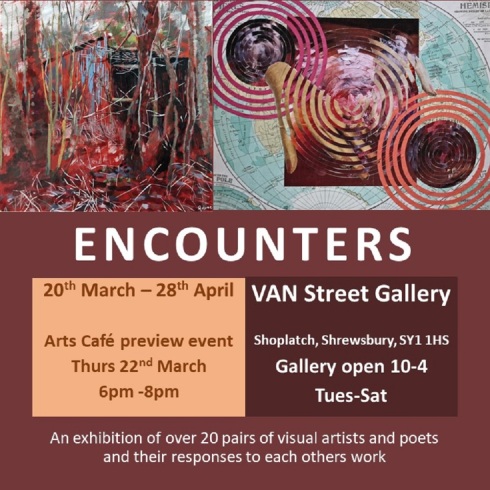
The project was the idea of Ted Eames, and it brings together over 20 pairings of visual artists and writers, one artist making work in response to the other’s work. There have been similar such collaborations in the past, but rarely in such numbers I suspect. Having been involved in the installation of the exhibition, I had a chance for a brief preview. I am fascinated by the diversity of work produced, and can’t wait to go back to spend more time absorbing it.
My own work comprises six paintings and collages with Kate Innes and Ursula Troche, and two poems with Paul Baines. Perhaps on first viewing it appears quite diverse/eclectic, but there is a common theme which links everything, although this may not be immediately obvious.
In this first of three posts, I will discuss the work made with Kate Innes.
Of the three pairings, the work with Kate involved the most discussion and interaction in the development of each piece of work. We found many common interests and a similar sensitivity to the landscape and the human history within it.
Kate is a published poet (Flock of Words) and novelist (The Errant Hours). She writes beautifully about the rural landscape, with a knowledgeable eye for the detail of flora, fauna, and geology. There is also a historical/mythical content to her work which clearly links with her background in archaeology and in museum education.
My drawings of abandoned dwellings/cabins were an initial starting point of interest, and in particular, the curious dilapidated structure which I had found whilst walking near Shelton on the outskirts of Shrewsbury.
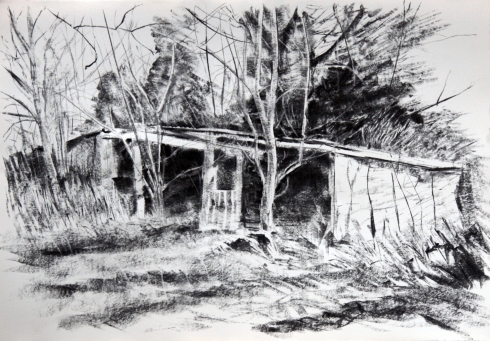
Kate, too went on foot to visit the place, and like me was drawn to the atmosphere of this small patch of woodland high above the River Severn which can be glimpsed through the trees. A group of people have been using the area as a gathering place and trees are marked with paint, bits of fabric and plastic, like totems. It felt tribal or ceremonial, like an ancient sacred site.
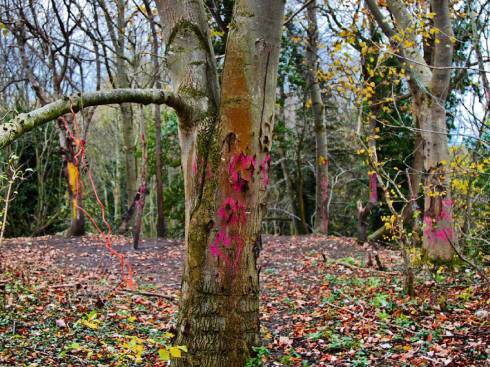
Ceremonial Trees / Bound with fluttering string / Tokens of faint hope (Andrew Howe 2017)
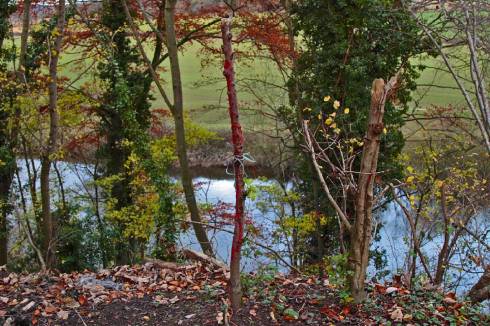
High vantage over / River Severn’s lush meadows / Buzzard soars above (Andrew Howe 2017)
Kate’s poem “The Other Land” captured some of the thoughts that come to my mind in these edgeland places:
“…at the edge of places we don’t belong
…
even the twist of a rope that won’t tie
Or the path that unwinds in a wood
It gathers its strength on a threshold…”
(Extract from “The Other Land”)
We discussed our responses to these enigmatic isolated and empty structures set in woodland, and explored some of the issues raised in my earlier post around Bachelard’s “Poetics of Space”, the temptations of the “hermit’s hut”, refuge/retreat, and the negotiations that must take place when two people take up residence. The titles of my trio of drawings “When Adam delved”, “And Eve Span” and “Who was then the Gentleman” struck a chord with Kate, referring to John Ball’s speeches that helped inspire the Peasant’s Revolt of 1381. These words relating to equality and social justice resonated.
I went on to develop studies for a painting of the shelter we had been to visit, which responded to “The Other Land” referencing certain features from the poem, like the coppiced trees. These included ipad drawings, a charcoal study and two oil studies:
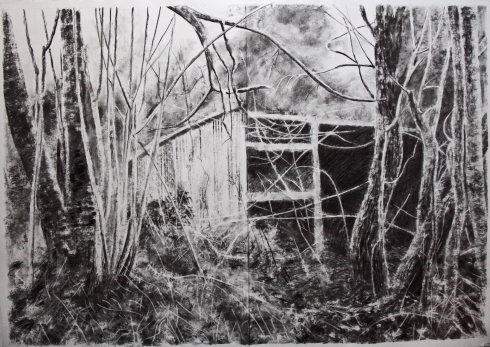
“Shelter”charcoal study, 85cm x 115cm
I made two paintings, quite different in scale and in style. The first was a small acrylic painting made in reverse on an acetate sheet, the second was a large oil painting on canvas:
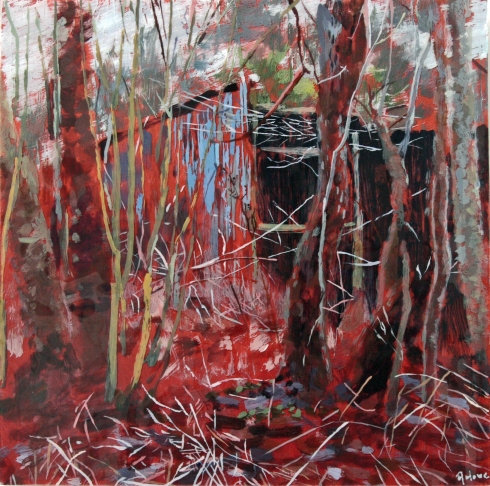
Shelter II, acrylic on acetate, 21cm x 21cm
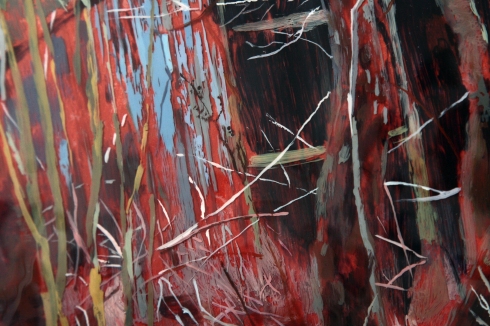
Detail from Shelter II
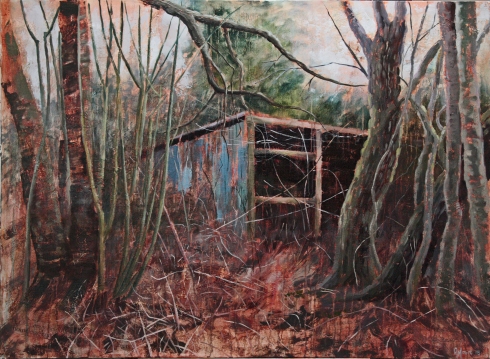
Shelter, oil on canvas, 90cm x 120cm
I can see flaws that niggle, but in general I’m pleased with the brooding feel to the paintings. There is just enough rawness, texture and painterliness in the markmaking. The brief period for the collaboration (around 3 months) encouraged a disciplined approach and a need for some risk taking.
Kate crafted a poem entitled “Adam’s Return” which responds to Shelter, and also to the trio of drawings, referred to above. To close this short narrative, she drafted a third poem specifically in response to “And Eve Span”. The sparse, measured style and ambiguous timing or timelessness of the poems’ positioning is, for me, reminiscent of the novelist Jim Crace, or perhaps more distantly Cormac McCarthy.
“He found the gate unguarded – except by thorn –
the angel goneThe forgotten trees had dropped their fruit
and multiplied…”
(the opening lines from “Adam’s Return”)
“...
Here they will live out their days
in a small and private place
intertwined as strands of wool
by twists of love and pain…”
(Extract from “And Eve Span”)
It was a privilege to see how subtle changes in wording in the few iterative drafts enhanced the poems, shifting emphasis, refining rhythm, suggesting alternative perspectives, picking up on certain aspects of the paintings. The three poems expand meaning and add greater depth to the paintings, and it was a pleasure to be a part of it.
Share this:
Rural Women – Past, Present and Future
Rural women - not a topic you see up for debate or discussion very often. But I believe rural women deserve more attention, and that they have been both under-estimated and under-represented. Their role has changed over time. Due to the rise of the cities, there are new challenges. But women living in the countryside, producing, raising, and nurturing, are as important as ever.
This event sets out to bring these issues into the open, and I'm delighted to have been asked to be part of a panel of experts who will be exploring the experience and importance of rural women in the past, present and future. Tickets £10 (£7 concessions) from Shrewsbury Museum & Art Gallery 01743 258885
<img id="" class="Apple-web-attachment" style="color: #000000; font-family: Helvetica; font-size: 12px; font-style: normal; font-variant-caps: normal; font-weight: normal; letter-spacing: normal; orphans: auto; text-align: start; text-indent: 0px; text-transform: none; white-space: normal; widows: auto; word-spacing: 0px; -webkit-text-size-adjust: auto; -webkit-text-stroke-width: 0px;" src="cid:8414E92C-2C7F-4A73-B4C7-55F1AD63C24F@home" alt="Rural Women.jpeg">
Travelling in Time and Place
I am spending a lot of time in the late 13th century at the moment, editing All the Winding World, the sequel to The Errant Hours. The story involves quite a lot of travel – local, regional and international. And this has brought me up against an anomaly in our thinking about the Middle Ages.
Because we know that the people in Medieval Europe did not have planes, trains and automobiles, we are a bit guilty of assuming that they didn’t get out much. It is hard for us to imagine how people did business or pleasure on a more than local scale without the benefit of the internal combustion engine. But Medieval people, and indeed all people in 'the west' up to the industrial revolution, genuinely did, as this fascinating book, The Medieval Traveller, has helped me find out.
In our age, we dismiss the idea of walking long distances (or even quite short distances) because it might take too long, be too tiring, mean we have to carry a lot of stuff that might be heavy etc. I am as guilty of this as anyone.
And of course it is rare to keep a horse, donkey, ox or mule. They are often difficult to park at the supermarket. Owning a boat or barge is equally rare. In fact owning horses and boats or ships is now seen almost exclusively as an elite and expensive hobby in the west.
But in the Middle Ages travel, although often difficult and sometimes dangerous, was still common, and undertaken by every class of person. People went places to buy, to sell, to socialize, to find work, for special occasions, for religious purposes, for military purposes, for political purposes, and sometimes just because they wanted a change of scene. Horses helped, as did pack animals of many kinds. Water travel was often quicker than overland. And as now, the more money you had, the more comfortable you could be whilst travelling. But equally, the more tempting you were to robbers and outlaws.
It would take much too long to detail the various routes, means and purposes of Medieval Travel. But if you are interested, The Medieval Traveller is a good companion on the journey to finding out.
There is an illustration right at the end of this book that particularly struck me, for several reasons. It’s a woodcut from the 15th century, a bit later than the period I usually research, but it really struck a chord.
Here is the late medieval woman on her horse (or possibly mule), with her husband (probably) alongside her. She has a basket of chickens on her head, various household items, including a bellows, on her back. In her lap is a baby in a cradle, and she is spinning flax from her distaff onto her spindle as she goes. Her cat, ducks and pigs are all along for the ride (or walk). Where is this family going? We don’t know. But we can see that the woman is multitasking like mad, as most women do, before, during and after a journey.
Perhaps the picture is a bit exaggerated, but there is a significant truth behind it.
It reminded me of something I saw about twenty-five years ago, when I was working at a rural secondary school in the Zambezi Valley in Zimbabwe. I was walking back to our house near the Catholic Mission with some other teachers, and coming towards us was a group of about four young African women. They all had loads on their heads. Heavy loads, which was nothing unusual. But one of them was really astonishing. She was about eight months pregnant. She had a pile of wood on her head. Not sticks or logs, but long, thick, big and heavy tree branches, tied into a large bundle. And as she walked along, she was knitting. She might have had a baby on her back as well, but I’m not sure about that. Certainly the other women in the group did.
I have never lost my feeling of wonder at what she evidently took as a normal walk to get some wood. This was also the expectation for people in Medieval Europe. Merely feeding, warming and clothing a family was hard physical work. They would not see walking twenty miles a day carrying a pack as any particular hardship, as long as there was food and drink at the other end. And the inns, taverns, monasteries and hospitals that lined the major routes made sure there was – for a price, either worldly or spiritual. Perhaps for many, travel made a pleasant change from the drudgery of everyday chores.
As I was musing on all this, I remembered a quote that I have seen on Facebook in the past by George Monbiot:
But we all know that wealth is linked with the control of resources, and not with sweat and hard graft.
It was true in Medieval times, and it’s true today.
I will explore this more in my next blog, which will focus on Rural Women, in response to an event with Pentabus Theatre that I’m lucky enough to be part of in February.
2017 – The hours gone but not forgotten
I felt rather muddle-headed over the Christmas holidays. I expect I'm not alone! After all, t'is the season to be busy - at least that is how it is in the 21st century. But I thought that the last day of 2017 was a good time to look back over the year and be grateful for all the lovely things that have happened.
As many of you will know, I've been working on the sequel to 'The Errant Hours' for some time now. The good news is that it's close to being finished, and I expect to be publishing it in June 2018. Soon I will be able to reveal the front cover, which is always a highlight for me. I love the designs that MA Creative have done for my two existing books, and the new one is both beautiful and intriguing.
It's been an unexpectedly exciting year for me in the poetry realm. I was given the chance to work with the acoustic group, Whalebone, and this has transformed the way I think about my poems. It has been a powerful experience and a joy to work with such talented and professional musicians. Out of this collaboration emerged Flocks of Words - the performance, and 'Flocks of Words' - the collection! New gigs will be announced soon.
In the meantime, 'The Errant Hours' has continued its travels. Rather bizarrely, at the Wenlock Christmas Fair I was told by a customer that it is now on the reading list for Harvard University's Celtic Studies course. I am awaiting confirmation of this, but if it is true, expect loud celebrations!
Sales are well over 2,000 now, which, according to Writing West Midlands, is higher sales than for many Booker nominated novels. I must thank the extraordinarily committed Shropshire Indie Book Shops and outlets in Shropshire, particularly Wenlock Books, Pengwern Books, Castle Books, Burway Books, BookShrop, Eaton Manor, The Raven Hotel and Shrewsbury Museum & Art Gallery for selling close to 600 copies, and for their enthusiasm and support for this locally grown story.
And many thanks to all of you, who have been advocates for my independently produced books. I am very lucky to have so many good friends and readers who have spread the word that a book which is not published by a multinational publisher can still be a great read.
I recently received this lovely review (below) on Amazon. It means such a lot to get this kind of feedback, and to know that a reader has thought deeply about the themes in the book. But it is also wonderful to hear from people who read it all in one sitting because they couldn't put it down, who enjoyed the rush of the chase. I need both of these experiences - adventure and contemplation. And I hope to share more of both with you in 2018.
'Being a historian I usually avoid reading historical fiction, but I loved this moving story which makes excellent use of authentic period and local detail. I'd recommend getting the beautifully produced high quality paperback rather than the Kindle, it would be a shame to read this in digital format as it wonderfully conveys and celebrates the power of books as artefacts in a largely illiterate society. I very much look forward to reading more from Kate Innes.'
Marrying a Murderer – The Errant Hours 2
The University of Surrey Blog supported by the Leverhulme Trust -Women's Literary Culture and the Medieval Canon has kindly asked me to contribute another guest post.
I took the opportunity to explore the literature which informed the second part of 'The Errant Hours' - an intriguing mix of Courtly Romance, Warrior-culture and Celtic Religion, which in the end, is both comic and tragic.
Sounds complex? Let me try to explain . . .
The Errant Hours 2: Marrying a Murderer
In my last blog in May, I wrote about literature celebrating Virgin Martyrs in the first part of my medieval novel, The Errant Hours. In this post, I will focus on the Arthurian legend – The Knight with the Lion/The Lady of the Well, which informed the second part.
The location of the novel moves from Shropshire to the Lleyn Peninsula in North Wales in this section, because King Edward I organised a Round Table at Nefyn in 1284. This Tournament took place after the conquest of Wales in the second Welsh War (1282-3). Edward I was an Arthurian enthusiast. He recognised the power of the myth and its flexibility. By holding an Arthurian Tournament, he knew he could cast himself as the ‘New Arthur’ uniting the kingdom under his rule. And by inviting lots of nobles from Ireland and the Continent, he could indulge in some status display and conspicuous consumption.
Map from ‘The Errant Hours’ Part Two – drawn by James Wade
Edward used this myth again and again, to signal his right to rule Wales and Scotland and to be served faithfully. There are very few specific descriptions of what happened at the Round Table in Wales, but, based on accounts of other such events, there was probably a mêlée, a jousting competition, dancing, games and re-enactments of Arthurian stories. And what stories they would have been! Confusing/fascinating/gruesome conglomerations of Warrior culture, Romance and Religion.
Gawain fighting four knights BL Add MS 10293 f. 81v 14th century – Public Domain Image
My interest in this body of literature is in the role women play, the expectations placed upon them and the way they react. It is very well reported that medieval women were treated as chattels, that they had no rights to hold property of their own whilst married. Misogyny was promoted in churches, stories and art. Women were portrayed as temptresses – out to snare and entrap, conceal and emasculate. But Courtly Love was also a powerful influence, encapsulated in the Romance of the Rose. Many women did run businesses, control large estates and affect political outcomes. The cult of the Virgin Mary was at its height. Medieval women were presented as both holy and fallen, powerful and weak, to be cherished and to be condemned.
Chrétien de Troyes’ Arthurian Romances were the most popular of the Arthurian myths at the end of the 13th century, so I knew the play at the Tournament should come from this collection. The re-enactment had to have something to offer the King – a regal piece of stagecraft to massage his ego and proclaim his authority. But I also wanted a story that would reflect on the situation and role of the heroine of the novel.
As I explained in my first post, Illesa is a young woman on a dangerous journey, during which she comes of age. The play provides the background to the loss of her naïveté, and the start of her resolve to maintain control over at least a portion of her life, through subterfuge and cunning.
In the end, I chose Chrétien’s ‘The Knight with the Lion’ – a tale almost identical in plot to the story of ‘The Lady of the Well’ from The Mabinogion.
Yvain meets a maiden in a forest BL Add MS 10293 f. 248v – Public Domain image
In summary, the Knight Yvain (Owain in the Welsh version) goes forth, seeking a worthy opponent. He is directed to a fountain (or well) in a distant land, and instructed to pour water from it onto a flat stone with a silver bowl. Once done, a thunderstorm presages the arrival of a Black Knight on a Black Horse, who issues a challenge to Yvain, the invader of his territory. Yvain fatally wounds the Black Knight, and pursues him back to his castle. The portcullis comes down on Yvain’s horse, killing it and trapping him between the two gates. So far – so knightly. But from this point, the story becomes more interesting. Enter Lunette.
Lunette has met Yvain before, he treated her well when she visited King Arthur’s court. She, at this point in the tale, is a morally ambiguous go-between character. She is not powerful in status – but in wit, not a romantic interest – but a friend. Her intervention with a magic invisibility ring saves Yvain’s life. But when she brings Yvain into the castle, there are some unintended consequences. Yvain sees the wife of the Black Knight mourning over the body of her husband, and is immediately filled with passionate ‘love’ for her. The Lady Laudine rends her clothes, her hair and her flesh in grief for her husband. But this does not put Yvain off. He is determined to have her, and Lunette, Laudine’s handmaiden, agrees to help him accomplish this.
Lunette uses the argument that Laudine should accept the hand of the knight who can defend her people and her land, (it is her land, now that she is a widow). She needs someone to keep the territory by force of arms, and Yvain, the man who bested her husband, is the obvious choice. The story goes on to show Laudine’s change of heart, her marriage to Yvain, and the arrival of King Arthur and his knights to join in the feasting. For Yvain has won the land not just for himself, but also for his tribe – Arthur and his court.
At this point, the story is only just beginning. It goes on to be a typical tale of boy gets girl, boy loses girl, boy gets girl again, but with many duels to the death, supernatural serpents and, of course, a lion.
What interested me was the characterisation of Laudine, and to a lesser degree Lunette. I asked myself: What circumstances would induce a woman to marry the man who murdered her husband? In order to answer this, I began researching the origins of the tale, which is based on people in 6th century Britain, a time when Christianity was only just beginning to reclaim some power after the Roman retreat. British tribes clung on against the Angles and Saxons from centres in Wales and Scotland. Descriptions of bloody battles are the main form of literature from the time.
Yvain/Owain is one of the very few Arthurian characters with an actual historical presence. He is Owain mab Urien, a warrior of Rheged in the mid 6th century, written of by Taliesin. And he has some crimes under his belt. He is said to have disguised himself as a woman in order to enter the chamber of his cousin Thenew (Teneu/Denw), whom he raped. When Thenew’s father Lleuddun (Lot of Lothian) discovered she was pregnant, he had her thrown off Trapian Law, the Gododdin tribe’s hill-fort. She miraculously survived, but that was not good enough for her father, who had her set adrift on the sea in a coracle. When she arrived at Culross she was taken in by a local saint and gave birth to Kentigern, who later became St Mungo, patron saint of Glasgow. Teneu also became a saint, in Wales, and taught St Winifride.
Traprain Law from the North – Creative Commons License – Kim Traynor
Obviously much of this is accumulated legend upon story. But it points to the type of society in which an historical Laudine would be making decisions about whom to marry and how to protect herself and her people.
Celtic belief, in as much as we can understand it with so few written records, placed great importance on sacred springs and wells. They were considered gateways between the worlds, places where communication with spirits was easier. The majority of Celtic water deities were female, and associated with healing as well as regeneration. It was common for springs to be repurposed by the early Christians, who claimed them for local saints. Winifride’s Holywell is perhaps the most famous.
St Winefride’s Well – North Wales – Creative Commons License – chestertouristcom
In the tale of Yvain and Laudine, the emphasis on, and centrality of, the Lady and her Well and its role in protecting the land seemed to indicate a Pagan/Celtic holy well which was kept by a priestess.
Once I had understood this basis to the tale, the power structure of it shifted. Laudine may not have physical power, but there was supernatural power to draw from, and I was intrigued to explore how she might exploit it. For example offerings and messages were (and still are) thrown into springs for gods and spirits. In many springs, including Sulis Minerva in Bath, there have been numerous discoveries including lead curse tablets written backwards, detailing the punishment to be meted out the wrongdoer and folded over so that only the god could read them. When the Christian saints took over the springs, different offerings and different petitions were made, but they came from the same spiritual instinct.
So, in The Errant Hours, a re-enactment of story of Yvain and The Lady of the Well is performed for the King, narrated by Lunette, who is played by a cross-dressing actor who decides to sabotage the play in order to punish his lover.
But it is also told as it may have happened in the 6th century to a woman whose husband is killed and who must protect her family and her people by taking the murderer to her bed, whilst planning a chilling revenge.
These tales can carry innumerable retellings because they are so rich in symbolism, so elemental, so visceral in their conclusion that life is short, brutal and beautiful, and that men and women will struggle to survive through strategies both cultural and instinctive.
Kate Innes
Kate Innes was born in London and raised in America, returning to the UK in the 1980’s to study Archaeology. She taught in Zimbabwe before completing an MA and working as a Museum Education Officer around the West Midlands. She now lives in Shropshire. Her first novel, The Errant Hours, has been added to the reading list for Medieval Women’s Fiction at Bangor University. Kate has been writing and performing poetry for many years. Her collection, Flocks of Words, was published in March 2017. Kate runs writing workshops and undertakes commissions and residencies.
@kateinnes2
Dundee University Review of the Arts – ‘Flocks of Words’
The excellent DURA have posted a review of 'Flocks of Words'. I am absolutely delighted by this beautifully written and thoughtful exploration of my poetry collection. I feel very well understood!
Many thanks to the reviewer, Susan Haigh, for her time and enthusiasm.
Flocks of Words is available from Amazon UK or through the 'Get in Touch' page
Read the original here DURA review site or you can read a copy of it below.
Kate Innes
(Mindforest Press, 2017); pbk £5.99
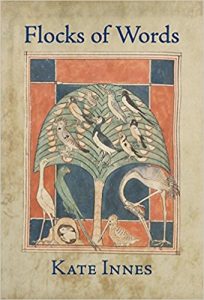 Flocks of Words, Kate Innes’s debut poetry collection, draws deeply on her love of the medieval, the mythical and the imaginative, which she overlays with a profound connection with nature and the Shropshire hills in particular. Her music is the music of distant stars and of creation, sometimes almost Miltonian in its wonder and terror. Her Earth is “a blue-blazoned orb hanging on the neck of night” (“Creation Myth”) and she writes,
Flocks of Words, Kate Innes’s debut poetry collection, draws deeply on her love of the medieval, the mythical and the imaginative, which she overlays with a profound connection with nature and the Shropshire hills in particular. Her music is the music of distant stars and of creation, sometimes almost Miltonian in its wonder and terror. Her Earth is “a blue-blazoned orb hanging on the neck of night” (“Creation Myth”) and she writes,
Before time was measured and marked,
in the great black between the stars,
beings lived, one of each kind.
Divided into five sequences, the collection moves back and forth through time, from pre-history to the present day, through vast land- and space-scapes, often with troubling scenes of biblical horror amidst images of the Creation.But the clear poetic stream running through all Innes’s poems (yes, she is obsessed with water) is a seemingly boundless imagination and immersion in the ancient world, often also closely bound up with images of both water and the universe.
The titular poem takes its imagery from the world of migrating birds to consider the living, organic, self-renewing nature of words; it imagines the freedom of not naming objects, “like the unseen stars at the edge of the universe”, “like Eden before Adam spoke.” She envisages word-birds returning, refreshed and new to enhance language. In “Walking the Hills” she turns to Darwinism to contemplate the evolutionary nature of earthly things;
We walk and return,
becoming dust
making stone.
Her imagery is often startling, panoramic, spine-tinglingly thrilling.
Elsewhere she focuses in on the minute, “the gyroscope of butterflies, / waterboatmen and the rifle sight/of the heron” (“Where it May Lead”) or on the discomfiture of a boy fishing and his inability to accept the distress of the caught fish. (“Fishing”).
Above all, Innes’s poetic focus is on the oneness of man with his environment, an impression of infinite continuity. She returns to a time when there were no noisy, polluting cars, “Before the drone of the road” . She paints a picture so vivid that the reader is tempted to linger, reading and re-reading:
In the time when the slice of oars and poles
slit the shining water down to twisted roots
and the river vein healed itself with the eddies,
with swimming sky.
(“Winter River”)
In “The Morning Path” Innes refers to the earth as a “familiar body” and, in “Late Light”, the sun belongs to the whole world, shining not only on her but on “all the Russian steppes”. Again, the collection invites the reader to look beyond the immediate environment, while also delves into the mysteries of the natural world. “Snowfall” focuses on the miracle of snowflakes, “… unseen/laws of our constrained belief, /fragile pieces of divine space.” Innes’s integral connection to the earth and to the universe is profoundly spiritual and overt: “I am part of the universe” (“Constellation”). Its magic and mysteries are as important to her as those matters offered by the real world.
If Innes’s work is widely informed by other artists, painters and wordsmiths – Christina Rossetti, van der Weyden, Velazquez, primitive cave painters in France and the stained-glass artist Margaret Agnes Rope – it is her broad and yet intense observation of nature which, for this reader, makes this collection very special. In “Spring”, lambs are described as “just bones/covered in a crochet of silky wool.” And in “Sleeping Dogs”, she allows the creatures to sleep – “Let them dream/, the wolf inside”. The gory nature of childbirth, too, comes into the great pattern of Innes’s poetic thought in a collection which will tempt the reader to return again and again to her observations in this lovely work. I look forward to her next collection.
Susan Haigh
The Errant Hours 1: Martyrs and Motherhood
This post was originally commissioned by the University of Surrey for their Blog -
Women's Literary Culture and the Medieval Canon
An International Network Funded by the Leverhulme Trust
Image from The Taymouth Hours
BL Yates Thompson 13, f.68v
I am quite convinced that if you scratched most writers of medieval fiction, under the surface you would find a childhood spent reading stories about the middle ages: Robin Hood, Arthurian Myths, Fairy Tales. Perhaps you would also find a longstanding love of medieval imagery and symbolism, the pictographic shorthand for saints’ lives and biblical tales.
As a child, I devoured such stories, and I loved decoding medieval artworks. It was so satisfying to know that if the female saint was holding a tower, she was St Barbara, if a wheel or a sword then St Katherine and, if there was a gridiron, poor St Laurence. I felt like I’d learned a secret language. When I decided to study Archaeology at University, I expected it would have a bit more mystery and symbolism in it – a bit more romance and a bit less mud. Ah well. I had reckoned without the British weather.
My later career in museums allowed me to indulge those narrative interests, as each object has innumerable layers of meanings. But when I came to write my first novel, The Errant Hours, the influence of my early love of archaeology was still strong. Archaeology, in the main, looks at the discarded and unwanted remains of daily life, the broken things most people do not consider important.
In The Errant Hours, I wanted to uncover what life was like for the people who did not make it into the history books – to explore the daily lives of people who lived in the distant past, and to understand how their circumstances affected their fears, hopes and beliefs.
And certainly the large numbers of nails, bones and potshards I found on archaeological sites helped me do that, and to flesh out the characters’ habits and habitats. But it would not have been a very satisfying book without another ingredient.
People of the middle ages lived not just in a physical environment but in a spiritual and social one, and one of the most lasting and powerful elements of these medieval ways of thinking are the religious and secular stories that were commonly known and shared.
You may be familiar with the way Christian ideology at the time tended to characterize women as virgin/saint, mother/wife or whore/temptress. There are lots of influential medieval stories about saints and whores, and not nearly as many about wives and mothers. The first part of The Errant Hours explores the interesting relationship between a holy virgin and mothers in the legend of Saint Margaret of Antioch. The second half of the book explores the wife/whore relationship through the legend of The Lady of the Well/The Knight with the Lion, which I hope to blog about later in the year.
Most female saints were either martyrs or nuns, but the virgin martyrs seem to have been most popular. Looking at the passions of these saints in compilations such as Voragine’s ‘The Golden Legend’, I was struck by the similar outcome for young women who refused to have sex with powerful men: generally torture followed by death.
St Margaret of Antioch being tortured
BL Royal 2 B VII f. 308v (public domain image)
In some cases a miraculous return to life is achieved (eg. St Winefride) but then the woman goes on to become a nun, not to a ‘normal’ family life.
However in the case of St Margaret of Antioch, there is a nod to marriage and motherhood in her story, through a quite unexpected agency. And this interested me because, although some medieval women did become nuns, most women were not wealthy enough. The vast majority of ordinary women married and became mothers, or died trying.
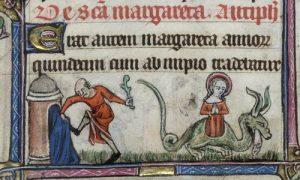
St Margaret in prison and emerging from a dragon, who is still chewing on her dress. BL Yates Thompson 'The Taymouth Hours' MS13 f 086v early 14th century
According to the legend of her martyrdom, Margaret of Antioch (known as Marina in the Eastern Church) was a virgin convert to Christianity in the early 4th Century AD. Her father was said to be a priest of Jupiter, who disowned her after her conversion. She spent some time as a shepherdess, (a nod to her humility and sacrificial innocence) and then was abducted by the Roman Governor, Olymbrius, who wished to ‘marry’ her. When she refused, he had her tortured in numerous gruesome ways.
While all this was going on, she was also attacked by the devil in the form of a dragon (even Voragine reckoned this part of the legend was apocryphal, but that didn’t stop the dragon from becoming Margaret’s attribute). The dragon swallowed her, but when she made the sign of the cross its belly burst open and she came out ‘unharmed and without any pain.’ Voragine then describes how she was beheaded in front of the Governor – and before the final blow she made several appeals to God, including that those who prayed to her and read the story of her passion would be safe in childbirth and bring forth healthy infants.
And so, in accordance with medieval logic, because of these promises and because St Margaret had come out of the dragon’s belly unharmed, she became the patron saint of childbirth.
As I was researching medieval childbirth, I came across a manuscript that not only evidenced this belief, but also provided moving and tangible proof of the spiritual practice of medieval women. British Library MS Egerton 877 – The Passio of St Margaret, 14th century. Once I had read the translation of the text and the fascinating explanation, I knew straight away: this was the touchstone of my story.
https://www.bl.uk/catalogues/illuminatedmanuscripts/TourKnownB.asp
This special manuscript is an Italian copy of a book that would have been very common in England, but which did not survive the reformation: a description of the horrific torture of a virgin that was designed to be a birthing aid – to be read out to a woman in labour. The story is a standard version of the life of St Margaret – but the final pages are extraordinary.
They consist of a series of prayers that would have been read to the woman in labour, including this entreaty to the unborn child:
“Come forth. If you are male or female, living or dead, come forth for Christ summons you, in the name of the Father, and the Son, and the Holy Spirit, amen.” (translated by Prof. John Lowden, Courtauld Institute)
But it is the final illustration of the birth chamber itself that gave me the eerie feeling that I was in the presence of the past.
The Birthing Chamber - BL Egerton 877 f. 12 (public domain image)
The text says: “The Father is alpha and omega, the Son is life and the Spirit is medicine. Thanks be to God”.
In this image we see the mother who has just given birth lying in the bed, and the midwife holding the swaddled infant. On the right, I believe that the figure under the canopy is Saint Margaret. Holy people are often given this architectural device. But the paint on this side of the page is so smeared and distorted through repeated kissing, it is hard to make out the full figure. As Professor Lowden says in his description:
“How many times was this page devotedly kissed by women in fervent hope that their childbirth might leave them ‘unharmed and without any pain’? And if the worst happened and their child was stillborn how many women prayed in anguish, with the help of this little book, that their labour might still end safely?”
Through this poignant trace of desperation, I could imagine myself into the lives of these women, even as I remembered the birth of my own son, after a long, stalled labour that would have killed us both in the thirteenth century. I started thinking about the consequences of the large number of deaths in childbirth, and particularly what would happen to a surviving baby whose mother had died. And so the plot began to take shape in front of me, like a detailed picture being drawn before my eyes.
The Errant Hours begins in that final illustration, with the difficult birth of the heroine of the story, Illesa (‘unharmed’ in medieval Latin) in 1266. The action continues when she is a young woman and her midwife mother has recently passed away leaving her a richly decorated book, a Passion of St Margaret, which, as a poor woman, she should never have possessed.
The Errant Hours is an adventure, following Illesa as she struggles to save her brother and herself in the face of poverty, violence and corruption. But it is also the story of a daughter who loses and finds a mother, the story of a sacred book believed to have the power of life and death, and the story of how a young woman negotiates the physical and spiritual dangers of Plantagenet Britain, and survives to come of age.
These stories intertwine, bind, resist and console each other, as all our stories do.
****
Kate Innes was born in London and raised in America, returning to the UK in the 1980’s to study Archaeology. She taught in Zimbabwe before completing an MA and working as a Museum Education Officer around the West Midlands. She now lives in Shropshire. Her first novel, The Errant Hours, has been added to the reading list for Medieval Women’s Fiction at Bangor University. Kate has been writing and performing poetry for many years. Her collection, Flocks of Words, was published in March 2017. Kate runs writing workshops and undertakes commissions and residencies.
@kateinnes2
Review of ‘Flocks of Words’ – The Book
I'm very grateful to Pat Edwards (website mashup arts ), organiser of Verbatim Poetry on the Welsh Border, for reading and reviewing my new collection - Flocks of Words. It's a strange but satisfying feeling following another poet's journey through one's own work; finding some ideas that are very familiar, and others - startlingly new!
Flocks of Words – Kate Innes – reviewed by Pat Edwards
Writers who attempt the risky game of trying to describe the process of writing, or their love of language, may do so at their peril. Not so Kate Innes, who in the carefully crafted metaphor of the title poem depicts the reappearance of words as a cyclical event. Referring to Eden and to “god's purpose”, we feel an echo of Luke's advice about ravens as we stand “watching the words return”. We need not be concerned as we can feel the writer wanting to collect and nurture words, keep them safe whilst they are in her care, knowing they will fly away when the season demands.
In the five sections of this collection, Innes takes us on what many might make into an epic journey. The themes are the very stuff of creation and the pattern of decay and renewal that shapes the physical and spiritual landscape both. However, Innes adopts a kinder, more human touch as she quietly feels her way through the elemental, exploring paths, forests, time, water, firmament, light. Occasionally, she stops for breath as in 'Breton House', where “the old English painter” captures a pastoral scene.
In 'Red Stag' Innes imagines herself in the body of an animal, hunted until she is hit, “a flood of blood in (her) belly”. In 'The Other Land' she speaks of all “the places in between”, the silences, cracks, “like teeth behind a kiss”. The poet clearly loves the English landscape, its myths and legends, but also finds inspiration in art, ranging from the primitive as in 'Reindeer Hunt' to the more classic such as in 'Virgin and Child' where the exhortation of Luke to remain “unconcerned by cold and hunger” is re-visited.
Parts iii and iv focus on water, the hunter and the prey, animals and evolution. Always death lurks, even in the fleece worn by the spring lamb, “that supple shroud”. In the final part, a sequence of poems inspired by the stained glass of Margaret Agnes Rope, Innes is never far from light, animals, water, the familiar themes of this collection.
In all, there is much to please and excite the reader, especially if you share her fascination with the existential and with how we make sense of our place in a changing natural world. I enjoyed the collection as it made me reconsider some of these ideas from a new perspective and exposed me to the poet's own unique and very beautiful mastery of language.
Ear worms and El Supremos
Sometimes I get an ear worm that seems particularly relevant to my life at that moment in time. I'm sure this happens to a lot of people. It's slightly less annoying than just having an insipid, meaningless song haunting your every waking minute. Sometimes it can even be quite comforting. For example, just after the 23rd June, 2016 the song going through my head was Thomas Dolby's 'Europa and the Pirate Twins' -
Europa, my old friend-
We'll be the Pirate Twins again
Europa
Oh my country.
Europa
I'll walk beside you in the rain
Europa
Ta republique
I was very sad. But I was being sad with Thomas Dolby.
More recently for me, it's been exclusively Steely Dan songs.
I know. I know. Ancient history. But having three children aged 11 - 15, I do have to listen to a great deal of contemporary music, so when I'm given a choice of listening, I turn to my old favourites. And Steely Dan was one of the best things about growing up in the seventies and early eighties in America. They were intelligent, they were cool, and they were so random before randomness was appropriated by people who were being intentionally stupid.
They were interested in little things, tiny details of our daily shabby life, as well as disappointment, death, drugs, sex and taxes. And of course there was the brilliance and originality of their arrangements - their mingling of jazz and rock.
Before Christmas, as I shopped, wrapped, broke up fights, cleaned, cooked, washed up, applied make up, looked for lost tags/tape/presents/socks and organised large scale mulled wine distribution, the phrase going through my head was from 'Black Cow' (Aja 1977).
I don't care anymore
Why you run around
Break away
Just when it
Seems so clear
That it's
Over now
Drink your big black cow
And get out of here
For reference a 'Black Cow', in this context, is a cocktail made of coke, cream and Khalua. Not to my taste, but any alcohol, even super sweet fantasy alcohol, is better than none when you are in the midst of the festive season and properly exhausted. And alcohol with a dose of attitude is even better.
I recovered from the holiday, and for the past two weeks I've had the glorious 'Show Biz Kids' in my head, with its catchy backing vocals:
You go to Lost Wages, Lost Wages, you go to Lost Wages.
This is not because I am chasing invoices. Although I am.
Lost Wages is a pun for Las Vegas, from a joke by Lenny Bruce.
I didn't know that before I googled it. It was always one of those lyrics that you can't quite work out. Box Pages, or something else deep and meaningless. I happily sang along for years.
The song goes on with this summary of a certain type of celebrity:
Show biz kids making movies
Of themselves you know they
Don't give a fuck about anybody else
So I have now realised why this song is going through my head at this particular time - as the 20th January 2017 approaches and it has become clear that no one is going to stop Trump becoming the actual, real, honest-to-God President of the United States.
Donald Trump - the celeb, show biz star, casino owner and tycoon epitomises the widespread belief that the appearance or the promise of goodness and success is so much more important than the actuality of it. The obsession with perfection in appearance (particularly for women) is part of this phenomenon, as is a type of reality tv performance combined with conspicuous consumption that is designed to make us admire what the celebrity has, rather than what they have done.
The aspirational part of this is a powerful force. It appeals to the risk taking side of us all. The person who wants to believe in something that is too good to be true. The person who doesn't want facts. The Gambler.
'Look' - says Trump, the arch fact-unraveller, 'it can all be so great. You can win. Win BIG, and I can make it happen.'
It is the same false promise made to everyone who enters a glittering casino in Las Vegas with its glamorous staff and plentiful drinks, and leaves without their wages.
I have no wish to spend many more words on Trump. He is over described already.
But it is so clear to me that he is only in this for himself. That in all he has done, his self aggrandisement and business ventures, his bullying, belittling behaviour, his outrageous lies and his willingness to use women against their will, he has sought pleasure, power and money at the expense of those who are weaker and lack influence.
He certainly doesn't seem to give a fuck about anybody else.
The fact that so many Americans thought this was an appropriate quality for the President of The United States is hard to take. But then when we look to history, it is littered with men like him who convinced people that through brutality they could get the change they wanted. That to make change you need a hard man, a strong man. That the people who suffer from the brutality will be people on the outside, not the inside. (Celts in the past - Mexicans or Muslims today.) And that they deserve to suffer because they are bad, nasty people.
But the truth will be different.
Inevitably, the facts will come.
And like fanatical bailiffs, they will extract profit for Trump, and the other 'El Supremos' of the world, from everyone.
'Show Biz Kids' from Countdown to Ecstasy 1972
CHORUS:
While the poor people sleepin'
With the shade on the light
While the poor people sleepin'
All the stars come out at night
After closing time
At the Guernsey Fair
I detect the El Supremo
From the room at the top of the stairs
Well I've been around the world
And I've been in the Washington Zoo
And in all my travels
As the facts unravel
I've found this to be true
CHORUS
They got the house on the corner
With the rug inside
They got the booze they need
All that money can buy
They got the shapely bods
They got the Steely Dan T-shirt
And for the coup-de-gras
They're outrageous
CHORUS
Show biz kids making movies
Of themselves you know they
Don't give a fuck about anybody else
CHORUS
Writer/s: DONALD JAY FAGEN, WALTER CARL BECKER
Publisher: Universal Music Publishing Group
Lyrics licensed and provided by LyricFind
Heavenly Lights – a writer’s response to stained glass
A few months ago, I happened to see an image online which showed a section of a window designed and created by Margaret Agnes Rope (1882-1953). Despite having lived in Shropshire for more than 20 years, I had never heard of Margaret Rope, who was born and worked in Shrewsbury, and is now acknowledged as the greatest artist ever to have been born in Shropshire. I was very taken with the beauty of the natural scene and the contrast of the sinister beasts creeping around it. I sensed a great imagination at work in these images and felt stirred to respond. Since then I have had the privilege to become the poet in residence at the Heavenly Lights exhibition of Margaret Rope's work at the Shrewsbury Museum & Art Gallery museum website
Margaret Rope was one of the finest stained glass artists of the Arts & Crafts Movement, although she has never been famous. Her work is characterised by jewel-like colour, fine painting, an ambitious vision and incredible detail informed by meticulous research. The Margaret Agnes Rope Project is attempting to make her work better known, and has made available on their website (https://margaretrope.wordpress.com ) a great deal of fascinating information about her life and achievements, which I need not replicate.
Suffice it to say that Margaret Rope (known as Marga to her family) had an independent and sometimes rebellious spirit from an early age. Stories of her exploits on motorbikes, sleeping out on the roof in all seasons and being falsely arrested as a spy give an impression of an indomitable person of great individuality. In her late teens, after the death of her father, Margaret, along with many other members of her family, converted to Catholicism. At the time Catholicism was tolerated in British Society, but much frowned upon. As a result of this conversion, Margaret, her sisters and her mother were written out of her grandfather's will. There was not much money for the large family, and Margaret knew she would have to earn her keep.
It was unusual then for women to become stained glass artists, and it still is. It is a very demanding art form, dominated for centuries by men, perhaps because of its association with monasteries. But Margaret found an art school in Birmingham which accepted women, and from there, she ploughed her own furrow in the second generation of the Arts & Crafts Movement.
Margaret Rope's art was inextricably entwined with her faith. She made windows for all kinds of places of worship, but her masterpieces were, in the main, Catholic topics created for Catholic churches, such as Shrewsbury Cathedral. In 1923 at the height of her powers, she chose to enter an enclosed order of nuns, the Carmelites, and lived within the walls of the convent until her death. She was able to continue her production of stained glass, but not to see the windows (which were installed in countries around the world) in their finished form, except the few which were made for the convent chapel.
A fascinating woman. A great artist. But I have become especially intrigued by the stories behind the art. I've had a life-long interest in mythology, folklore, religious stories, and also with the representation of animals and the natural world. Margaret's work is packed with symbolic details, similar to the highly decorated margins of medieval illuminated manuscripts. The space in her windows is teeming with life; many species of birds, flowers and trees painted with remarkable accuracy. And like me, she seems to have been fond of dogs (I found seven representations of dogs in the exhibition).
The intertwining of images of great natural beauty with scenes of death, cruelty and sin gives the windows authenticity. They never claim that faith is easy, nor that it will lead to a life of pleasure and goodness. Margaret did not shy away from the difficult topics, including the painful deaths of the catholic martyrs and other saints. In her windows, we see darkened streets, bleakness, the devastation of broken relationships, as well as the prosaic details of life, the importance of daily rituals, candles and procession, to bring light.
So in a nutshell, I have found ample scope for my poems and some fascinating characters in this exhibition including: Judith and Holofernes (woman who seduced and decapitated an invading general), Goblin Market (the decline and near death of a young girl after yielding to supernatural temptation) and St Francis of Assisi (a rich man who leaves everything for a life of extreme poverty and is able to speak to animals).
The other topic which comes back time and time again in Margaret's work is that of war. She lived through both World Wars and ironically received many commissions due to the death toll of the First World War in particular. Stained glass windows were the memorial of choice for wealthy families whose sons had been killed. I wonder how Margaret felt about this uncomfortable causal relationship between death and suffering, and her own livelihood.
I was particularly touched by an early Christmas card she drew from The Priory, the family home in Shrewsbury, which is exhibited in one of the glass cabinets.
In it we see a central figure writing or drawing, with the family dog at her knee. Around them, the members of the family work in various ways to help the war effort. It is hard to put myself in the place of those who struggled through one devastating war, only to be confronted with another a generation later. The devastation to society, as well as the individual psyche, is something I shrink from but also feel the need to understand. Especially now, as the rhetoric of far-right groups seems to intensify every week.
In this poem, one of the nine currently displayed in the exhibition, I try to think myself into that Christmas time, one hundred years ago during the war. It has brought home to me how lucky we are to have lived during a time of peace. And how fragile that peace is.
Tidings of War
What can comfort in time of war?
Only the way a pencil line
stays fixed - can trace
a gasping stretcher
or a searchlight’s arc -
ordering the dark.
And for those who sit waiting
on cold chairs,
keeping a window lit
to welcome others home?
Only the weight of a soft muzzle
on the lap, alive and warm.
Only the escape of service,
the brain-haze of heat,
a hat’s fragile shade,
un-blistered feat,
for those who work in rust-red
fly-ridden fields.
And for those who lift and carry,
who hold the cold hand and cry
at the way the world
has launched itself,
like a thin-spun ball of gas,
and set a match
and hurtled down to its own destruction,
while some men just watch
and warm their hands?
There seems none.
But we must not hide,
we must not snuff out the light,
so here - I send you hope for peace
this Christmas-tide.
Kate Innes
The exhibition is at Shrewsbury Museum & Art Gallery until the 15th January 2017.
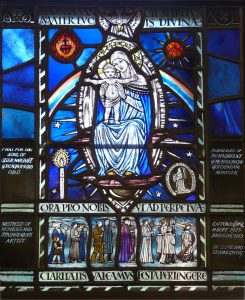
Sister Margaret's Memorial
History and its Mysteries
A while ago I was asked to introduce Lindsey Davis, who was speaking at the inaugural Shrewsbury Literature Festival on Saturday the 26th November, 2016. As part of introducing this grande dame of historical crime, I was invited to say a few words about my own writing, and some of the points of cross-over. What follows is the talk I gave, which I hope properly expressed my admiration for Lindsey and what she has achieved.
I am delighted to be here today at the inaugural Shrewsbury Festival of Literature to introduce our guest - Lindsey Davis.
It is a privilege to share the stage with you Lindsey, and I am very much looking forward to your talk. In the meantime, I have a few minutes to speak about this interesting type of literature, Historical Fiction, why we write it and why we love to read it.
I’m interested in how we become intrigued by history. The past is gone after all, and on we go into an ever disappearing future. So what draws us back to the things that are long gone?
Everyone has their own experience, but in my case, and I am sure for many others, the introduction to history comes through stories set in the past, in other words Historical Fiction. I suspect that good historical children’s books have done more for our understanding of the past than all our school history lessons.
I grew up in the USA on the East coast. There the earliest buildings are 250 years old, and most are less than 50. The history taught was almost exclusively American. I relied on literature, through our excellent local library, and on Museums to teach me about the world and its past. And early on I came to be fascinated by Greek and Roman mythology.
This laid the groundwork for my interest – but to become a proper history addict there is nothing like being able to touch the real thing.
One of my most formative moments, was in the early 80’s as a RaRa-skirted 14 year old on a school trip to Greece and Italy. We stayed in Rome and visited the Forum. The sheer scale of the remains astonished me. Carved capitals, the outlines of shops, walkways, temples. The imprints of both the daily grind and the metaphysical. What I felt on that day stayed with me and never let go. By the end of high school I had made up my mind. I would go to England and read Archaeology at University, and have that thrill all the time, the sense of touching the past.
But as we know, not everything is quite as you assume when you are a young adult. Archaeology, it turned out, was much more about resistivity meters, microscopic sections of pottery and Carbon dating than it was about my more romantic notions of reaching into history.
After my Archaeology degree, I turned to teaching and then to Museum studies, becoming a Museum Education Officer
Perhaps you are thinking – that is all very well. Kate and Lindsey share a love of the past. Particularly the classical past. But what about the CRIME?
Well, I have also done my time in crime. About 22 years ago, between careers, I had a job in a bookshop on Manhatten’s Upper East Side which sold exclusively Crime and Mystery books. It was called ‘Foul Play’. In those days, most people who were looking for information about businesses would look in the phone book. With a name like ‘Foul Play’, we had quite a few phone calls from people assuming our services were of quite a different nature to book selling.
Of course, it does not necessarily follow that avid readers and booksellers become writers. Personally, I knew from a very early age that making up stories, creating new worlds for the reader, was a superpower I wanted to possess. And to time-travel as well, by writing about past civilizations – that would be the ultimate trip.
The first stop in my time travelling journey was the Medieval period. My debut novel The Errant Hours is set in the 13th century AD, in the Marches and North Wales just after the end of the Second Welsh War.
It is a love letter to this part of the world, with its stunning historic and prehistoric landscape. It is an adventure that gallops through most of the medieval monuments in South Shropshire at a heart-stopping pace. It is also an exploration of the power of books, stories and legends.
And at the heart of it, there is a young woman in possession of an extraordinary book, a manuscript describing the Martyrdom of St Margaret of Antioch. In other words, the manuscript is a work of Historical Fiction.
The saints who were worshipped in the Middle Ages attained their positions mainly thanks to Roman persecutions of the upstart Christian religion. The accounts of these crackdowns were embellished by later writers into pious and bloodthirsty tales, to encourage veneration of the saints. So when I came to write ‘The Errant Hours’, I had a perfect excuse to include a section that goes back to the Empire.
St Margaret of Antioch was a virgin martyr, and her story is typical of the genre. Daughter of a pagan priest, she converts to Christianity against his will, and is disowned. Then, as she wanders amidst the goats on the pastoral hillside, she is spotted and desired by the Roman governor. He insists upon ‘marrying’ her. He also insists that she renounce her faith. She refuses. So he has her tortured in various horrible ways before she is beheaded in front of a large crowd.
How this VIRGIN ended up becoming the medieval patron saint of Childbirth is a fascinating story, and one I explore in my book. But in writing about her, what I really wanted to know was - without all the later religious spin - what would it really have been like to be a young woman of the Roman Empire, who was imprisoned and tortured for her faith?

St Margaret thrown into prison, and later emerging from a dragon. The Taymouth Hours, BL Yates Thompson MS 13, early 14th century
Perhaps I should have looked at some other saint, who had a really friendly story with a happy ending.
But, in spite of the gore, I was thrilled to be imaginatively back in the midst of Roman culture, their buildings, their admirable sense of order, their productivity and their pragmatism. Writing is the ultimate Virtual Reality head-set, in my opinion. I cannot explain the deep-seated desire I have to be in that state of the imagined past, but perhaps it has something to do with never knowing what will happen next in real life, and needing a place of escape. I suspect that most readers feel similarly, in wanting to experience the best and the worst of life, but in a safe environment.
Lindsey Davis has been treating people like us to immaculately researched, accurate and entertaining stories set in Ancient Rome for three decades. She has peopled the ruins with restaurant owners, politicians, merchants, lovers, whores, and most significantly informers. Marcus Didius Falco and his daughter Flavia Alba are fully rounded people, not characters. Through them we experience the rest of the Roman Empire, explained with, at times, frustrated affection.
And what a close relationship there is between the activities of Falco and Flavia - and our own efforts as writers of historical fiction.
For don’t we have to examine the remaining evidence, the records of the lives, the scenes of the action. We must hold in our mind the pieces of this puzzle and fit together the fragments of ‘truth’. Then the imagination creates the story and the motive – and it provides an explanation of the mystery: What was it like to experience the push and pull of a particular economy, culture and belief system? And what punishments will come?
Lindsey’s observations don’t only enlighten us about the Roman Empire, she also makes us see and celebrate our own culture and our modern world in the light of history.
Whilst researching for this event, I was delighted to find on Lindsey’s website a section entitled ‘Rants’.
We all can appreciate the satisfaction of a good rant, I’m sure.
Upon being told by the large and rather insular American market that her books must be americanised, she only capitulated on spelling. She would not change her particularly British use of words and tone to suit the American ear. My heart was gladdened when I read her words in defense of this position:
“The Falco books are English in origin. Their ‘voice’ is not only English, but narrowly defined on occasions right down to the bolshie British Midlands, in the mid Twentieth Century, with influences from BBC Radio and middle class girls’ education. This voice is crucial. If it means readers have to stretch themselves, then gung-ho and jolly good show.”
And surely that is one of the things we want from a good book, to learn something, to work things out and feel satisfied when we have come to a new understanding. Besides, the joy of a Lindsey Davis novel is in its facility with language, idiom and a sharp turn of phrase. Any number of quotes would prove this point. But let me take one from her recent Flavia Alba novel, ‘Enemies at Home’:
“We now had a paranoid emperor, who at just short of forty was still young enough to inflict many years of dread upon us. Our empire’s borders regularly came under attack from barbarians, so there was constant unsettling military talk. The city was also full of bitter satirists, outlawed philosophers and pouting poets who had failed to win prizes. In this climate, all kinds of madness flourished.”
What a prescient passage. If any country needs to learn from and listen to the outside world, it is America and its leader at this present time. And I’m sure those of us who frequent Facebook will recognize what a frenzied atmosphere can erupt from a glut of satirists, philosophers and poets.
It is my great pleasure to welcome, therefore, one of our own. A multiple prize-winning writer born in Birmingham, who has delighted millions of readers with her humour, her insight, her lightness of touch in the face of gruesome crime - and her productivity.
After 20 Falco and four Flavia Alba books, as well as wonderful stand-alone novels, we all hope there will be more and more and more.
Please welcome Lindsey Davis.
Imagined Worlds – Coleridge and Kublai Khan
As a young person, I was very fortunate to have an excellent education. However, I fear it was a bit lacking in regards to Samuel Taylor Coleridge. I went to an American school with a very good English Department which helped us read Philip Roth, John Donne, James Joyce, Tolstoy and Dostoyevsky, as well as Shakespeare and Wordsworth. But, the only thing I remember about Samuel Taylor Coleridge from my school days was the first lines of his shorter poem 'Kubla Khan'.
I certainly didn't know that Xanadu (Shangdu) was a location in China where the Mongolian grandson of Genghis Khan (Kublai Khan) held his summer court.
Nor had I heard the story surrounding the poem, how, during an illness in 1797, Coleridge had been reading an account of travels in the East ( Purchas his Pilgrimes ) based on the writing of Marco Polo, and, having taken opium for his pain, had a dream in which a poem wrote itself in complete and beautiful unity about the Khan and his palace. Upon waking up, he was interrupted by a man from Porlock who took a whole hour of his time, by which point most of the inspiration had dissipated like mist, and all he could save was a couple of stanzas. This was the kernel of the poem 'Kubla Khan', which was published, years later, in 1816.
The Friends of Coleridge, http://www.friendsofcoleridge.com are an organisation set up to promote and celebrate the work of this prodigiously talented and troubled writer, who lived in Nether Stowey in Somerset for part of his writing career and wrote many of his most famous poems there. This year they created an ambitious project to celebrate the bicentenary of the publication of 'Kubla Khan', involving west country artists, schools work, walks, film, a commemorative booklet and a poetry competition on the theme Imagined Worlds, all sponsored by the Arts Council.
This is where my writing story and Samuel Taylor Coleridge intersect. Many years ago, during a Welsh holiday, I went for a walk and whilst looking at a cloudswept evening sky and the birds scattered across it, the phrase 'flocks of words' came into my mind. I knew it was a poem, and that the concept of words disappearing for periods of time, like birds, was worth exploring. But I didn't realise how long I would be writing it for! As far as I can tell, my first draft is from 2009. By the time I heard about the Imagined Worlds Poetry Competition, it had been through countless changes. And in August 2016, just before another Welsh holiday, I felt it was finally ready to fly the nest. I sent it off to the competition minutes before we locked up the house for two weeks and set off for the coast.
It was a tremendous surprise and a great pleasure to be told in October that 'Flocks of Words' had won the competition, and that the poem would be on display alongside the works of art, curated by Jon England and Somerset Art Works, at a special presentation evening in the CICCIC in Taunton, where all aspects of the Kubla Khan Imagined Worlds Project would be celebrated.
It made me consider how my poem and the work of Coleridge might be linked, and what I could learn from this new connection. In adulthood, thanks to a moving story by Michael Morpurgo, Alone on a Wide Wide Sea, which I've listened to several times with my children, I have come to know quite a lot of the 'Rime of the Ancient Mariner'. Immediately upon hearing the good news about the competition, the albatross came to mind.
Coleridge, evidently, was a man who knew a great deal about both words and birds. The wandering albatross, with its benign and interested expression, stands for so much in the story: identity, humanity, divinity, hope. Birds go between different worlds. For millennia they have been considered messengers, linking us to another world beyond our view. They can bear the weight of considerable symbolism, and I enjoy writing about them very much.
And I have learned subsequently that Samuel Taylor Coleridge was a great walker, thinking nothing of a twenty-two mile round trip to Taunton to attend church. He spent much of his time on foot, and therefore the series of walks and the Coleridge Way in Somerset celebrating him are very appropriate. I cannot claim to be a great walker, but I'm a regular one. And I cannot imagine being a writer without my daily walks. Walking provides the rhythm within which thoughts can sing. Inevitably, if I am stuck with a plot or a poem, a walk of an hour or more sorts it out. Body and mind inextricably linked. Make one move, and the other joins in.
It has been a surprise to discover that, like me, Coleridge worked briefly in Shropshire. In December 1797 (the same year he wrote 'Kubla Khan'), he arrived as locum to the Shrewsbury local minister, Dr Rowe, in the Unitarian Church on the High Street - a building I walk past almost daily. He is said to have read the Rime of the Ancient Mariner at a literary evening in Mardol, Shrewsbury. Coleridge was considering a career in the church at this point in order to alleviate his financial problems, but when Josiah Wedgwood offered him an annuity to keep writing, he abandoned his ministry plans.
So, with all these common points of reference, I am now determined to get to know Samuel Taylor Coleridge better. He seems a man with whom I could happily spend many hours, and I am honoured that my poem will now be in some way associated with his vision of a world both celestial and worldly, beautiful and terrible, vivid and fading from view.
The 'Kubla Khan' exhibition, and with it my poem, are on the move. They travel to Bath and then on to Nether Stowey (looked after by the National Trust). You may not be able to see the artworks or go on the walks, but here is my poem. It has come home to roost.
Flocks of Words
Imagine a country where words were like birds
and flew away surreptitiously,
migrating for whole seasons, leaving one bereft
of noun, verb and preposition.
It begins in autumn when scientific names fly free.
Binomial pairs depart, fast and wild,
and taxonomic flocks coalesce
into Greek, their deltas pointing far away.
Soon all common things become obscure
like the unseen stars at the edge of space,
and in the thrumming fields and naked gardens,
it is like Eden before Adam spoke.
Imagine visiting that land in the spring
and watching the words return,
grown fat with the food of foreign meanings,
their syllables strange to the tongue.
I could enjoy a season unnamed and free,
surrendered to instinct or god’s purpose.
But then I’d watch for its approach on tired wings,
and feel the weight of it alighting on my breast,
and put it on, like fresh plumage or a newly laundered dress.
Kate Innes
A Varied Diet: Publishing the Unexpected
Recently I was given the opportunity to contribute to a Novel Writing Course run by the immensely talented Lisa Blower (author of newly published novel Sitting Ducks). I was invited to talk about writing The Errant Hours, and especially about my decision to self publish. There were many very insightful questions from the writers in the audience, all at the beginning of their career, attempting to understand an industry which is in a state of constant flux.
Revisiting my journey to publication has made me think about it with more objectivity and less emotion. It was sobering to see how far I'd travelled from the naïve writer who began Chapter One in 2010. A change similar to that experienced by the heroine in my story, but effected mainly through psychological challenge rather than physical violence.
When I began my novel, I believed that if I could write a good enough story it would inevitably be published. The trick I needed to learn was how to write convincing, well-rounded characters and follow them into their lives. This took a long time. Getting the descriptions to sing rather than scream seemed to require banging my head repeatedly with my fist. Structuring the story was another hurdle. There was a good deal of trial and error, diagrams, long walks and shouting involved in getting all the elements of the plot to fit together.
Finally, I needed each sentence to flow into the next. It was important to have the right words both rhythmically and meaningfully. Five years of pulling words out of my brain, looking at them, discarding them or hammering them into different sentences, and at last I felt the book was finished. What I did not realise was that I'd left out the most important ingredient as far as the modern publishing industry was concerned.
I wrote a story about a period that interested me: the Plantagenet era, at the time of Edward I and his series of battles with the Welsh. I wanted to write about the effect of endemic violence on the lives of ordinary people. There have not been enough stories about that topic, in my opinion.
I live in Shropshire, which is now seen as a sleepy rural backwater. At the end of the 13th century, Shropshire was a centre of military and political power. It was the family seat of the second most powerful man in the kingdom, Robert Burnell, the Chancellor and Bishop of Bath and Wells, a priest who had many illegitimate children. Robert Burnell was a very interesting contradictory character in my view, and worth exploring.
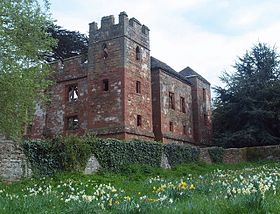
Acton Burnell Castle - home of Chancellor Robert Burnell who was given permission by Edward I to crenellate his manor in AD1284
But not interesting enough, I was told. The whole of the Medieval era, according to the expert I consulted at the Author's Advisory Service, was not popular, and therefore it was totally the wrong period to write about. I should have chosen the Tudors. At a pinch the Romans, Victorians, or Georgians would have been okay. But Medieval was a no-hoper.
There was nothing I could do about that. Ever since I was a young girl, I have been a lover of the medieval aesthetic - its buildings and culture. I was sure that the medieval period was worth writing about. I did some research on-line. Thousands of people seemed to be interested in things medieval. There were tens of thousands of Twitter followers and members of medieval Facebook groups. medievalists.net
After all, the medieval period brought us the iconic castles that represent Britain for tourists. It had brought forth the legend of King Arthur and his (sometimes) virtuous knights. And during the 13th century, the first Bill of Rights for individuals had become law.
I did become hopeful in 2015. I thought the 800th anniversary of signing of The Magna Carta might change the prejudice against publishing medieval. But in July of that year, I was still getting polite letters from agents praising my writing but telling me the story was not for them.
Then I received a particular letter, from Anne Williams at the Kate Hordern Agency, which spelled out the problem very clearly. There was nothing wrong with my writing, but "without a more obvious historical hook which a publisher could hang their sales pitch on (eg a particular, relatively well known historical character or conundrum) they would struggle to see a convincing way in which to publish." And she added "If you should decide to write something more along the lines I've outlined I'd be happy to consider it."
I am very grateful to Anne Williams for taking the time to explain this so clearly. It is rare for agents to reveal their reasons for rejection.
It was clear to me from that moment on that if I wanted this story to be read, I would have to publish it myself. I did need help along the way and would advise anyone thinking of independent publishing to hire a graphic designer and a copy editor at the very least. But the main work of publishing was mine.
Now The Errant Hours is available widely, as an ebook and paperback. In theory, anyone around the world with access to a computer can order a copy. I am receiving feedback every day from readers who have enjoyed the journey into medieval Shropshire, and who are recommending it to friends. Over 700 copies have been sold, and I have lost track of the number of people who have said that they didn't think they liked historical fiction, but they loved The Errant Hours. Also, very importantly, I have maintained the integrity of the story and all my rights to it. I am still a long way from breaking even on my costs, but things are off to a good start.
This post is not really about self publishing, however. It is about the current assumption in the publishing industry that we should give people only what they already think they want.
A parent of a young child is encouraged to make sure the child eats a variety of foods, sweet, bitter, salty and sour - different textures and tastes so that their palates develop, and in the future they eat a broad range of dishes and enjoy good health.
Using this analogy, the publishing industry seems to be behaving like a parent who only gives their child chicken nuggets, chips or pizza, because that is all they seem to want to eat.
Before we taste variety, we don't understand all the different and delicious possibilities of taste. Before we meet people from different countries, we don't understand how things can be seen from multiple perspectives. Before we read about a new place or time, we do not know whether it will interest us or not.
There is always the possibility that it could fire us up and change our lives. But if we are only ever provided with the topics and periods that are popular, we will never have the chance to explore the intrigues and treasures of these under-represented periods, the hidden inglorious and surprising moments of history.
So my question is this: Shouldn't the reading public be treated as rounded people, open to new experiences and hungry to discover new places, people and times?
If not, we writers are operating under a de facto censor, and readers are being deprived of variety in favour of an easy sell.
The novice writers I met in the course last week do want to write books that sell. They would ideally like to make a living by writing. This has become less and less possible. The income of the average writer is at an all-time low. If those new writers don't take the advice to write something 'commercial', it will be very difficult for them to make any money at all.
Self publishing is not the solution for everyone. You have to have a considerable amount of money up-front to invest in your book. And it is an extremely demanding work model, in which the writer must morph into the PR, distribution, logistics, accounts, marketing or press department at any moment.
If a writer must write according to the dictates of the industry in order to make a living, many will not be able to choose to follow their writer's heart. And it is the literary health of this country that will suffer.
The Hours – two writing paths intersect
I wonder if you have read 'The Morville Hours' - a beautiful and precious book, as intricate and finely tended as the garden it is based on. Set in Morville near Bridgnorth in Shropshire, it is just a few, very picturesque, miles from my house. The author, Katherine Swift, once worked in Oxford as a rare-book librarian before turning to gardening and writing full time.
Our books are very different. Hers is non-fiction, based on the development of an intense relationship with the garden at the Dower House and the framing history of its landscape. Mine is fiction, based on a life of fantasy and obsessive medieval research.
Katherine Swift has written a meditative, fugue-like book, in which each separate garden room is like a beautifully enameled bead on a necklace. I have written an adventure that goes at full tilt, headlong through a hostile landscape and all sorts of danger.
But thinking about it a bit more carefully, I believe there are a few common links between her book and mine, in addition to the more superficial ones, such as the word 'Hours' in the title and the general geographical location.
There is the intense interest in the way that dividing up a day into the offices of the church (the Hours - such as Prime, Matins, Vespers, Compline etc) can help one to think of time as something that needs tending through proper, careful attention.
In ‘The Errant Hours’ the protagonist, Illesa, must leave her home, and with it, the ordered life of farming and prayer. Her hours have become wayward and time runs together faster and faster once the boundaries are gone, in an exhilarating and terrifying race. In ‘The Morville Hours’, there is freedom and intensity inside the structure of the day as the life of the garden becomes ever more intertwined with the writer's life, and history with the present day.
And, speaking as one admirer of ancient manuscripts to another, there is the understanding that reading a unique illustrate book, written long ago, painstakingly, by hand, can feel like picking a variety of fruit and blooms in a sunny, walled garden.
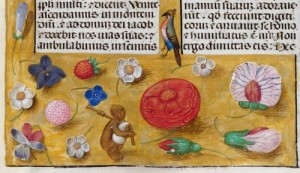
Isabella Breviary, Southern Netherlands (Bruges), late 1480s British Library, Additional 18851, f. 13
But I digress. The main point of this post is to tell you that I am going to be at the Morville Festival on Bank Holiday Monday, the 2nd May, right next to the garden about which 'The Morville Hours' was written.
Anna Dreda of Wenlock Books has invited me to sign copies of my book in the tea tent (yay!) which I consider a delicious privilege. There is a Fete and a fancy dress competition, as well as the stunning garden and flower festival in the church. And there is cake! Lots of cake!
If you come, you will not be disappointed.
The Story Behind the Story
The Story behind the Story
(This was originally written as a guest blog for 'The Story behind the Story' by Dr Gulara Vincent)
I recently became an independent author, publishing The Errant Hours, an historical novel set in the 13th century.
The process has been rather similar to childbirth, but with a lot more coffee and alcohol.
In fact, it was giving birth that profoundly changed me, allowed me to write more freely and engendered this medieval tale. At least that is part of the story.
The other part is about adoption. For most people reading The Errant Hours, it is a fast-paced medieval adventure. But for me it is an exploration of what it is like to long for a child, and to bring up a child who is not yours by birth. And it is about the passion and danger of bringing a baby out of yourself.
My husband and I tried for children for a long time before deciding to adopt. We felt very positive about adoption, generally and specifically, because my father was adopted as a baby.
And we went into adoption with our eyes open, as a GP and a teacher. We felt we knew roughly what to expect from children. After all the necessary hoops were jumped through, we were very lucky to be able to adopt a beautiful four-month-old baby girl.
How different it is when you are a parent; how much better and how much worse!
The powerful love when you are caring for them and watching them grow, and the despair when things do not go the way you expect or demand.
Undaunted, we adopted again, a boy this time, also four months old. We had excitement and exhaustion in equal measure. It was a great gift to us, being parents of these two wonderful children.
Then when James was one year old, I noticed I was feeling quite odd.
Not myself.
Weak and a bit sick.
And so, there it was. I was pregnant. After the disbelief and joy, I was scared.
How would I cope with three children under four years old?
Was I too old for it to go well?
How would my body and my mind manage labour?
And my fears on the last point were not unfounded. The labour did not go well. It dragged on and on for days, making me sick. I had to be put on a drip. I had to be induced. At one point it seemed the doctors were about to rush me to theatre.
In the end John was born, whole and well, and I was left feeling that somehow victory had been snatched from the jaws of defeat, and life from the mouth of death. It was clear to me that if I had lived at another time in history, I would have died in labour, and my baby boy with me.
The incredible feeling of having brought a life into the world, and for it to have been so great a challenge, so close a brush with death, set me on the path to write about a time when childbirth was the most dangerous of all activities. I was interested in it physically (what herbs were used to ease labour?) and spiritually (how did people prepare for childbirth, and how did they cope with the death of their babies?).
I had studied archaeology at university, so I was used to digging into the habits, beliefs and messy remains of past cultures.
I was researching the practices of midwives in the birthing chamber on-line, when I came across it. British Library MS Egerton 877 – The Passio of St Margaret, 14th century. I read the translation of the text, I read the fascinating explanation of the manuscript and I knew straight away: this was the touchstone of my story, this special manuscript. https://www.bl.uk/catalogues/illuminatedmanuscripts/TourKnownB.asp
In medieval times saints were appealed to for all manner of problems. Usually they were given job descriptions based on the stories of their martyrdom or miracles. Many people know of St Jude, the patron saint of lost causes, and St Christopher the patron saint of travellers. Well, St Margaret of Antioch was the patron saint of childbirth.
According to the legend of her martyrdom, Margaret was a virgin saint in the early 4th Century AD, who had converted to Christianity against the wishes of her father, a pagan priest. She was abducted by the Roman Governor, who wished to ‘marry’ her. She refused. He had her tortured in numerous gruesome ways. While this was going on, she was attacked by the devil in the form of a dragon. The dragon swallowed her, but when she made the sign of the cross it burst open and she came out ‘unharmed and without any pain.’
It was this line in the manuscript that immediately struck me ‘illesa sine dolore’. The word ‘illesa’ is medieval Latin meaning ‘unharmed’, and it became the name of the heroine of my book.
The legend says that, before she was beheaded, St Margaret promised safe childbirth to those who read the story of her Passion. And so books telling of the horrible torture of a virgin became a birthing aid. The number of such books penned in the Middle Ages was innumerable. We can get some sense of how popular St Margaret was by the number of churches and other buildings dedicated to her. But this small well-worn Passio is a rare survivor of the change in birthing practice from the Renaissance onwards.
The manuscript’s illustrations, particularly the one on the final page, depicting the saint standing with hands raised, are also of great interest.
British Library MS Egerton 877 folio 12
This is my description from The Errant Hours:
"Whenever Illesa opened the book of the saint, the feeling was always the same. She became a hawk lifted high in the air, and with the hawk’s eye she could see the sparrow in the hedge and the fearful beasts at the edge of the world in an instant, and all the detail of their beauty and horror.
But the last picture in the book disturbed Illesa. The image of the saint was smudged, and the features of her face were like a reflection seen in the water at the bottom of a well. Ursula said that many women had kissed the saint, smearing the paint in their devotion, for as she had come out of the dragon’s belly unharmed, so Saint Margaret had the power to bring forth healthy infants and spare the lives of their mothers."
I found it very poignant: medieval women, in their time of great pain and danger, kissed this painted image and sent up prayers to St Margaret to save them and their babies. I began to imagine these women, especially those giving birth for the first time.
And the plot began to take shape, the story of the mother and the daughter, and the story of a sacred book, believed to have the power of life and death.
Of course I realised that a great number of women did die in labour, and the babies who were born into these situations would be raised by others. More of the plot began to take shape in front of me, like a beautiful picture being drawn before my eyes.
So this was where the story began, and it is also where it ends. The book of St Margaret is passed on to another mother; to read, to bless and to make intercession for those in pain and grave danger.
The Passio of St Margaret ends with this entreaty to the unborn child.
“Come forth. If you are male or female, living or dead, come forth for Christ summons you, in the name of the Father, and the Son, and the Holy Spirit, amen.”
(translated by Prof. John Lowden)
Now that my book has been brought into the world, I hope its readers will see something of the courage and strength of medieval women, and all those women living now, around the world, giving birth with little or no medical help. And the powerful hope and desire they have for their children to come forth whole and unharmed.
Kate Innes
Walking the Hills
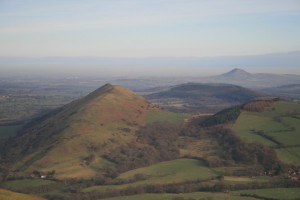 |
| Shropshire Hills - The Lawley from Caer Caradoc with The Wrekin beyond |
Earlier this year I received a commission to write a poem for a hydro-geologist, for his birthday.
I was very glad to be asked, but this in turn made me ask myself:
'What kind of poem would a hydro-geologist enjoy?'
'What really excites them?'
and finally 'What do I know about hydro-geology?'
The only question I could answer was the last one, and the answer was 'Hardly anything.' But fortunately Shropshire has more hydro-geologists than you can shake a stick at. There was advice at hand and resources aplenty.
My first port of call was the Geology Gallery at the newly refurbished Shrewsbury Museum and Art Gallery link. I love this museum. It was opened in 2014, and is thoughtfully presented and designed. The Geology Gallery not only has beautiful specimens of rocks and fossils, but also commissioned art and a wonderful video showing the voyage of Shropshire.
It turns out that the reason there are so many hydro-geologists in Shropshire is that it has an extremely diverse range of geological strata both in age and rock type.
Add to that, in the words of the Shropshire Geological Society,
'its frontier position: at former plate boundaries, just below the major erosion surface of the crust prior to opening of the Atlantic Ocean, and the meeting point of several glaciers during the last Ice Age. Thus the variety of geological settings is unmatched within the British Isles or, within such a relatively small area, probably anywhere else in the world.' http://www.shropshiregeology.org.uk
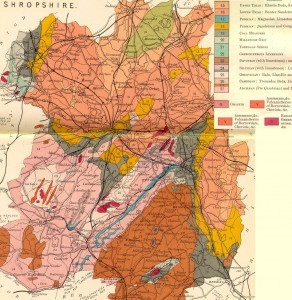 |
| Stanford's Geological Atlas (Woodward, 1914) |
Shropshire has, in its 500 million year history, travelled from a location south of the Tropic of Capricorn in the Southern Hemisphere 12,000km to where it is today. In that time it has been volcanic, forested, tropical, desert, shallow seas, and now the temperate landscape of hill and field, a patchwork embroidered with hedge and forest.
Armed with this new information, I walked up one of my favourite hills: The Lawley. Looking south from the Lawley, one sees Caer Caradoc thrusting through an ancient fault line running in Pre-Cambrian rock northwards to the Wrekin. Around the Lawley spreads the intricate complexity of the countryside, rising and falling, growing and dying. Under my feet was living rock, full of the signs and scars of its journey. And growing from it, the most delicate and hardy of flowers, heather, and the lichens, airy and brittle versions of the languid seaweeds fossilised nearby.
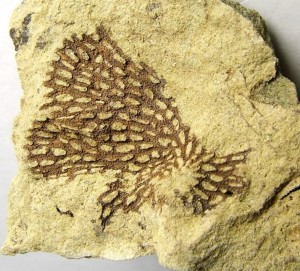 |
| Ordovician Bryozoan from the Caradoc Series www.discussfossils.com |
Afterwards, it did not take long to write the poem, and then, having heeded the advice of poets in my writing group, I delivered Walking the Hills to the person for whom it was written.
But a little bit like Shropshire, Walking the Hills had further to travel. I submitted it to the WriteScience Poetry Competition poetry of science and it was selected as one of the six finalists. I was sent to the Minton Library in Stoke-on-Trent to read it and celebrate the symbiosis of art and science at their Fun Palace festival. ceramic city
Stoke-on-Trent, aka The Potteries,
was just the right place for the poem to arrive,
a place built on special rock and soil which is made and remade,
heated and cooled, used and discarded.
The Year of the Gibbon: Apes and Monkeys – Part One
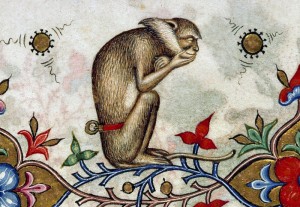 |
| The Thinker Monkey from the Breviary of Mary of Savoy, c. 1430 Lombardy, Chambery Bibliotheque Municipal, MS 4 fol. 319r Notice his belt, to which a chain would have been attached. |
I had an encounter in South Africa which made a deep impression on me.
It was with a gibbon.
And it was in a zoo.
One is not meant to go to Africa to meet southern asiatic apes in captivity. But that is what happened and it has made me think carefully about the parts of human society that we project on to apes and monkeys, and the schizophrenic attitude we have towards them.
The children wanted to go to 'Monkey Town' link , and, to be honest, I did too. Because I enjoy seeing the beauty and variety of animals across the world, I do put aside my concerns and scruples about caged animals and occasionally visit zoos. It is something that causes me pleasure and embarrassment in almost equal measure. And if it is a place I have not visited before, I approach with trepidation.
In this case my fears were, for the most part, unfounded. The enclosures were large and well designed, and it was the walkway for the humans that was caged, allowing the monkeys plenty of space to display their incredible acrobatic abilities. However, what made the visit extraordinary was the desire of many monkeys to interact with the human visitors. One spider monkey played push-me pull-you with my son and a twig. The marmosets raced us to and fro.
But when we came to the gibbon, things were quite different. There were several gibbons in a large enclosure, and when I came to the fence a few moments behind the rest of my family, an older female gibbon was already holding my daughter's hand.
She held each of our hands in turn. This went on for some time. Then she turned around and hung, with her back to us, against the wire fence. She wanted her back scratched. All this time she did not make a sound; just gazed at us, calm and self possessed, with her intense melancholy eyes. We stayed with her until the zoo closed.
The gibbon is one of the 'lesser' apes, due to its smaller size than gorilla, chimp and orang-utan. It is tailless, but still is the fastest and most agile tree-dwelling mammal, due to the extraordinary length of its arms and the clever ball and socket joint in its wrist. Gibbons have been observed to mate for life.
Monkey Town is home to many apes and monkeys who have been rescued from neglect or inappropriate environments. There was one who was a recovering alcoholic, as his previous owner had given him beer to drink every day. Although I do not know this female gibbon's history, it seems likely that she was used to human contact and company, and although there were plenty of other gibbons to interact with and she had obviously born several babies, she sought out human interaction.
In the Medieval period in Europe, apes and monkeys were popular pets for the rich. They became an exotic status symbol, and it is quite common to see examples of fettered monkeys in the margins of medieval manuscripts. But the ape and the monkey were also symbolic of degradation, sin and the devil in the Medieval world view. They were 'man unbounded by constraint', and as such, a symbol of those who give into their animal cravings, most commonly lust and greed. And they were a very useful satirical tool for the artist. See Apes in Medieval Art
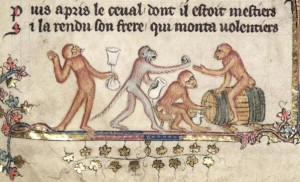 |
| Monkeys drinking - from Roman d'Alexandre - Tournai early 14th century |
By contrast, in China where the gibbon is a native, they featured prominently in ancient Taoist poetry, were known as the 'gentlemen of the forests' and considered noble. Gibbons were believed to be able to live for hundreds of years and to transform themselves into humans. Their incredibly powerful voices, calling across the Yangtze gorges, came to represent the sadness and melancholy of travellers far from their homes. But this respectful view did not stop people from destroying the thing they admired in an attempt to own its beautiful qualities.
"The popularity of captive gibbons being kept as pets appears to go as far back as written history . . . The traditional method to catch a live gibbon always consisted in looking for a female carrying an infant, then killing the mother with an arrow or a poisoned dart from a blow-pipe and taking the infant still clinging to her when she has fallen dead onto the ground. Humans often became deeply attached to their pet gibbons. When a king of the Chou dynasty (i.e. Chuang-wang, 613-591 B.C.) had lost his gibbon, he had an entire forest laid waste in order to find him."
See this informative blog from Thomas Geissmann : gibbons in chinese art and poetry
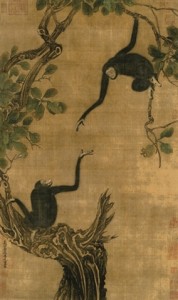 |
| Two Gibbons in an Oak Tree by Yi Yuanji Song dynasty |
Neither of these extreme views are particularly helpful for the apes and monkeys who have to negotiate the human wasteland or human jungle. Both are merely a shadow, a reflection of us - that we project onto these intelligent animals. We are fascinated by the degree to which they are like us, and not like us - as we are with our own children. Turning wild primates into pets seems to be part of a desire to make them even more like us.
Will that help them in this human dominated age? Will it harm them?
Having met a gibbon, who was obviously affected by past human contact, I see the contradictions in my own feelings. It was an extraordinarily moving experience to be trusted by a gibbon. It made me hungry for more interaction. But that gibbon had been forced into our humanised environment. Forced to live in a house and a zoo, and if nothing is done, that may be the only environment in which gibbons do survive.
The IUCN Species Survival Commission has declared that 2015 is the Year of the Gibbon. Almost all of the gibbon species are endangered due to habitat loss (99% of habitat in China already gone), hunting and illegal trade. Mother gibbons are hunted and killed, just as they were thousands of years ago, in order to acquire the babies for the pet market. Often, both mother and baby die.
In Britain, one is allowed to own primates as pets. One can buy a baby monkey on the internet, with little or no regulation. In 2014, the government decided not to ban the owning of monkeys as pets, claiming this law would be 'draconian'. They decided that no legislation should be approved until more was known about the situation. Here is part of the response from conservation organisations.
Philip Mansbridge from Care for the Wild said: "The report says that there are a lot of unknowns: we don't know how many primates are kept as pets, we don't know how well they are kept, we don't know if existing legislation is working. But deep down, we do know one thing: that monkeys, chimpanzees and other primates ultimately are not objects for us to own. And that information alone should be enough to settle this debate once and for all."
The Guardian 10 6 14
Let us work towards a world where primates do not need to be rescued,
because they are swinging through their forests,
calling across the deep ravines
to those of their own kind -
grooming and holding each other -
clinging to their own mothers
and living out their own lives.
Kate Innes
The Mighty Elephant
 |
| Elephant drinking from the Zambezi River |
I have recently returned from a return visit to Zimbabwe and Southern Africa. It was a journey that will provide grist for my mind's mill for years to come. But, at this very early stage of processing, I find it is the elephant and its behaviour which must be explored first.
It is interesting that, until the medieval period, elephant were endemic to the whole of the African continent. The extinction in Northern Africa (around a thousand years ago) occurred as a direct result of the ivory trade, to provide ecclesiastics and aristocrats with beautiful, prestigious artworks. Ivory has been sought after and worked for millennia. It is very hard, lasts indefinitely, doesn't splinter and can be carved into the most intricate of forms. Medieval craftsmen felt its pale purity was particularly suited to representing the Virgin Mary.
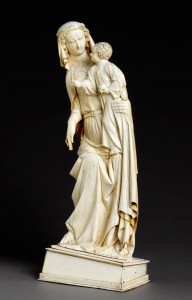 |
| Virgin and Child, carved in elephant ivory 1320-30 in Paris, Victoria and Albert Museum (note the contrapposto of the virgin, which is demanded by the curve of the elephant tusk) |
In medieval symbolism, elephants were almost as common as dragons, and similarly credible. They belonged to the semi-mythic world of the Bestiaries; books of quasi-religious natural history. The Bestiaries were didactic and precise about both the elephant's habits and their meaning for the enquiring Christian mind. Even then the elephant's concern for its family, the younger members in particular, was noted, as well as their prodigious intellect and memory. They were said to be symbolic of Christ himself. Their main enemy was the dragon, which, when they were in water to give birth, would bite them and attempt to drag them down to the depths. The dragon is always symbolic of the devil, and the elephant fought with it as Christ did with Satan.
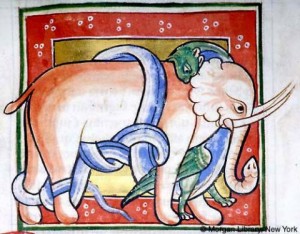 |
|
The eternal battle between the Dragon and the Elephant
from the Worksop Bestiary, MS M. 81
12th century, Pierpont Morgan Library
|
Although it is a digression, I cannot help but draw a parallel with the story of The Elephant's Child by Rudyard Kipling. In this cautionary myth, the usual outcomes are turned on their head as, instead of being killed by his 'insatiable curtiosity', the hero of the tale actually gains the elephant's most useful and distinctive feature: his trunk. The crocodile (a dragon by any standard), pulled his little nose into 'a really truly trunk, such as all elephant's have today' during its attempt to drag the young elephant into 'the great grey-green greasy Limpopo river', to eat him. With his advantageous trunk, the Elephant's child was then able to mete out revenge on his 'dear family' who had subjected him to repressive spanking all his life for being too curious. A story to gladden the hearts of liberal educators everywhere.
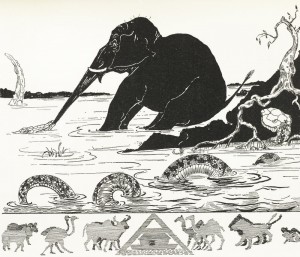 |
| An illustration from The Elephant's Child, Rudyard Kipling (note also the bi-coloured python rock snake which we had the privilege to hold during our trip) |
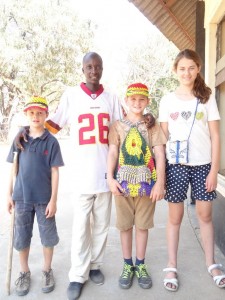 |
| Colin and models with his crochet goods: caps, rucksack, and tablet case |
Candle flame, lamp light
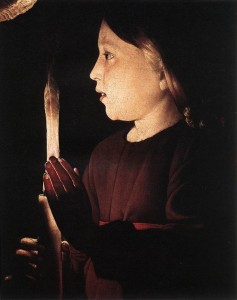 |
| Detail of Christ in the Carpenter's Shop - Georges de La Tour-1645 -The Louvre, Paris |
Looking at Georges de La Tour's work reminds me that, for the vast majority of the history of human civilisation, nightfall has been followed by the lighting of lamps and candles, and by the contemplation of fire. De La Tour was a master of chiaroscuro, the dramatic play of deep shadow and bright light, the flame either bare or hidden behind a hand. But he doesn't allow the light merely to set the stage. In his paintings, the flame is a central character and the focus of our gaze. Many of his paintings are ostensibly religious in subject matter. Some include children carrying lamps and candles, their skin an unblemished mirror for the warm light. I think de La Tour enjoyed this partnership of flame and youth, and the tenderness of forms softened by wavering, living energy.
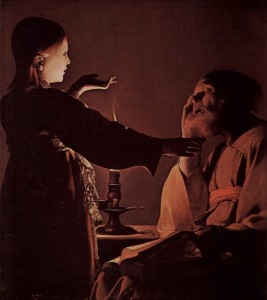 |
| The dream of St Joseph, c. 1628-1645 Musee de Beaux-Arts de Nantes |
In a few days I will return to Africa, accompanied by my three children and the man I met there. All sorts of things swirl around in my mind when I think about the two years I spent working as a teacher in rural Zimbabwe. Far too many to express here. And since the day that my husband and I decided to return for a long holiday, to show our children the place we fell in love with (and the place we fell in love), I have been beset with longing and anxiety in almost equal measure.
One cannot step twice in the same river, as we have all been told. I know that it will have changed. Zimbabwe has been through some bad times since I left in 1994. Equally, the advent of the mobile phone has transformed so much of interaction throughout Africa, giving more power to the producers traders and growers, and of course, there has been a massive increase of globalisation through the internet.
However, the great Zambezi River will still be there, and we will see it flow and thunder. We will, I hope, hear women singing and clapping in church, accompanied by the syncopated drumming that makes everyone dance. And we do very much want to see elephant, giraffe and the beautiful Lilac Breasted Roller once again.
But one of the things I am most looking forward to is the fire light and candle light. Night falls quickly in Southern Africa, usually at about 6pm. Then the sounds change, the stars are revealed and the matches are struck. At the mission where I lived in the Zambezi Valley, the generator would go off at 9pm and, from then on, we did everything by candlelight. Of course most Africans do not live with a generator, and so candles and lamps are the norm.
The only times we experience this in Britain is during a power cut, or when we take ourselves off and camp in the wilds. Then we are forced back to the contemplation of the most charismatic of elements. Our children like it best when the fire is lit and, to quote my youngest, "I can poke it with a stick."
Children and flame - both are fascinating, quick and volatile. I am looking forward to many nights in their company as we camp our way from South Africa to Zimbabwe, under the distant fires of the stars.
 |
| The New Born Christ, c. 1645-1648 Musee de Beaux-Arts de Rennes |
To finish, here is an old poem, written when the children were very small, during a power cut.
Windows: looking in, looking out
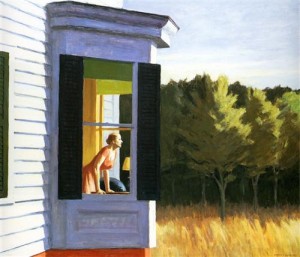 |
| Cape Cod Morning - 1950 by Edward Hopper |
Edward Hopper (1882-1967) was raised in New York State, not very far from where I grew up, although, I hasten to add, much before my time. An introvert, almost a recluse, he chose to paint houses, women and urban scenes typical of the east coast of America: stark white clapboard, contrasting shutters, glaring sun; and at night: fluorescence, neon and shadow. He spent his latter summers in Cape Cod. Most of his female figures were modelled on his wife.
There is something urgent and sad about his work. His paintings are full of isolation and silence. Very often windows are a key feature of the composition and the viewer observes figures through them (as in Nighthawks, for example). The windows seem to emphasise the sense of separation and self-containment in his work.
I can't say I enjoy it, but it moves me, perhaps particularly because I am reminded of my childhood amongst the trees and lakes of Connecticut, the blazing sun of the seashores, the unremittingly direct and obvious human constructions. Black and white, sun and shadow, nature and man. The only subtlety is in the nuanced emotion evident in the gesture, posture and expression of the figures.
When Andrew Motion presented this painting, Cape Cod Morning, in a workshop at the Wenlock Poetry Festival and suggested we use it as a starting point for a poem, I had mixed feelings.
I knew it would not be an easy poem.
It immediately conjured up feelings of separation; a relationship broken or unequal. The intensity of the gaze looking out of the window seemed to contain both resentment and longing. I wrote several drafts along these lines. So it was with some amusement that I came across this quote about the artist's own thoughts:
The tendency to read thematic or narrative content into Hopper's paintings, that Hopper had not intended, extended even to his wife. When Jo Hopper commented on the figure in Cape Cod Morning "It's a woman looking out to see if the weather's good enough to hang out her wash," Hopper retorted, "Did I say that? You're making it Norman Rockwell. From my point of view she's just looking out the window."
quote source
I cannot understand that. There is nothing in the figure of the woman that speaks of 'just looking'. And certainly she is not thinking of her washing. Whatever she is searching for from her vantage point in front of the large glass is something that has cut her heart, caused her to wake in tears in the middle of the night. Perhaps time and time again.
So the artist creates, and the creation goes forth to be appropriated and changed, made different in everyone's eyes. The painting (poem, sculpture, book etc.) itself becomes a window. Perhaps the creator offers her view on the world from this window, and the viewer/reader sees it. But more often the viewer gazes at the window, expecting to see what the artist saw, and instead sees the reflection of herself.
My own poem changed too, until it was no longer really about the painting.
Here is what might be the final version:
I am like a woman
You glide into the water
and dive
sometimes you turn your
on the headland.
Kate Innes
The Cat before the Altar
A tabby cat enjoys watching a patch of sunlight in the peaceful, cordoned-off area in front of the main altar of Wells Cathedral
During a fascinating research trip to Hailes Abbey and Wells Cathedral, I was struck by the number and variety of animals I found in these well-preserved sacred contexts. Our age, on the whole, seems to disapprove of animals in church, as if somehow their animal nature made them inappropriate in the humanly constructed holy space.
This was not the case in Medieval art. Animals appear in abundance, taking on roles as faithful companion, indicator of nobility and symbol of just about every virtue and sin. They are painted on the walls, sculpted in the ceiling bosses and climb around the column capitals. They wind around the font and patter along the floor tiles. They look down from the highest heights, and mischievously up from below as part of misericords, little seats which supported the bottoms of monks and priests in church.
A boss from the ceiling of Hailes Abbey Chapter House, showing either Jesus fighting the Devil in the form of a lion, or Samson and the Lion
In this way, the churches constructed and decorated by medieval people mirrored the natural world outside, rather than making a 'better' separate space for worship. The church was a place for people to learn what the natural world meant in the heavenly plan, and every last animal had its role to play and its lessons to teach.
A short-eared owl from Hailes Parish Church (13th century), an adorable animal supposed to represent sin and darkness
The Medieval Bestiaries (about which I have written more here: robin redbreast post) were very eager to tie up the behaviour of animals, whether real or imaginary, with their spiritual significance. This is not an area of theology pursued in modern times, but perhaps the celebration of and identification with the natural world should be more encouraged. The many animals in danger of extinction could certainly stand as symbols of human indifference and greed in a modern iconography.
A hybrid elephant from Hailes Church
During the Reformation a rift occurred between image and word, between the natural world with all its instructive behaviour and the spirituality of the intellect. Natural representations were covered or destroyed by those who wished to emphasise the primacy of the revelation of God through the word, the Bible, rather than through creation. This is obviously a vast oversimplification of the profound and violent change that the western church underwent at that time, but it is one of the obvious effects for people exploring the development of sacred buildings.
In my opinion, it is only when nature and humankind, image and word, intellectual and physical are joined together that we come anywhere near being able to express the Divine.
The tabby settles down for a nap in front of the altar of Wells Cathedral
A fragment from Jubilate Agno by Christopher Smart (1722-1771)
For I will consider my Cat Jeoffry.
For he is the servant of the Living God, duly and daily serving him.
For at the first glance of the glory of God in the East he worships in his way.
For is this done by wreathing his body seven times round with elegant quickness.
For then he leaps up to catch the musk, which is the blessing of God upon his prayer.
For he rolls upon prank to work it in.
For having done duty and received blessing he begins to consider himself.
For this he performs in ten degrees.
For first he looks upon his forepaws to see if they are clean.
For secondly he kicks up behind to clear away there.
For thirdly he works it upon stretch with the forepaws extended.
For fourthly he sharpens his paws by wood.
For fifthly he washes himself.
For sixthly he rolls upon wash.
For seventhly he fleas himself, that he may not be interrupted upon the beat.
For eighthly he rubs himself against a post.
For ninthly he looks up for his instructions.
For tenthly he goes in quest of food.
For having considered God and himself he will consider his neighbour.
The Painter and the Poet
Ancient Trees
 |
| Old Knobby - from Ali Martin Arboriculture - www.alisonk.co.uk |
On familiar paths through the woods recently I have been knocked out of my walking trance by the glaring absence of trees. On four of my favourite routes, widespread 'harvesting' operations are taking place, involving indiscriminate destruction of the deciduous trees around the harvesting area, widening the tracks to allow large diggers and cutters, crushing bluebells and other wild flowers and, of course, cutting down hundreds of trees in their prime.
I have plenty of wooden furniture in my house, as many people do. I use paper. I have a log burner. I do understand that many species of trees are grown for timber, and I do understand that farmers and foresters must keep their tracks clear to allow access. My head understands all these things, but the rest of me is unable to accept the results of this economic activity.
Behind my feelings about logging is my belief that these remarkable plants, which are able to create air, beauty and fertile habitats, should be cut down, when necessary, carefully and without collateral damage to other well-established native trees. Areas of woodland beauty, such as glades and wooded tracks, should be considered as more than just the sum of their parts. Specimens of particular importance and age should be protected and not treated as though they were weeds.
Some species, such as sweet chestnut, oak and yew, are capable of living for over a thousand years. Ancient trees in the UK tend to survive in the old medieval forests and parks, or because they were once boundary markers or local meeting places. The Woodland Trust record and protect these trees; these links explain their work:
ancient tree hunt link
what are ancient trees and where to find them
Besides their compelling presence in space and time, old trees are also able to help people understand their own history. Tree ring width can be used as a measuring tool to reckon the age of timbers found in all sorts of intriguing objects including: ships/houses/panel paintings/dug out canoes. These ancient survivors of variable climate and human requirements contain a record of our shared experience.
The relationship between tree rings and the characteristics of a particular year's weather was first commented upon by Leonardo da Vinci (unsurprisingly) and the many applications of this link were developed gradually over the centuries. The science of dendrochronology is now commonly used to date wooden objects found in archaeological excavations and to calibrate radio-carbon dating. Thanks to the careful work of scientists around the world, there are now several sequences of tree ring data stretching back thousands of years. These sequences show us variations in climate within countries and across continents. They help us to understand the context of human material culture and written narratives. They show us what pressures were at play in the distant past.
Our impact on the environment, our experiences, are also being recorded by the trees growing all around us. But if we keep cutting down trees in their prime, how will these sequences develop? If we do not value and care for the ancient ones, how will we know where we fit into wider history? If trees eventually across the world are principally grown only for timber, will any ancient trees remain stretching back to this time, for our descendants to decode in a thousand years?
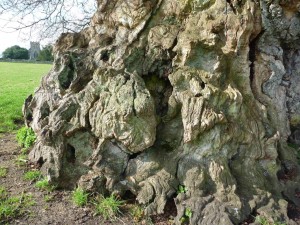 |
| The Silton Oak, Dorset from bespoke green oak website |
The White Hart
 |
| The White Hart from the Wilton Diptych, created for Richard II, 1395-99 The National Gallery, London (this painting shows a tamed white hart; only a King could achieve it) |
Said to be a symbol of the pursuit of spiritual knowledge, 'The White Hart' also happens to be the fifth most common pub name in Britain.
Spirits of a different kind being pursued, one concludes.
The white hart was a common element in Celtic mythology, a messenger from the other world and the starter of quests. It was said to be the creature that could never be caught. In most stories it caused a profound change in the physical and spiritual state of the viewer/pursuer.
Visions of a white stag compelled King David I of Scotland to create a shrine to the cross, the holy rood, now a seat of power in Edinburgh, and a white hart crowned with a cross showed St Eustace that his fate would be to suffer as Christ had done. Richard II chose the white hart as his heraldic emblem, inherited from his mother Joan, the 'Fair Maid of Kent'. It's purity and power lent him some much needed credibility in his numerous struggles with his rebellious and resentful subjects.
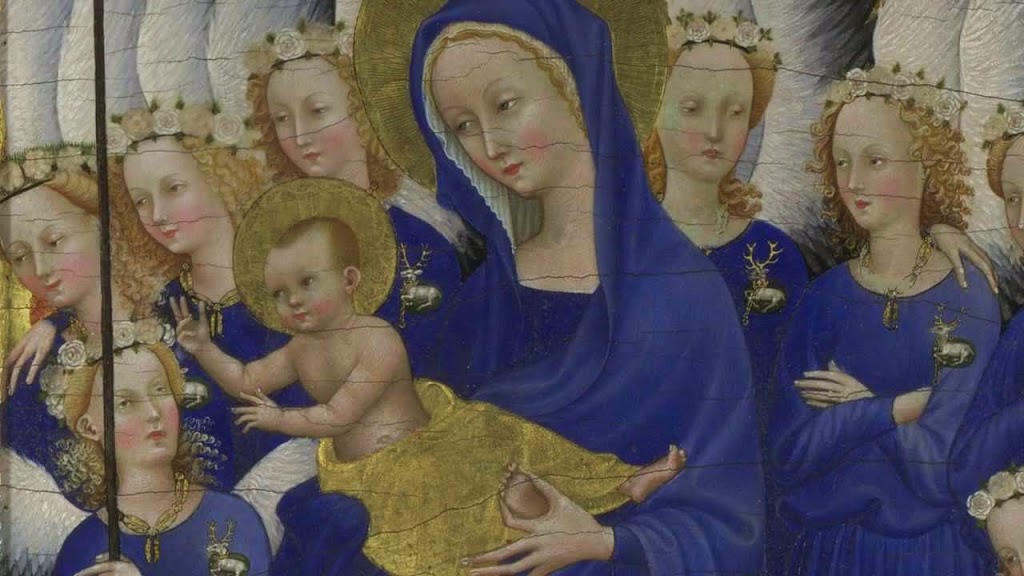 |
| The White Hart emblem on the angels surrounding the Virgin and Child Wilton Diptych, 1395-99 (the angel on the right looks really bored by the whole thing) |
It is an interesting thing, this equation of a white colouration with supernatural powers and purity. The phenomenon is actually the absence of pigment, or Albinism; an hereditary condition common to animals of all kinds, as well as plants, generally producing white hair and pink eyes in mammals, occurring, on average, once in every 10,000 mammal births.
Whereas humans find albino animals special and accord them a particular positive significance, the same cannot be said of their treatment of human albinos. Instead, these people are often disadvantaged socially as well as suffering from the effects of a lack of melanin. They may be ostracised, scapegoated, or in the worst cases attacked and killed. (It is reported that there have been many recent attacks on albinos in Tanzania and Burundi. Some are being kidnapped and killed because their body parts are thought to make a particularly potent muti - medicine http://en.wikipedia.org/wiki/Persecution_of_people_with_albinism). Difference, in these cases, causes superstition and fear, and becomes an excuse for depravity.
In the myths and stories of the white hart, it is portrayed most definitely as the other, the powerful thing, hunted for the potency and status that it will confer on the hunter. But nowadays, I believe it also contains another meaning. The Britain of wide-ranging forests full of wild game and animals, the setting for quests, fairy-maidens and honourable thieves, is gone. A construct always, promoted by playwrights and poets, but one which expressed something about what was fundamental to our culture and society. We cannot pretend that it exists anymore, because, for the vast majority of the population, the fabric of the land has been transformed by tarmac, brick and large scale agriculture. Wildness is accessed almost exclusively through the tv screen.
But sometimes wildness, graceful, breathtaking, otherworldly wildness, breaks through our managed landscapes, either in our imaginations or in real time. The white hart, a rare and beautiful sight, shocks us into a state of wonder. A few years ago, when I saw one on my morning walk trotting up the ploughed hill through morning mist, it was a sight not reducible to genetic fact or weather conditions.
I think it is this aspect of the 'White Hart' which TS Eliot invokes when he wrote 'Landscapes III -Usk' http://www.nbu.bg/webs/amb/british/5/eliot/landscap.htm although it is possible that he referred to the public house, The White Hart in Llangybi, Usk, behind which was an old, whitewashed holy well http://www.theguardian.com/uk/2003/aug/06/highereducation.books.
Usk is near Caerleon, the fabled centre of King Arthur's court in Welsh myth. Eliot's poem is ambiguous and grammatically difficult, taking the quoted line from a play by George Peele The Old Wife's Tale (late 16th century) http://www.poetrynook.com/poem/gently-dip-not-too-deep.
This poem of mine is a Gloss or Glosa on Usk. The Glosa is an old Spanish form which sets its task to explain the lines of an older, more famous poem. Explanation is not achievable, but my poem could perhaps be called a variation on Eliot's theme - a third generation poem in pursuit of the white hart.
Kate Innes
The Place of the Skull
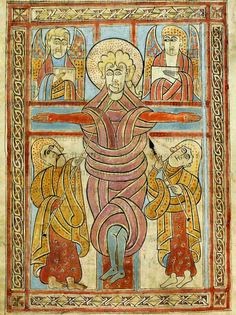 |
| Crucifixion from the St Gall Gospels Irish, 8th century, Abbey of St Gall Cathedral Library, MS 51 (One soldier offers Jesus vinegar on a sponge, the other makes ready to pierce his side with a spear.) |
According to the New Testament sources, Jesus was crucified on Golgotha, 'the place of the skull'. Scholars are in disagreement as to whether it accrued this name because it was a place of execution, or if the rock formation had the appearance of a skull from a certain vantage point and was therefore deemed an appropriate place for killing. In any event, the exact location is disputed. I myself favour the theory that the location is a hill just outside the walls of Jerusalem, within sight of the temple, which looks like a human cranium. http://en.wikipedia.org/wiki/Calvary
Unconstrained by facts or lack thereof, Christian artists have approached this place of death with both convention and originality. Early Crucifixion images were characterised by the serene acceptance of Jesus on the cross. This was the representation of Jesus as God. He was pictured against a heavenly backdrop, gold or sometimes blue, and on earth indicated by highly stylised rocks. Almost always, just below the cross with its polite drops of blood, there is a skull, and some other human bones.
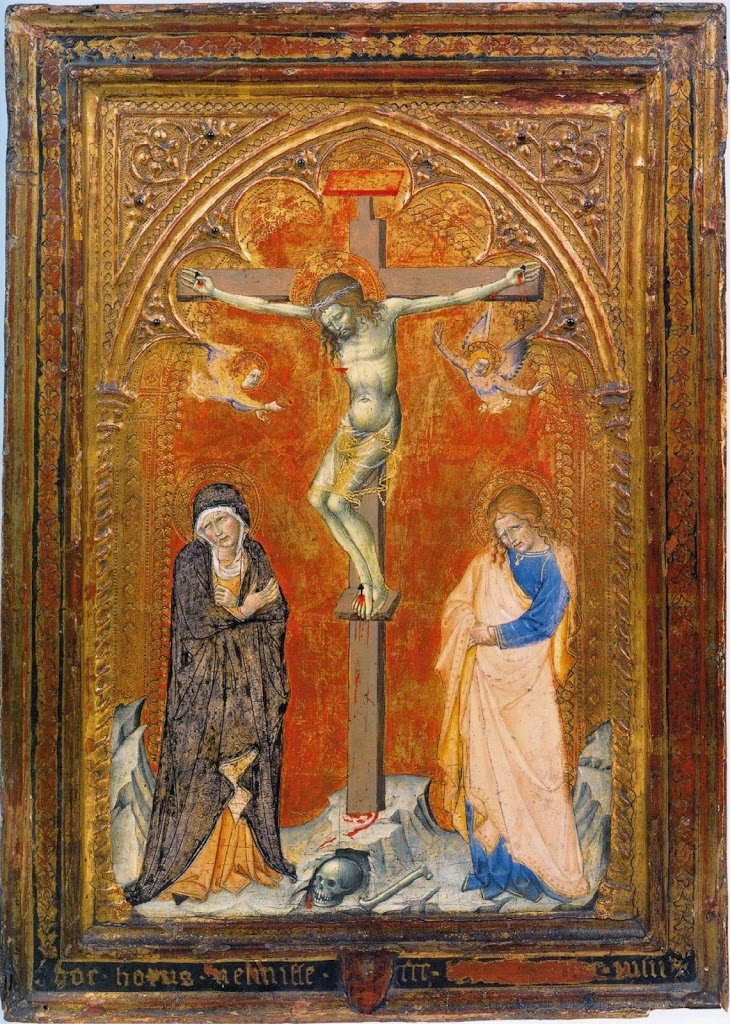 |
| Vannuccio Crucifixion with the Virgin and St John the Evangelist 1387-8, Philadelphia Museum of Art |
The indication of this place becoming a battle ground between heaven and earth is accentuated by the inclusion, in some cases, of angels and demons.
In most representations of the crucifixion, Mary, Jesus' mother, and John the Evangelist stand near the cross- an allusion to Jesus's wish that they should look after each other in John 19:26-27.
There was a gradual increase of the expression of Jesus's suffering over the second millennium AD, emphasising Jesus as Man. As the representation of Jesus's humanity increases, so too does Mary's. By the 15th century she has lost her stoic sadness and she faints with grief and horror. This accentuation of human emotion has an interesting, perhaps unpredicted, effect.
The more his human struggle is shown, the more people are able to 'identify' with Jesus, and, potentially, he with them. But the more human Jesus appears, the less god-like he is, and the more fragile is the faith that proclaims him divine. In that thin layer of painted skin that gives his expression sadness and pain, we recognise our own weakness, our inevitable failing, our eventual destruction.
Twenty-eight years ago I became aware that the Gospels were describing the life, torture and death of a political prisoner, one who had a radical religious message which threatened the power structures of his society. At the time I was involved in Amnesty International and just becoming aware of the horrible creativity expended on torture, whether by direct or indirect means.
The reason that the Christian church adopted the cross as a symbol of its faith intrigues me. The images of the crucifixion, and all the events surrounding it, vastly outnumber representations of the Easter resurrection in Western art (although the nativity scenes of the Virgin and Child do offer a counter balance). It seems almost gratuitous.
As a species we are fascinated by, and terrified of, death. As far as preoccupations go, it almost outweighs sex. We are interested principally in the death of others, not our own. Denial of the inevitability of one's own death coexists with this fascination. Perhaps we are adapted to pay so much attention, so that we learn how to avoid our own death for as long as possible.
Millions of people have died in agony, deliberately, at the hands of other people. It is not Jesus's death that makes him a powerful religious symbol. It is his choice of death rather than life. Maximillian Kolbe, a Polish Franciscan friar in Auschwitz, was inspired by Jesus's self denial to put himself in a condemned prisoner's place. The man was being sent into a cellar to die of starvation (retribution for the escape of three prisoners), but he cried out in grief for his family and Fr Kolbe chose to go in his place, dying so that another should live.
From acceptance of death, life emerges. Spring arrives. Life and goodness triumph.
Hold on to that thought while you read this rather depressing crucifixion poem.
White Horses on Green Hills
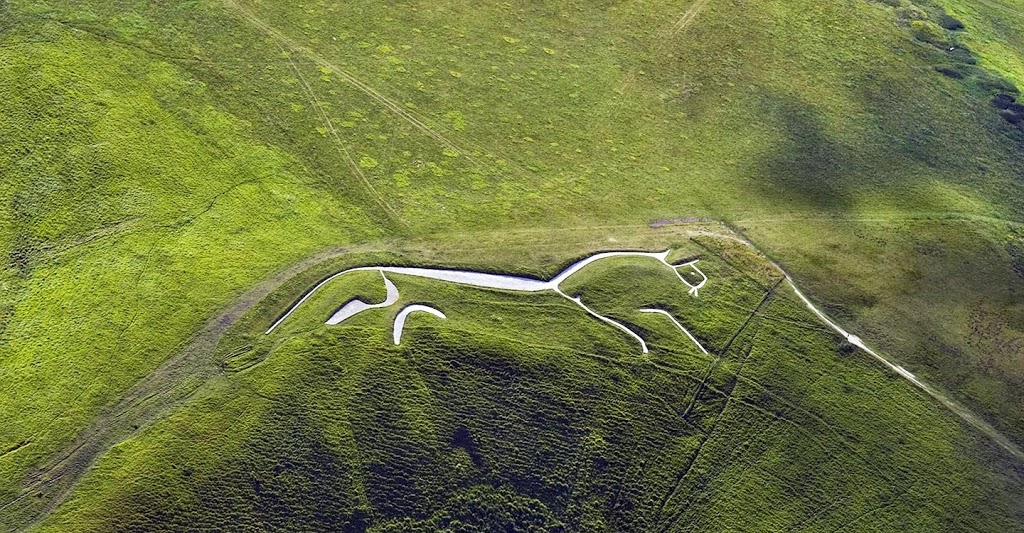 |
| The White Horse of Uffington, Oxfordshire, England approximately 1000BC |
The chalk horses that exist across areas of southern England are, in the main, the product of the 18th, 19th and 20th centuries. There is only one which has the evidence to support a prehistoric origin: the White Horse at Uffington (Bronze Age, approx. 1000BC), 110 metres long made of crushed chalk, close to the iron age hill fort of Uffington Castle, next to Dragon Hill where St George is said to have killed said dragon, and only a mile from Wayland's Smithy, a Neolithic long barrow and chamber tomb, in legend the home of the Saxon smith god, Wayland (Wolund).
What a landscape. What a monument. The horse straddles the hill side in a full-on gallop, stylised into its elements. Below it, the hill falls and fans in a series of elegant waves down to a sheltered area known as 'the Manger'.
 |
| Looking from the Ridgeway to the Manger |
The horse is, according to most scholars, a tribal emblem and territorial indicator carved out of the chalk hillside by either the Dobunni or Atrebates tribes. And one can readily see why they wished to lay claim to this fertile and beautiful place.
In a continuing cycle every seven years, the outline of the white horse must be groomed, scarified, and cleared of the encroaching vegetation. Most white horses, even those of quite recent origin, have accrued a fair or festival which coincides with the time when the work of clearance and renewal must be done. So caring for the horse was shared by people who were tied to the land, just as it is.
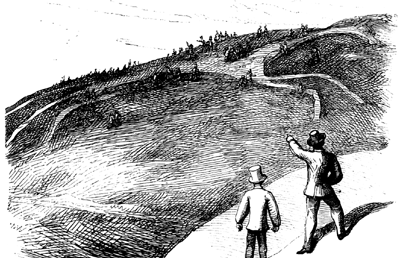 |
| The scouring of the White Horse (see link) |
http://www.berkshirehistory.com/archaeology/white_horse3.html
The horse is perpetually running and perpetually still, like written words which are silent and yet speak.
I have long been a slave to punctuation. The result of a good education and a few years spent as an English teacher. But there is a time to let go of what we have learnt and to embrace what we feel, and I have reached that point, at least in this very small matter.
For whatever reason, this poem about the chalk horse at Uffington refused to be punctuated. Partly alarmed and partly relieved, I was glad, at least, to have someone to blame: an inspirational workshop with poet Philip Gross in February which focussed on punctuation. Yes, there was a collective sigh of despair when the topic was announced, but, with his considerable wisdom, Philip Gross explained the subterranean life of the dots and dashes we use. The marks of writing are moments of possibility, of breathing, of joining, of separation.
But for me, punctuation had become more of a set of labyrinthine walls to negotiate than a place of departure or arriving. I identified the comma as my particular punctuation mark of shame.
Overuse being my principal shortcoming.
When I came to write about the White Horse, it soon became obvious that these words had no need of standard bits and bridles that tell the words where to start and stop. They would not be constrained in that way. The words wanted to be the White Horse, planted in its place on paper, but at the same time - free and wild.
I can see you on a summer night
shaking out your mane
from the turf
skittish on the slope
never slowing toward the fall
where you will slake your thirst
in black water
afterwards you might walk the rise
to Dragon Hill and cast your eyes
over this England
the smooth roads of its towns
the shredded plastic of its verges
the flattened carcasses
and turn away
ascend the old Ridgeway
drought-marked
chalk-dry
kept by the edge
of polished bronze
going east to Wayland’s forge
the cavelight barrow
where your nose stretches
for the scent of the old gods
firesmoke and slag
hammer and tongs
then newly shod
to canter the boundary west
ears pricked to Kingstone Coombes
and the gallops east
to Ram’s Hill
declaring all is yours
to Idlebush
land claimed under your hooves
falls like water
down the crumbling hills
fresh earth and scree
the moon on your whiteness
the dark of years streaming
from your mane
Kate Innes
The Horse
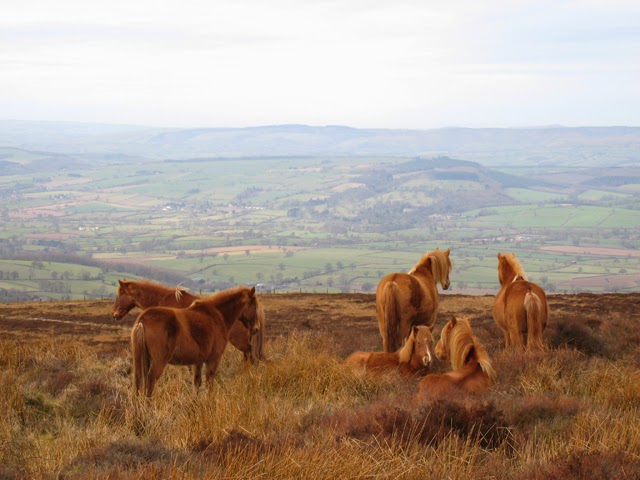 |
| Wild Horses on Abdon Burf, Brown Clee Hill, Shropshire |
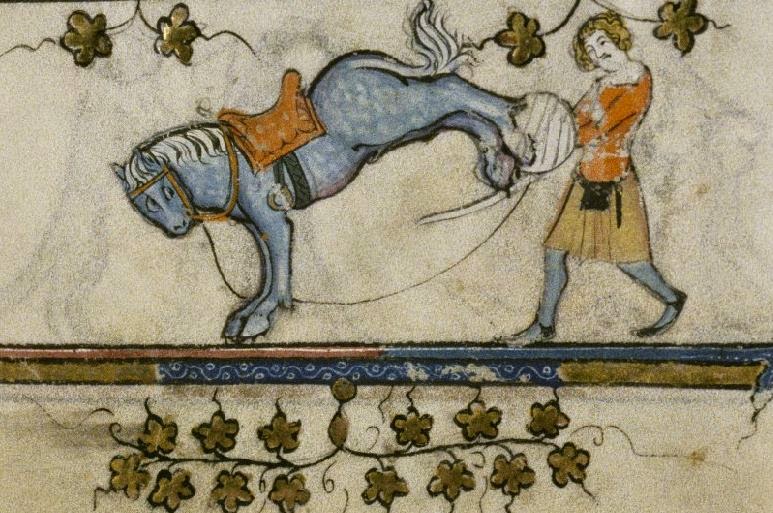 |
| A horse tells his fallen rider exactly what he thinks of him, from MS Bodl 264, the Romance of Alexander early 14th century |
 |
| A crusading knight (possibly Henry III) gives homage, accompanied by his horse from the Westminster Psalter 13th century, BL Royal 2 A XXII |
Spring Lamb
I must admit to having conflicted feelings when I see the new lambs in the fields at this time of year. With my urban sensibilities, it worries me that so new a creature with so little in the way of protection is outside in the British weather. Along with this overly mothering attitude, I also understand that many of them will not live out the year, and that my enjoyment of curried and roast lamb is at odds with my protective feelings toward them. And then there is the sheer gratitude that spring is here, embodied in the bright, gangling, fragile lambs.
When I was a young child one of my favourite records included a version of the William Blake poem 'The Lamb' (Songs of Innocence and Experience) set to music by Carly Simon and her sister Lucy, rather surprisingly.
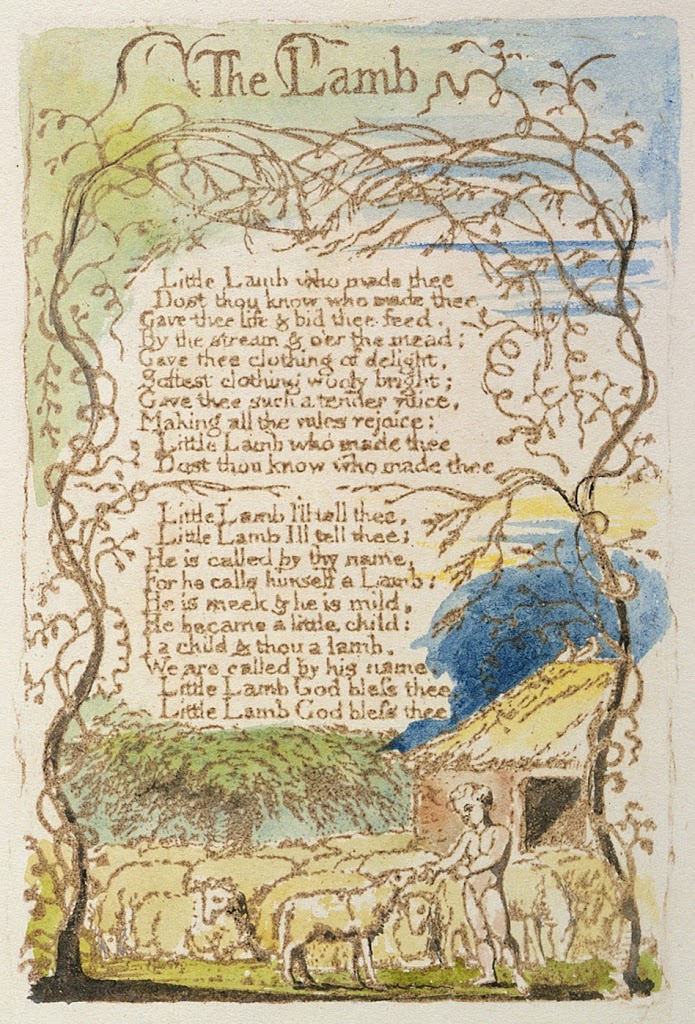 |
| One of the prints made by Blake for his book "Songs of Innocence and Experience" 1789 |
Blake speaks of Jesus as a lamb and a little child. He assumes that his audience knows enough of Christian belief to understand that Jesus' death on the cross was (for Christians) the climax in a long line of sacrifices of innocents. For thousands of years in many cultures, the lamb has been a symbol of peace, innocence and sacrifice. The purity and beauty of the lamb made the sacrifice valid. The animal had to be spotless for it to have enough worth to placate the deity.
Lambs and sheep have an impressive portfolio of symbolic roles. In the Pre-Raphaelite painting by William Holman Hunt, The Hireling Shepherd, the artist explores Jesus' claim to be the good shepherd and not a hireling, who cares nothing for the sheep. In the painting the sheep are wandering just as much as the shepherd's mind and hands. He attempts to seduce a shepherdess, who is distracted enough to let the tame lamb eat the apples in her lap (an allusion to giving into temptation) and the flock is beginning to eat the corn in the nearby field. Neither corn nor apples are good for sheep. Eating them can be fatal.
Controversial at the time due to its earthy subject matter, Hunt was forced to explain that the painting was allegorical, and was actually a criticism of neglectful pastors who did not instruct and look after their flock. In this painting, we the general public are represented by sheep and lambs. We, like them, need good leaders, not those distracted by their own pleasures and gain. We need leaders who will not allow us to walk blithely into our own ruin. As true now as it was then, in so many areas of life.
Lambs carry quite a symbolic load, and all the while being one of the staples of our meat-loving diet, bred in their tens of thousands for mass consumption.
But somehow the individual animals manage to supersede their singular purpose for living and their heavy religious duties. Through their exuberance, genial character, and their perfect fit in the landscape, they embody all that we hope for in Spring: energy, beauty and joy.
covered in a crochet of silky wool,
Speaking to the birds
St Francis (AD1181/2 - 1226) is the patron saint of animals and ecology. He saw nature as a mirror of God. In this sense he differed from most religious medieval thought. Many saints are connected with animals in some way, for example St Eustace (the stag) and St Melangell (the hare). The ability to tame or speak to wild animals is a sign of divine or supernatural power in most cultures and mythologies; Harry Potter speaking to snakes being a recent example. But St Francis was unique in considering animals as his equals, calling them brother and sister, and ascribing understanding to them and the ability to have a relationship with God.
One of the most famous stories about him tells that when he was travelling and saw a tree full of birds, he began to preach to them. The birds came down from the tree and gathered around him to listen. This became a popular motif in Medieval art, as it showed St Francis's humility as well as his special divine power and wisdom.
https://www.flickr.com/photos/tonyynot/7741370022/in/gallery-adfinem-72157630886234870/
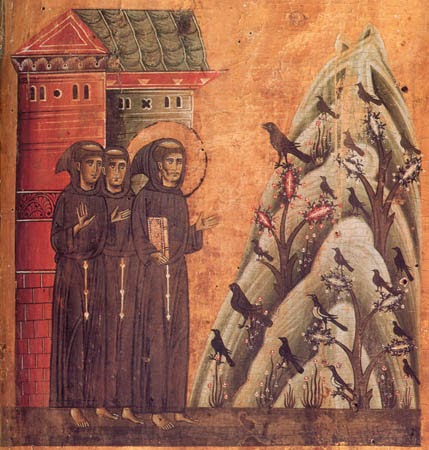 |
| From the Berlinghieri Altarpiece, 1235 Church of San Francisco, Pescia, Italy |
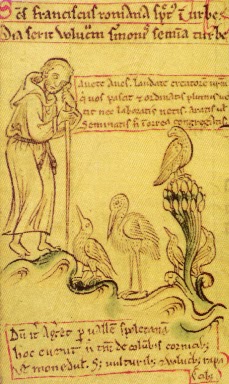 |
| From the Chronica majora of Matthew Paris, Corpus Christi College, Cambridge (notice the speech bubbles for St Francis and the birds!) |
But I am interested in this story for a slightly different reason. According to the Little Flowers of St Francis (based on 13th century sources but only found in 15th century manuscripts), the saint's sermon exhorted the birds to praise God because of all the ways God looks after them, giving them good clothing, places to drink, eat and rest. St Francis cautioned the birds against the sin of ingratitude. In essence, he spoke to them as if they were human.
Can an animal be grateful? Can an animal be ungrateful? It is an interesting thought that in ascribing to animals the status of brother and sister, St Francis also ascribed to them the sins of humanity. If an animal (most often cats, in my experience!) behaves ungratefully or takes things for granted, we usually ascribed this to its nature not to some moral or spiritual failing. Although we still look for human characteristics in animals.
Recently I saw a clip from the Jane Goodall Institute of the release of a chimpanzee, Wounda. http://youtu.be/SGAiAwqdDgg
It is hard to view this video without feeling that the chimpanzee had some sense of thankfulness (especially with the emotional music in the background), although it probably also needed reassurance in a strange environment. We seek human patterns of behaviour in animals, longing for understanding, trust and connection.
The work of domestication has allowed us to share our lives with animals, without becoming their prey. Having domestic animals has certainly added to our understanding of animal behaviour, but these fundamental questions persist: How close are we? How far apart?
It seems to me that the more we anthropomorphise animals, (those little outfits for dogs are one particularly irksome example) the less we allow them to be wild, with their own adapted behaviour in their own wild habitats. Understanding animals was never more important than now, when so many of them are disappearing into the human wasteland our kind has created.
Sleeping Dogs
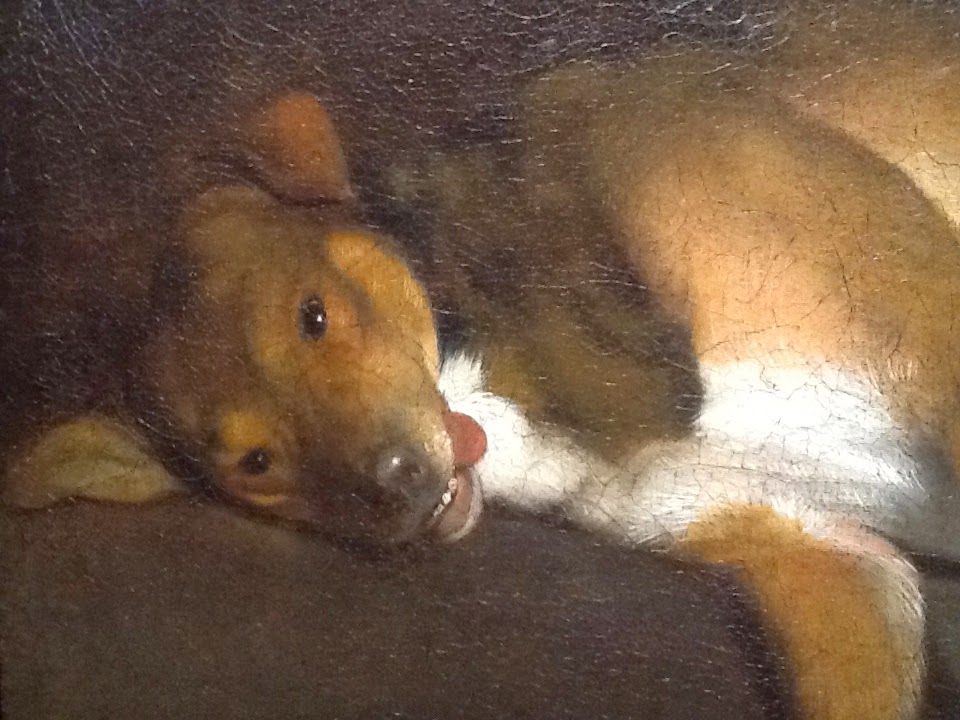 |
| A Dog lying on a Ledge by a Genoese Artist (circa 1650-1680) Ashmolean Museum, Oxford |
This painting caught my eye when I was last in the Ashmolean Museum in Oxford. The unknown artist has captured the dog just as it wakes and before it has become alert. It lies on a cracked ledge in a city street, somewhere in the 17th century. The Ashmolean online catalogue describes it as a 'plebeian' dog, a rare depiction of such an everyday creature at a time when the aristocracy commissioned paintings of expensive horses and hounds to display their wealth and status. The artists Van Dyck and (later) George Stubbs would become masters of that genre.
 |
| The Spanish Pointer - George Stubbs Neue Pinakothek, Munich (one is in no doubt that the owner of this dog also owned all of this beautiful landscape) |
But the Ashmolean painting is of a nameless dog, owner (if any) unknown, by a mysterious artist. Anonymous in every way and shown at its most vulnerable. The bare patches on a dog's 'knees' and 'shoulders' are there, the shine of a wet nose, the ears askew and the protruding pink tongue that says 'I might be asleep, but that does not mean I wouldn't appreciate some food'. If you go on this website you will see the detail that I was unable to capture with my iPad. http://www.ashmolean.org/ash/objects/makedetail.php?pmu=730&mu=732>y=asea&sec=&dtn=15&sfn=Artist%20Sort,Title&cpa=1&rpos=0&cnum=&mat=&pro=&anum=&art=&ttl=a%20dog%20lying%20on%20a%20ledge&sou=
This painting, despite the subject being a mongrel on the streets, was owned in the 19th century by Louis-Philippe of France and displayed in his famous Spanish Gallery. One reason, apart from its appeal as an example of trompe l'oeil, may be that it is a very honest painting. It does not flatter, but neither does it denigrate. The dog is painted with a flash of real life in its eyes, and all dog owners will recognise that moment, no matter what breed they live with, when the dog is completely relaxed and at its most elemental.
The descendants of the dog in the painting can be found making their way through towns and cities across Europe, sleeping where and when they can amongst the noise and hazards of human society. They are opportunists, always hungry, and willing to befriend those who treat them with a degree of kindness and generosity.
As creatures of instinct, they are able to act according to their needs without the self-consciousness that plagues us.
Perhaps that is why we delight in watching them sleep.
The Wild Wood
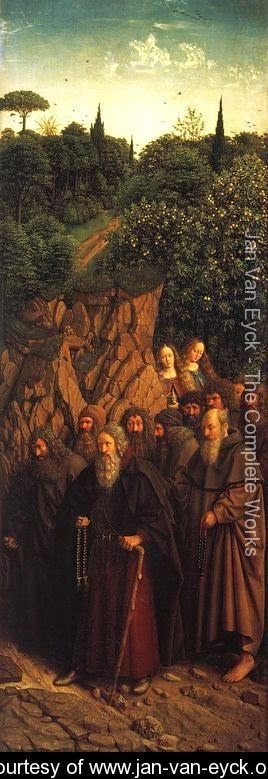 |
| The Ghent Altarpiece - Jan Van Eyck and Hubert Van Eyck- The Holy Hermits, 1432 |
Ignore, if you can, the procession of hairy men in the bottom half of the painting (at least for the moment). Concentrate on the woods and the sky. If you click on this link you can see the extraordinary detail. http://closertovaneyck.kikirpa.be/#viewer/id1=41&id2=0
Somehow Jan Van Eyck painted the leaves, fruit, branches, shadows and bark of that forest so tenderly that the viewer can stand on that path and walk through those trees. http://closertovaneyck.kikirpa.be/#viewer/sync=3&view=1&id1=41&scale1=0.0256¢erX1=631.875¢erY1=1581.6875
And once there, on the darkening path between the trees, look up to the glowing sky and watch the circling doves and wheeling swallows.
For me there is something profoundly exciting about seeing a forest from a little distance. It fills me with longing. I first remember feeling this way as a child in Connecticut. I would sit on the school bus, day after day, looking out of the window as we drove past miles of woodland and wish that I could run through those curtains of branches rather than spend all day sitting in an overheated room under fluorescent lights. The forest of the imagination is still with me, a tingling alternative to the patterned parade of human habitations. Inside the concealing branches, I can touch wave upon wave of leaves, fronds, buds, flowers, foaming moss, spreading fungi, concealed glades and secret streams.
In this panel from the Ghent Altarpiece we see a procession of 'holy hermits' coming out of the woods in order to worship the lamb of God represented in the central panel. Hermits take themselves out of normal human society and live in the wild in order to concentrate on the world of the spirit. They may choose a mountain, cave or glade in the woods, or in the case of Fred (Jozef Stawinoga), a tent amongst the trees on a roundabout on the Wolverhampton ring road http://www.bbc.co.uk/programmes/b0510d9t . A few trees can transform an epicentre of dirty, noisy traffic into a piece of wilderness to rest a troubled mind.
In the forest, trees, not humans, are the dominant species. The tradition of going into the wild woods and emerging transformed is as fundamental to fairy tales, and other fictions, as it is to religious traditions. Across Medieval Europe the motif of the wodewose (wild man of the woods) flourished, a common character in literature and the visual arts.
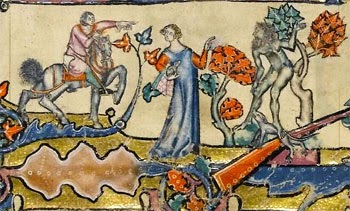 |
| A man and woman with a dog meet a Wodewose, circa 1330 The Macclesfield Psalter, folio 85r The Fitzwillaim Museum |
 |
| Burgos Cathedral, Northern Spain 13th century |
Many old tales tell of men, horrified by the evil they have done or stricken by grief, who go to the forest and become a wild man, eating only plants and raw meat, growing hair in all the wrong places and generally leaving their human reason for a period of time (Arthurian examples include Yvain and Merlin). In the forest, it was expected that the normal rules of society and civilisation would be suspended. It was also expected that the forest would do its work, turning the anguished into the accepting, healing the grieving, and making a stronger, wiser person of those that survived (sometimes a beautiful maiden conveniently turns up to help).
Searching for an explanation, I believe that the memory of living in the forest is still strong in our species. Jungles and forests are where we came from in primate evolutionary terms. They are where we cache our wildness now. Literally they are our life breath for the future. But for me they will always be a symbol of what we love and reject, our own wild nature, our connection with all other forms of life.


